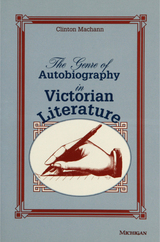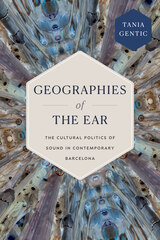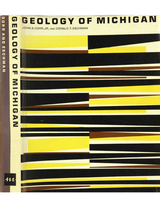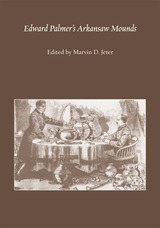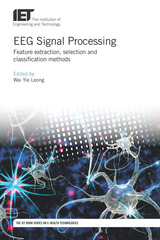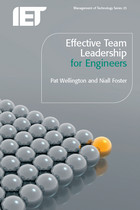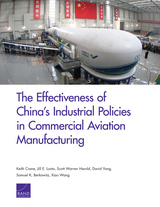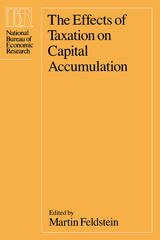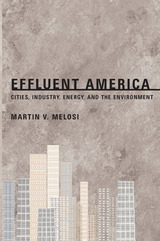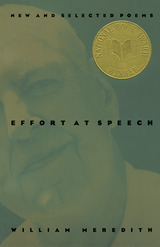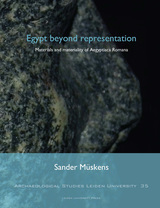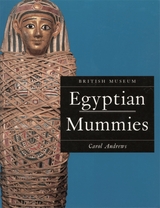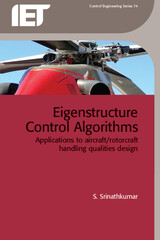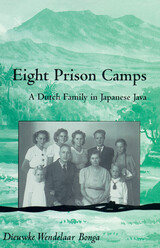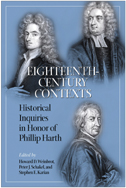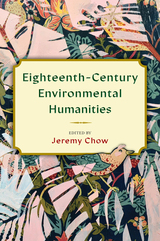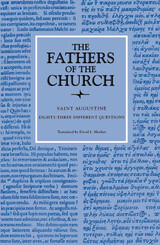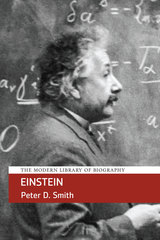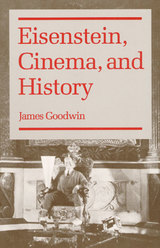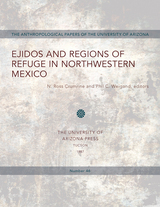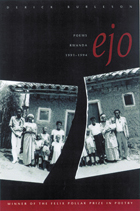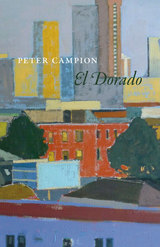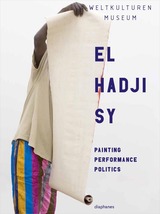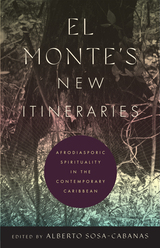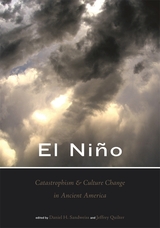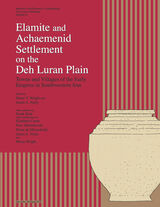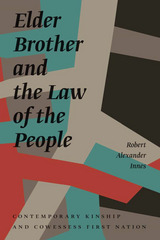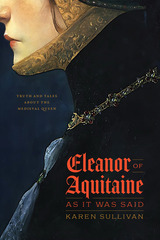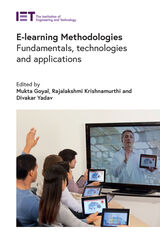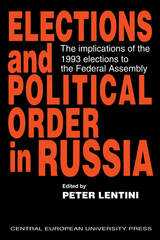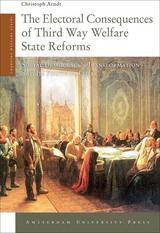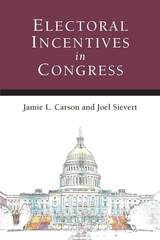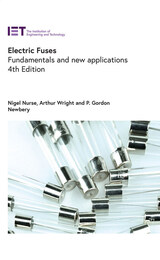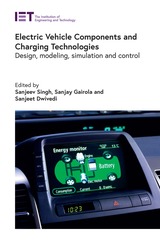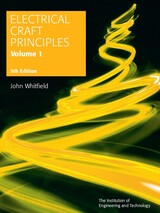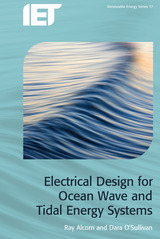 Edward Lear as a Landscape Draughtsman
Philip Hofer
Harvard University Press Edward Lear, while probably best known as the author of The Owl and the Pussycat and the famous Nonsense Books, was by profession a draughtsman and painter. For over fifty years after 1836, from the age of twenty-four, he spent much of his life traveling or in residence abroad, producing thousands of sketches and drawings, some of which he later elaborated or used as studies for paintings. He is now belatedly becoming recognized as one of the best topographical draughtsmen of his day.
Philip Hofer has long been an admirer and collector of the works of Edward Lear. He here presents a selection of Lear's landscape drawings chosen from his own collection and from the more than four thousand in the Harvard collection, which is the most extensive in the world. Hofer, whose constant concern has been in large part responsible for the excellence of this collection, introduces the plates with a biographical sketch of Lear, an extensive treatment of his development as a landscape draughtsman, and an appraisal of his work. He then reviews the growing appreciation of Lear's drawings and the present status of Lear collections both here and abroad, and adds a brief selected bibliography.
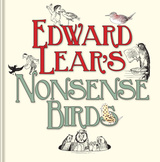 Edward Lear's Nonsense Birds
Edward Lear
Bodleian Library Publishing, 2013 The Stripy Bird. The Scroobius Bird. The Obsequious Ornamental Ostrich who wore boots to keep his feet quite dry. Of all the animals that sprang from the idiosyncratic imagination of Edward Lear, few feature as frequently as birds, which appear throughout his work, from the flamboyant flock in the Nonsense Alphabet to the quirky avian characters of his limericks, stories, and songs. Lear drew himself as a bird on numerous occasions. In a popular self-portrait—later reproduced on a postage stamp—Lear even represented himself as a portly, bespectacled bird.
Edward Lear’s Nonsense Birds collects more than sixty of Lear’s bird illustrations from across his entire body of work. Often, the birds have hilariously human characteristics. There is, for instance, a Good-Natured Grey Gull, a Hasty Hen, and a Querulous Quail. The Judicious Jay is chiefly concerned with good grooming. The Vicious Vulture, meanwhile, turns out to be a wordsmith whose verses on vellum celebrate veal. Each bird is endowed with a unique personality, while collectively they form a wonderfully amusing flock. Also included are a series of twenty-four hand-colored illustrations.
Bright and beautifully illustrated, this book will make a perfect gift for children of all ages and will also be welcomed by all who love Lear’s work or are interested in learning more about his fascination with birds.
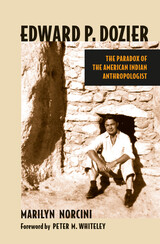 Edward P. Dozier: The Paradox of the American Indian Anthropologist
Marilyn Norcini
University of Arizona Press, 2007 Edward P. Dozier was the first American Indian to establish a career as an academic anthropologist. In doing so, he faced a double paradox—academic and cultural. The notion of objectivity that governed academic anthropology at the time dictated that researchers be impartial outsiders. Scientific knowledge was considered unbiased, impersonal, and public. In contrast, Dozier’s Pueblo Indian culture regarded knowledge as privileged, personal, and gendered. Ceremonial knowledge was protected by secrecy and was never intended to be made public, either within or outside of the community. As an indigenous ethnologist and linguist, Dozier negotiated a careful balance between the conflicting values of a social scientist and a Pueblo Indian.
Based on archival research, ethnographic fieldwork at Santa Clara Pueblo, and extensive interviews, this intellectual biography traces Dozier’s education from a Bureau of Indian Affairs day school through the University of New Mexico on federal reimbursable loans and graduate school on the GI Bill. Dozier was the first graduate of the new post–World War II doctoral program in anthropology at the University of California at Los Angeles in 1952. Beginning with his multicultural and linguistic heritage, the book interprets pivotal moments in his career, including the impact of Pueblo kinship on his indigenous research at Tewa Village (Hano); his rising academic standing and Indian advocacy at Northwestern University; his achievement of full academic status after he conducted non-indigenous fieldwork with the Kalinga in the Philippines; and his leadership in establishing American Indian Studies at the University of Arizona. Norcini interprets Dozier’s career within the contexts of the history of American anthropology and Pueblo Indian culture. In the final analysis, Dozier is positioned as a transitional figure who helped transform the historical paradox of an American Indian anthropologist into the contemporary paradigm of indigenous scholarship in the academy.
Edward Palmer's Arkansaw Mounds
Edited and preface by Marvin D. Jeter
University of Alabama Press, 2010 "This thoroughly researched volume is highly recommended to anyone—at any level—who is interested in the archaeology of the Southeast." —CHOICE
During the 1880s a massive scientific effort was launched by the Smithsonian Institution to discover who had built the prehistoric burial mounds found throughout the United States. Arkansaw Mounds tells the story of this exploration and of Edward Palmer, one of the nineteenth century’s greatest natural historians and archaeologists, who was recruited to lead the research project. Arkansas was unusually rich in prehistoric remains, especially mounds, and became a major focus of the study. Palmer and his team of researchers discovered that the mounds had been built by the ancestors of the historic North American Indians, shattering the then-popular theory that a lost non-Indian race had built them.
Edward Said: A Memorial Issue, Volume 24
Patrick Deer, Gyan Prakesh & Ella Shohat, eds.
Duke University Press Through his work as a scholar, as a critic, and as a political commentator, Edward Said asked insistently: Who speaks? For what and whom? How does an intellectual articulate his or her place in the West? Or in the developing world? What is the specific contribution and intervention to be made by the intellectual? This Social Text special issue in memory of Said examines how he challenged established authority and identity with these questions and shaped a culture of criticism.
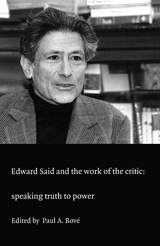 Edward Said and the Work of the Critic: Speaking Truth to Power
Paul A. Bové, ed.
Duke University Press, 2000 For at least two decades the career of Edward Said has defined what it means to be a public intellectual today. Although attacked as a terrorist and derided as a fraud for his work on behalf of his fellow Palestinians, Said’s importance extends far beyond his political activism. In this volume a distinguished group of scholars assesses nearly every aspect of Said’s work—his contributions to postcolonial theory, his work on racism and ethnicity, his aesthetics and his resistance to the aestheticization of politics, his concepts of figuration, his assessment of the role of the exile in a metropolitan culture, and his work on music and the visual arts. In two separate interviews, Said himself comments on a variety of topics, among them the response of the American Jewish community to his political efforts in the Middle East. Yet even as the Palestinian struggle finds a central place in his work, it is essential—as the contributors demonstrate—to see that this struggle rests on and gives power to his general "critique of colonizers" and is not simply the outgrowth of a local nationalism. Perhaps more than any other person in the United States, Said has changed how the U.S. media and American intellectuals must think about and represent Palestinians, Islam, and the Middle East. Most importantly, this change arises not as a result of political action but out of a potent humanism—a breadth of knowledge and insight that has nourished many fields of inquiry. Originally a special issue of boundary 2, the book includes new articles on minority culture and on orientalism in music, as well as an interview with Said by Jacqueline Rose. Supporting the claim that the last third of the twentieth century can be called the "Age of Said," this collection will enlighten and engage students in virtually any field of humanistic study. Contributors. Jonathan Arac, Paul A. Bové, Terry Cochran, Barbara Harlow, Kojin Karatani, Rashid I. Khalidi, Sabu Kohsu, Ralph Locke, Mustapha Marrouchi, Jim Merod, W. J. T. Mitchell, Aamir R. Mufti, Jacqueline Rose, Edward W. Said, Gayatri Chakravorty Spivak, Lindsay Waters
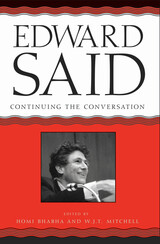 Edward Said: Continuing the Conversation
Edited by Homi K. Bhabha and W. J. T. Mitchell
University of Chicago Press, 2005 In Edward Said: Continuing the Conversation, Edward Said's long-time friends and collaborators continue their dialogue with Said where they had left off following his death in the fall of 2003.
The essays, imagining and recalling the cadences of Said's conversation, take various forms, including elaborations on his ideas, applications of his thought to new problems, and recollections of the indescribable electricity that made conversation with him intense and memorable. This lively, personal tone is a direct result of editors Homi Bhabha and W. J. T. Mitchell urging contributors to write in the spirit of a conversation interrupted, a call on hold, a letter waiting for a reply, a question hanging in the air. This is a work of immense imaginative and intellectual force and compelling candor, honoring Said's legacy as an activist intellectual.
This collection includes essays by Lila Abu-Lughod, Daniel Barenboim, Akeel Bilgrami, Paul Bové, Timothy Brennan, Noam Chomsky, Ranajit Guha, Harry Harootunian, Saree Makdisi, Aamir Mufti, Roger Owen, Gyan Prakash, Dan Rabinowitz, Jacqueline Rose, and Gayatri Spivak.
 Edward Sorin
Marvin R. O'Connell
University of Notre Dame Press, 2001 This sweeping volume offers the definitive account of the life and labors of Edward Sorin, founder of the University of Notre Dame. Born in the west of France in 1814, Sorin was ordained in 1838 and joined the newly founded Congregation of Holy Cross shortly thereafter. In 1841, Father Sorin, along with six Holy Cross brothers, was sent to establish a mission in Indiana. After a year's service in the Vincennes diocese's fledgling parochial schools, Sorin was offered a tract of land in the diocese's northernmost section--on the condition that a college be situated there. Father Sorin and his companions arrived at the lakeside property, located near the south bend of the St. Joseph River, in November 1842.
The next year, the state of Indiana granted a charter to what Sorin proudly and reverently called the University of Notre Dame du Lac. In its early days, Father Sorin's "university" was composed of a few log shacks and a handful of half-educated brothers, only a few of whom could speak English. There was no money and hardly any students.
But Father Sorin, by sheer willpower, was determined that his university would prosper. Marvin O'Connell writes, "So confident was he in his own powers, so sure of the ultimate righteousness of his goals, so deep his faith that God and the Virgin Mary had summoned him to America to accomplish this great work, that no obstacle could confound him. He was capable of duplicity, pettiness, and even ruthlessness. But for sheer courage, and for the serene determination that courage gives birth to, he was hard to match."
Little by little, Notre Dame evolved in its curriculum and pedagogical standards. At the same time, another evolution was taking place. Sorin came to America as a missionary first and an educator second. What began in Sorin's mind as an institution that could monetarily support the work of the Holy Cross mission, instead took center stage in a way that Sorin could never have anticipated.
Flexible as always though, he readily adapted to this changing reality and began the development of the Notre Dame we know today. Basic to Father Sorin's success in this regard was his willingness to give free rein to gifted colleagues--men more intellectually sophisticated than himself--and his intuitive understanding of, and growing love for, the unique character of American culture.
Edward Sorin is a lively, colorful history of the man who overcame great odds to found and grow one of the world's premier Catholic institutions of higher learning.
MARVIN R. O'CONNELL is professor emeritus of history at the University of Notre Dame and author of numerous books, including John Ireland and the American Catholic Church and Blaise Pascal: Reasons of the Heart.
"Fr. Edward Sorin, C.S.C., brought the Congregation of Holy Cross--priests, brothers, and sisters--to the United States in the 1840s, founded the University of Notre Dame, and served as his international community's Superior General for the last twenty-five years of his life. In this scholarly, absorbing, and well-written biography, Fr. Marvin O'Connell brings to life the extraordinary labors and accomplishments of this dedicated missionary, educator, builder, controversial administrator, and widely influential American churchman." --Thomas Blantz, C.S.C., professor of history, University of Notre Dame
"Marvin O'Connell's mastery of the sources, his critical but sympathetic insight, and his extraordinary gifts as a stylist, bring us face to face with one of the true giants of American Catholic history. Founding the University of Notre Dame and guiding its survival for half a century was Edward Sorin's crowning achievement. But to be fully understood it must be seen against the background of spiritual crises, conflicts of interest, and clashes of personality set forth so vividly in this book. It is a fascinating story, magnificently told." --J. Philip Gleason, professor emeritus of history, University of Notre Dame
----------
"An against the odds tale of how Sorin came to found one of the world's premier Catholic institutions of higher learning." --Publishers Weekly
"A skilled biographer and professor emeritus of history at Notre Dame, O'Connell honors the legacy of Edward Sorin with blunt honesty and fraternal esteem. Sorin was given the task of creating a college, and in a short 800 pages the reader enters into the world of 19th-century Catholicism and experiences Sorin's challenges and joys as he faced this daunting goal. This encyclopedic work is both engaging and academic and destined to be the definitive work on Edward Sorin." --Library Journal
"O'Connell is one of the finest story-tellers of our day, with a craftsman's handling of the language. This work is a fine tribute to Sorin, to the university which he founded, and to the many fine men and women associated with Holy Cross over the years." --Catholic Historical Review
"This work is well written, blending historical facts with delightful stories and the humor of human foibles." --Catholic Southwest
"Magisterial … [Sorin] was a man composed of equal parts St. Paul and Tom Sawyer." --Wall Street Journal
"Father Marvin R. O'Connell gives the life of this amazing man its due in this definitive biography that at times reads more like an adventure." --Notre Dame Magazine
"History in Indiana captured in detail." --Indianapolis Star
"Edward Sorin has long enjoyed a somewhat mythical status among Notre Dame alumni and many American Holy Cross religious. O'Connell's biography at times dispels the myth and at other times grounds it in evidence." --America
"The satisfying story O'Connell weaves of the obstacles Sorin overcame to secure the survival of his college ... is the result of some painstaking research, an ear for effective anecdotes, and a palpable emotional attachment to the consequences of Sorin's efforts. This biography is a history of Notre Dame that has nothing to do with football, and that, all by itself, is reason enough to check it out." --Virginia Quarterly Review
"To say that I liked the book is the understatement of the year. O'Connell has a gift for synthesizing details and supplying sufficiently succinct background information to enable the reader to understand such necessary factors as the French Revolution and its effect on nineteenth century France and the Church in that country; the differing impact that the Revolution had on the families of Sorin and Moreau; the contrasts in seminary training of both men and the resulting spirituality of each one; the nature of the American Church; the ‘disobedience' of Sorin and of Moreau...." --Holy Cross History
"This work will surely stand as Sorin's definitive biography." --H-Net: Humanities and Social Science Reviews OnLine
"Tracing the astonishing career of this remarkable man has produced not only a definitive biography but a model of how good history should be written. [H]is well crafted, sympathetic narrative is a terrific read.... O'Connell's magnificent biography, priced reasonably, is a treasure." --Catholic Library World
"This is a great book, extremely well written, about a great man who made an enormous difference." --Theological Studies
"The thirty chapters of this book are thoroughly researched and beautifully crafted with rhapsodic descriptions of the place, complex character development and a fine sense of pacing. It reads like a good novel." --American Historical Review
"Anyone interested in the origins of the University of Notre Dame will cherish this excellent biography of Fr. Edward Sorin. Edward Sorin can be highly recommended. It deserves a place of honor in any well-stocked library." --Cistercian Studies Quarterly
"Complemented by 40 pages of photos and very through index, this biography of Edward Sorin yields endless rewards and insights fir dedicated readers." --St. Anthony Messenger
"O'Connell's theme is the tug-of-war between two complex personalities, Sorin the obstinate aristocrat and Moreau the quarrelsome peasant. This approach is instructive because their competition serves as a paradigm for a larger issue in American history: the struggle of European institutions -- in this case, a religious congregation--to adapt to the American environment. It is an old story, but one to which an important chapter has been added by this excellent biography." --The Journal of American History
"With the precision of a calligrapher and the lyrical voice of a librettist, Notre Dame professor emeritus Marvin R. O'Connell has crafted a monumental biography... of Edward Sorin. O'Connell's biography is a respectful and balanced account of a preeminent nineteenth-century Catholic churchman. The student of higher education will find much of interest here in the anecdotal accounts of Notre Dame's development under Sorin's leadership...." --History of Education Quarterly
 Edward Stanly: Whiggerys Tarheel Conquer
Norman Brown
University of Alabama Press, 1974 A Southern Whig, a Unionist firebrand—Edward Stanly’s fight for principle in a fractured nation.
This biography of Edward Stanly relates the major political events of his life: his emergence, while still in his twenties, as a fiery and controversial leader of the Whig Party in North Carolina, his role as one of the ablest champions of Whiggery in the United States House of Representatives, 1837–1843; his candidacy for governor of California on the Republican ticket in 1857; his appointment by President Abraham Lincoln as military governor of North Carolina in 1862; and his support in California of President Andrew Johnson’s Reconstruction policy.
Raised under the “Ancient Standard of Federalism,” Edward Stanly was a southern nationalist in the tradition of the two great Virginia Federalists, George Washington and John Marshall. An outspoken opponent of the nullification and secession doctrines of party of section in national politics.
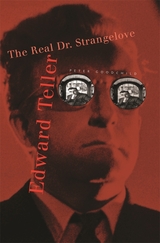 Edward Teller: The Real Dr. Strangelove
Peter Goodchild
Harvard University Press, 2004 One Nobel Prize–winning physicist called Edward Teller, “A great man of vast imagination…[one of the] most thoughtful statesmen of science.” Another called him, “A danger to all that is important… It would have been a better world without [him].” That both opinions about Teller were commonly held and equally true is one of the enduring mysteries about the man dubbed “the father of the H-bomb.” In the story of Teller’s life and career, told here in greater depth and detail than ever before, Peter Goodchild unravels the complex web of harsh early experiences, character flaws, and personal and professional frustrations that lay behind the paradox of “the real Dr. Strangelove.”
Goodchild’s biography draws on interviews with more than fifty of Teller’s colleagues and friends. Their voices echo through the book, expressing admiration and contempt, affection and hatred, as we observe Teller’s involvement in every stage of building the atomic bomb, and his subsequent pursuit of causes that drew the world deeper into the Cold War—alienating many of his scientific colleagues even as he provided the intellectual lead for politicians, the military, and presidents as they shaped Western policy. Goodchild interviewed Teller himself at the end of his life, and what emerges from this interview, as well as from Teller’s memoirs and recently unearthed correspondence, is a clearer view of the contradictions and controversies that riddled the man’s life. Most of all, though, this absorbing biography rescues Edward Teller from the caricatures that have served to describe him until now. In their place, Goodchild shows us one of the most powerful scientists of the twentieth century in all his enigmatic humanity.
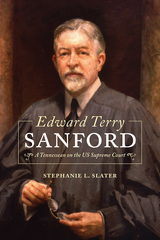 Edward Terry Sanford: A Tennessean on the US Supreme Court
Stephanie L. Slater
University of Tennessee Press, 2018 In Edward Terry Sanford: A Tennessean on the U.S. Supreme Court, Stephanie Slater uncovers the life and work of Edward Terry Sanford (1865–1930), the only Supreme Court justice who obtained his undergraduate degree from the University of Tennessee. Born and raised in Knoxville, Sanford served as an associate justice on the United States Supreme Court from 1923 until his death in 1930. He was one of only six Tennesseans to serve on the nation’s highest Court.
Slater’s delineation of Sanford’s contributions to the legal profession illuminates one of Tennessee’s favorite sons whose story had, until now, been largely left in the dark. Slater frames Sanford’s personality and jurisprudence in a post-Civil War and Taft-era context, one that helps readers better understand both the man and his contributions to the Supreme Court.
From Slater’s important work we learn about Sanford’s early upbringing, the lasting impression a largely pro-Union East Tennessee would leave upon Sanford, his rise from a skilled lawyer to federal judge during the rapid industrialization of Knoxville and the surrounding area, and his eventual appointment to the Supreme Court. Within Sanford’s rich legacy is the pivotal role he played in writing the majority opinion in the landmark 1925 case, Gitlow v. New York, a decision which became a critical legal precedent for the expansion of civil rights and civil liberties in the 1950s and 1960s.
Slater provides a keen look into the life of a Knoxville native whose life and career may now be appreciated and studied by a new generation. Sanford, his character, and his life as a Tennessean on the Supreme Court are sure to intrigue legal scholars, students of Tennessee culture and history, and general audiences alike.
Stephanie L. Slater, a three-time graduate of the University of Tennessee, has worked in the state and federal court systems in Tennessee since obtaining her J.D. in 1990. Her articles have appeared in the Journal of Supreme Court History and Tennessee Law Review.
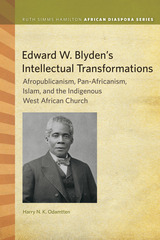 Edward W. Blyden's Intellectual Transformations: Afropublicanism, Pan-Africanism, Islam, and the Indigenous West African Church
Harry N. K. Odamtten
Michigan State University Press, 2019 Distinguished by its multidisciplinary dexterity, this book is a masterfully woven reinterpretation of the life, travels, and scholarship of Edward W. Blyden, arguably the most influential Black intellectual of the nineteenth and early twentieth centuries. It traces Blyden’s various moments of intellectual transformation through the multiple lenses of ethnicity, race, religion, and identity in the historical context of Atlantic exchanges, the Back-to-Africa movement, colonialism, and the global Black intellectual movement. In this book Blyden is shown as an African public intellectual who sought to reshape ideas about Africa circulating in the Atlantic world. The author also highlights Blyden’s contributions to different public spheres in Europe, in the Jewish Diaspora, in the Muslim and Christian world of West Africa, and among Blacks in the United States. Additionally, this book places Blyden at the pinnacle of Afropublicanism in order to emphasize his public intellectualism, his rootedness in the African historical experience, and the scholarship he produced about Africa and the African Diaspora. As Blyden is an important contributor to African studies, among other disciplines, this volume makes for critical scholarly reading.
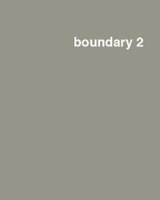 Edward W. Said, Volume 25
Paul Bové
Duke University Press This volume begins to show why the current period in humanistic studies could be known as "The Age of Edward Said." The collection brings together outstanding intellectuals from the wide variety of fields to which Edward Said, the most important humanist of his generation, has made contributions: literary criticism, postcolonial studies, musicology, Middle Eastern Studies, anthropology, and journalism. Featured is a new interview with Said, conducted by W. J. T. Mitchell, in which Said discusses the importance of the visual to his thinking, specifically the works of Goya and Caravaggio, which in turn made possible Said's valuable contributions to our understanding of photography and painting. Other contributions reflect on Said's influences on the American public sphere; the subtle personal politics that inform the relationship between music and emotion; Said's importance to a thinking about "race before racism" and the disappearance of the American; and jazz man Jim Merod reflects on Said's "sublime lyrical abstractions."
Covering with insight the many debates Said so deftly entered and formed, the distinguished contributors to this volume reflect upon his oeuvre to create an atmosphere of thoughtfulness, questioning, and interactivity.
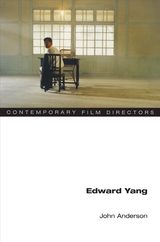 Edward Yang
John Anderson
University of Illinois Press, 2005 Having largely given up on a career in film, Edward Yang had been working as a computer engineer for several years when he saw Herzog's Aguirre, Wrath of God. Inspired to return to film, Yang, along with a handful of other filmmakers, including the great Hou Hsiao-hsien, went on to found the Taiwanese New Wave of the early 1980s. Film critic John Anderson's Edward Yang offers a comprehensive overview of the work of the writer-director—already considered one of the most important filmmakers of the past twenty years—from his breakthrough feature That Day, on the Beach to the epic Yi-Yi. Rooted in questions about what it means to be Taiwanese, Yang's films reveal the complexity of life within the island's patchwork culture. Anderson identifies the key narrative strategies, formal devices, moral vision, and sociopolitical concerns shot through Yang's films. He explains what makes these films so distinctive by pinpointing the specific qualities of Yang's style and outlook.
 Edwardian Stories of Divorce
Janice Hubbard Harris
Rutgers University Press, 1996 Much as abortion in the United States today is a contentious issue used for scripting women's roles and potential into the national agenda, divorce was an issue dividing England in the Edwardian era. According to Janice Harris, anything and everything, from illicit sex and family values to the Garden of Eden, wrath of children, poverty of women, nature of cruelty, scandal of America, threat of Germany, and future of England were part of the debate over divorce. Living under marriage laws far more restrictive than those of their Protestant neighbors, Edwardian women and men campaigned for reform with a barrage of compelling stories. Organizing her analysis around three major sources of narrative on divorce––the Sunday papers, the Report of the Royal Commission on Divorce and Matrimonial causes, and the novel––Harris uncovers a war of words and a competition of tales. In raising questions about the winners, losers, and spoils, Harris expands our understanding of the history of divorce, the wars between the sexes, and the political import of those wars.
In the end, she presents a complex and lively story herself, one that illuminates battles over marriage and divorce taking place in our own era as well. This humane book on a long-neglected subject marks an important contribution to narrative studies and Edwardian history.
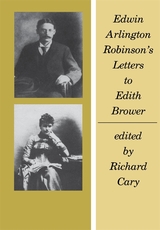 Edwin Arlington Robinson’s Letters to Edith Brower
Edwin Arlington Robinson
Harvard University Press This volume contains 189 hitherto unpublished letters by Edwin Arlington Robinson. They were written between 1897 and 1930 to one of his first admirers, Edith Brower of Pennsylvania.
The letters begin when the twenty-seven-year-old poet writes gratefully to the stranger who has expressed appreciation of his first, privately printed, book of poems, The Torrent and the Night Before. Soon he was carrying on an intense correspondence, baring his soul—safely, he believed, because the woman he described as “infernally bright and not at all ugly,” with “something of a literary reputation,” was “too old to give me a chance to bother myself with any sentimental uneasiness.” (She was twenty-one years his senior.)
Continually reflecting his laconic, self-deprecating Yankee spirit, the letters range from the uncontrollable outpourings of a lonely individual, desperate for encouragement and understanding, to brief words of greeting or farewell. Without reserve, Robinson—who was eventually awarded the Pulitzer prize for poetry three times—confides his reactions to people and places, his thoughts about his own work, and his personal opinions of such writers as Browning, Dickens, Hardy, Moody, and Pater.
Mr. Cary has included Miss Brower’s unpublished memoir on the poet’s character and literary career, “Memories of Edwin Arlington Robinson,” and her penetrating review of The Children of the Night. In addition to an informative Introduction, he contributes full explanatory notes, a list of Robinson’s works, and an index.
 Edwin Hubble: Mariner of the Nebulae
Gale E. Christianson
University of Chicago Press, 1996 In 1923 Edwin Hubble confirmed the existence of other galaxies. By the
end of the decade, he proved that the universe is expanding, thus laying
the very cornerstone of the big bang theory. A revealing portrait of a
scientific genius at work, this book also offers an incisive narrative
of the history of astronomy, and an evocation of what we see when gazing
at the stars.
"Highly entertaining. . . . Hubble may have been the most important
astronomer since Galileo. Perhaps since Copernicus."—Dick Teresi,
New York Times Book Review
"Hubble's own story has not been adequately told until now. . . . A
riveting portrait of a great scientist and a haunted man, and the best
look we are likely to have of the real Hubble."—Dennis Overby, Los
Angeles Times Book Review
"Displays remarkable strength in its steadfast balance and scrupulous
honesty. The greatness of the discoveries is set off against the
contrasting pettiness of the man."—Hans Christian von Baeyer,
Boston Sunday Globe
"Fascinating. . . . This is one of the most impressive scientific
biographies of recent years."—Kirkus Review, starred review
— "Notable Books for the Year 1995" selection, New York Times Book
Review
—"Best Books of 1995" selection, Library Journal
—Selected as one of the five best science books in 1995 by Carl Sagen,
Washington Post
 Edwin J. Cohn and the Development of Protein Chemistry: With a Detailed Account of His Work on the Fractionation of Blood during and after World War II
Douglas M. Surgenor
Harvard University Press “Blood,” Goethe observed in Faust, “is a very special juice.” How special it is and how complex as well is revealed in Douglas Surgenor’s Edwin J. Cohn and the Development of Protein Chemistry.
As Surgenor aptly shows, what began as a modest program in basic research at the Harvard Medical School in 1920 with the establishment of a small laboratory for the study of the physical chemistry of proteins, suddenly and quite unexpectedly took on immensely practical proportions twenty years later when the onset of World War II made requisite new sophisticated blood techniques and blood substitutes for the treatment of military casualties.
The knowledge and expertise gained by Edwin Cohn and his laboratory associates in the study of proteins, amino acids, and peptides in blood after 1920 put them in a unique position to carry out the search for new blood products. Edwin J. Cohn and the Development of Protein Chemistry discloses how the wartime emergency called into play Cohn’s talents as a leader who drew together chemists, clinicians, pathologists, immunologists, and others in the attainment of a complex goal. The revolution Cohn started has still not run its course.
EEG Signal Processing: Feature extraction, selection and classification methods
Wai Yie Leong
The Institution of Engineering and Technology, 2019 Electroencephalography (EEG) is an electrophysiological monitoring method used to record the brain activity in brain-computer interface (BCI) systems. It records the electrical activity of the brain, is typically non-invasive with electrodes placed along the scalp, requires relatively simple and inexpensive equipment, and is easier to use than other methods.
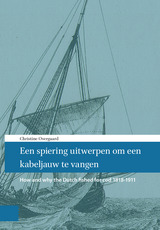 Een spiering uitwerpen om een kabeljauw te vangen: How and why the Dutch fished for cod 1818-1911
Overgaard Christine
Amsterdam University Press, 2015 Christine Rosenørn Overgaard tells the story in English of how and why the Dutch fished for cod from 1818-1911. Cod fishing was a hook and line fishery. During the 1800s, new vessels and new gear was introduced, especially trawling along the coast in winter in late 1800s. By looking at sources not yet applied in Dutch fishing history she shows how several fishermen fishing for cod ignored these initiatives not because of lack of entrepreneurial spirit, but because of concern for the environment and the cod stock. She examines the business structure in fishing: family business with shared ownership and limited company, including sources showing the importance of social network among ship owners and fishermen. She places cod fishing business within an institutional analysis and development framework, which on the one hand emphasizes the rules the fishermen set for themselves on how, when and where to fish for cod, and on the other hand sees cod fishing as one of several businesses in Dutch (inter)national politics. She illustrates the consequential dilemma facing the ship owners and fishermen when deciding on a profitable or a sustainable business, providing an alternative theory on growth in business, indicating new approaches to current cod fishing.
The Effect of an Unconstitutional Statute
Oliver P. Field
University of Minnesota Press, 1935
The Effect of an Unconstitutional Statute was first published in 1935. Minnesota Archive Editions uses digital technology to make long-unavailable books once again accessible, and are published unaltered from the original University of Minnesota Press editions.
 The Effect of Praise and Competition on the Persisting Behavior of Kindergarten Children
Theta Wolf
University of Minnesota Press, 1939
The Effect of Praise and Competition on the Persisting Behavior of Kindergarten Children was first published in 1939. Minnesota Archive Editions uses digital technology to make long-unavailable books once again accessible, and are published unaltered from the original University of Minnesota Press editions.No. 15, Institute of Child Welfare Monograph SeriesIn this study of five-year-olds, an experimenting psychologist has gone beyond previous investigators and attempted to show what factors in the presentation of a task and also in a child’s permanent social field seem to be related to persisting behavior and motivation.Important for psychologists, school principals and teachers, and all who would understand the effect of incentives, is her finding that the nature of the task and – in at least some instances – the order of its presentation in a series have a marked effect on persisting performance.
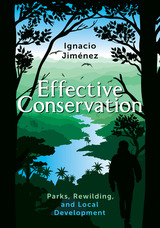 Effective Conservation: Parks, Rewilding, and Local Development
Ignacio Jiménez
Island Press, 2022 For most, “conservation” conjures the notion of minimizing human presence on wildlands to avoid harmful impacts. But too often, this defensive approach has pitted local communities against conservationists, wasting opportunities for collaboration and setting the stage for ongoing conflict. One conservation approach turns that paradigm on its head, and instead connects conservation with the well-being of human communities, setting both up for success. Called “Full Nature,” this approach—pioneered by conservationist Ignacio Jiménez—seeks to promote fully functional natural landscapes that are tied to the basic needs of the communities in their midst. They become a self-sustaining cycle, where nature and people are integrated ecologically, socially, and politically.
Effective Conservation is based on Jiménez’s experience managing conservation projects on three continents over thirty years. Jiménez offers a pragmatic approach to conservation that puts the focus on working with people—neighbors, governments, politicians, businesses, media—to ensure they have a long-term stake in protecting and restoring parks and wildlife. Jiménez guides readers through the practical considerations of designing, analyzing, and managing effective conservation programs. Chapters explore intelligence gathering, communication, planning, conflict management, and evaluation techniques, and include numerous text boxes showcasing examples of successful conservation projects from all continents. A companion website (islandpress.org/effective-conservation) includes additional case studies, expanded texts, and links to additional resources.
This highly readable manual, newly translated into English after successful Spanish and Portuguese editions, provides a groundbreaking and time-proven formula for successful conservation projects around the world that bring together parks, people, and nature.
 The Effective General College Curriculum as Revealed by Examinations
Committee Committee on Educational Research
University of Minnesota Press, 1937
The Effective General College Curriculum as Revealed by Examinations was first published in 1937. Minnesota Archive Editions uses digital technology to make long-unavailable books once again accessible, and are published unaltered from the original University of Minnesota Press editions.This volume, authored by the Committee on Education Research of the University of Minnesota, is the ninth in a series dealing with obstacles and challenges in college education.The General College of the University of Minnesota was established in 1932 as an experiment in giving students who cannot spend four years or more in college as broad a cultural education as possible. This book sketches the development of the program, tells how that program operates and what its objectives are, and describes in detail the several courses and the examinations that have been devised to measure its success.Part I contains introductory chapters by President Coffman, Melvin E. Haggerty, Dean of the College of Education, Malcolm S. MacLean, director of the General College, and Professors Alvin C. Eurich and Palmer O. Johnson, examination counselors. Each chapter in Part II, “The Comprehensive Examination Areas,” deals with a specific field: contemporary affairs, history and government, economics, euthenics, psychology, art, physical science, biological science, and English. Each chapter is written by well-qualified authorities in their respective fields, and gives course content as well as examples and results of the tests by which the General College measures the growth of the individual student in judgment, in ability to solve problems, and in appreciation of the arts. Part III contains studies of related problems.
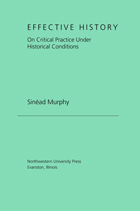 Effective History: On Critical Practice Under Historical Conditions
Sinead Murphy
Northwestern University Press, 2010 Sinéad Murphy’s Effective History presents its reader with a thorough explanation and evaluation of H.-G. Gadamer’s concept of “effective history,” not only as it pertains to the broader range of hermeneutic and postmodern thinkers working in the wake of Kantian philosophy, but first and foremost as a careful and measured consideration of the practice of effective history as a critical method for philosophy in our current times. In this latter sense, the work pushes Gadamer’s thinking forward into new territory and provides an insightful estimation of the value of hermeneutic inquiry. Murphy demonstrates that the notion of effective history not only stems from a central issue in Kant’s critical philosophy (the divide between the empirical and transcendental, between history and pure knowledge), but that it is best understood through an analysis of the various ways that certain contemporary thinkers fall into the traps and contradictions that stem from Kant’s critical turn.
Effective Journalism: How the Information Ecosystem Works and What Journalists Should Do About It
Jessica Roberts
Intellect Books, 2024 An overview of the ways modern communication technologies and information approaches interact with human cognition to make it difficult for people to effectively find and interpret information and what journalists can do about it.
The central argument of this book is that journalists and audiences can no longer afford to pretend that all information is competing on an even playing field and that it is enough for journalists to simply publish “the facts.” Effective Journalism attempts to explain the reality, rather than the ideal, of how people seek and process information, and what journalists and their audiences can do to try to create an informed public in the face of that reality.
 Effective Management of Social Enterprises: Lessons from Businesses and Civil Society Organizations in Iberoamerica
Social Enterprise Knowledge Network SEKN
Harvard University Press What makes civil society organizations effective performers? What are key practices for businesses creating social value activities as a part of their overall operations? Business leaders have long analyzed corporate practices; this book represents an innovative analysis of how one does good in an effective and strategic manner. This book aims to enable social and business leaders to gain a greater understanding of how to achieve high performance in terms of social value creation.
Social Enterprise Knowledge Network is a research partnership encompassing eleven leading management schools—nine in Latin America, one in Spain, and Harvard Business School—with a demonstrated capacity to produce high-quality, original, field-based research in Latin America.
Based on the results of a two-year research process on how social and business organizations in Iberoamerica achieve superior social performance, Effective Management of Social Enterprises presents the most comprehensive and in-depth analysis of such practices ever undertaken in this region. This practitioner-oriented book also enriches the literature on organizational performance, social enterprise, and corporate social responsibility, and on Iberoamerica more generally.
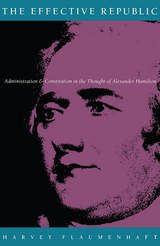 The Effective Republic: Administration and Constitution in the Thought of Alexander Hamilton
Harvey Flaumenhaft
Duke University Press, 1992 The United States has been distinguished among free governments as a “presidential” republic. In The Effective Republic, Harvey Flaumenhaft shows how the study of Alexander Hamilton’s political thought opens the way to understanding the nature of this republic and the reasons for its development.
Although Hamilton exterted an extraordinary influence on American institutions, his contribution and the thinking behind it often have been obscured and misconstrued by piecemeal approaches to his voluminous writings. Here, Flaumenhaft draws upon more than two dozen volumes of Hamilton’s papers to produce a comprehensive account of his thought on the principles of politics—the account which Hamilton himself hoped to give in a multivolume treatise, but died before producing.
Beginning with a discussion of the place of general principles in Hamilton’s thought, The Effective Republic proceeds to his views on popular representation as a safeguard of individual liberty. Flaumenhaft then elaborates on Hamilton’s thinking about efficacious administration, especially how the President and Senate meet the requirements of unity and duration in a republic, and on the importance of an independent judiciary for constitutional integrity. What emerges clearly as Hamilton’s chief concern is the need to make government not only safe but effective—hindered from doing harm by its popular base, but also, through the differentiation of administrative powers and tasks, capable of doing good.
Interpreting, linking, and, and arranging Hamilton’s words, Flaumenhaft allows Hamilton to speak for himself, to explain his benificiaries his vision of what the republican experiment needed in order to succeed.
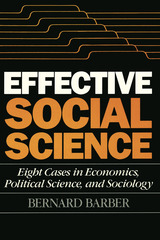 Effective Social Science: Eight Cases in Economics, Political Science, and Sociology
Bernard Barber
Russell Sage Foundation, 1987 Does social science influence social policy? This is a topic of perennial concern among students of politics, the economy, and other social institutions. In Effective Social Science, eight prominent social researchers offer first-hand descriptions of the impact of their work on government and corporate policy. In their own words, these noted political scientists, economists, and sociologists—among them such influential scholars as James Coleman, Joseph Pechman, and Eliz Ginzberg—tell us what it was like to become involved in the making of social policy. These rich personal narratives, derived from detailed interviews conducted by Bernard Barber (himself a veteran of the biomedical poliy arena), illuminate the role of social science in diverse areas, including school desegregation, comprehensive income taxation, military manpower utilization, transportation deregulation, and the protection of privacy. The patterns traced in this volume indicate that social science can influence policy, but only as part of a pluralistic, political process; effective social research requires advocacy as well as a conducive social and idealogical climate. For anyone curious about the relationship between social knowledge and social action, this book provides striking illustration and fruitful analysis.
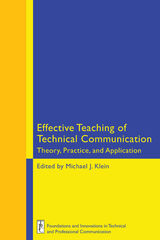 Effective Teaching of Technical Communication: Theory, Practice, and Application
Michael J. Klein
University Press of Colorado, 2021 Drawn from quantitative and qualitative work of practitioners in the field, this edited collection provides an update to the Staples and Ornatowski's influential Foundations of Teaching Technical Communication (1997). The collection is organized around the broad themes of expanding pedagogy, shaping curriculum, incorporating technology, and engaging community. In each section, authors illustrate their experiences with teaching in the university technical communication classroom, addressing topics such as rethinking the role of internships, redesigning student learning outcomes for assessment practices, incorporating ethics into the technical communication classroom, using visual communication in community context, and engaging plain language. These sixteen chapters, taken as a whole or individually, provide readers with insights and examples into teaching technical communication in the 21st century.
Effective Team Leadership for Engineers
Pat Wellington
The Institution of Engineering and Technology, 2009 This book is a must for engineers who have just, or will soon, become team leaders. It is also an essential guide for more experienced team and project leaders who wish to brush up their skills and knowledge.
The Effectiveness of China's Industrial Policies in Commercial Aviation Manufacturing
Keith Crane
RAND Corporation, 2014 This report assesses the effectiveness of China’s industrial policies, using China’s commercial aviation manufacturing industry as a case study. It evaluates China’s efforts to create a national champion in this industry, and analyzes foreign manufacturers’ efforts to protect key technologies when setting up production facilities there. It also offers policy options for foreign governments responding to Chinese policies.
 The Effectiveness of the High School Progam in Home Economics: A Report of a Five-Year Study of Twenty Minnesota Schools
Clara Arny
University of Minnesota Press, 1952
The Effectiveness of the High School Program in Home Economics was first published in 1952.Because the goals of home economics have changed markedly within recent years, facts are needed to chart its future course. This report presents more pertinent facts than any previous study of home economics in the public schools.The report is based on a five-year study, from 1943 to 1948, of the home economics program in twenty Minnesota high schools, a study which Mrs. Arny directed. The report discusses the strong and the weak points of the home economics program, shows the factors which seem to influence its effectiveness, and suggests ways in which the program may be improved. Appraisals were made by means of a wide variety of techniques and evaluations made at intervals during the study determined the extend of improvements made in the schools.A significant aspect of the study was an examination of the facilities and effectiveness of homemaking instruction in schools which received reimbursement from state and federal vocational funds. Data from these schools were compared with data from similar schools not receiving the subsidy. Recommendations - admittedly provocative and probably controversial - are based upon the results of the analyses of these data.This report should be stimulating and helpful to school administrators, home economics teachers and supervisors, government officials, and parent and civic groups who wish to improve homemaking education.
Effects of High Altitude on Human Birth: Observations on Mothers, Placentas, and the Newborn in Two Peruvian Populations
Jean McClung
Harvard University Press, 1969 Both theory and animal experiments often relate impairment of fertility and fetal development to the stress of hypoxia. This comprehensive, penetrating study includes critical reviews of theory and experiments as well as of previous studies of human birth weight and neonatal mortality at high altitudes in the United States. It also reports on studies of mothers, placentas, and the newborn in two Peruvian populations, one in the Andes, the other at sea level. It presents new evidence on the functional significance of various aspects of placental anatomy and on racial differences in maternal ability to nourish the fetus at high altitudes.
The Effects of Taxation on Capital Accumulation
Edited by Martin Feldstein
University of Chicago Press, 1987 Research on capital formation has long been a major focus of studies sponsored by the National Bureau of Economic Research because of the crucial role of capital accumulation in the process of economic growth. The papers in this volume examine the influence of taxes on capital formation, with specific focus on the determinants of saving and the process of investment in plant and equipment.
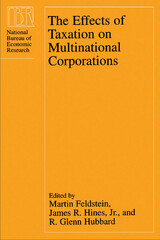 The Effects of Taxation on Multinational Corporations
Edited by Martin Feldstein, James R. Hines Jr., and R. Glenn Hubbard
University of Chicago Press, 1995 The tax rules of the United States and other countries have intended and unintended effects on the operations of multinational corporations, influencing everything from the formation and allocation of capital to competitive strategies. The growing importance of international business has led economists to reconsider whether current systems of taxing international income are viable in a world of significant capital market integration and global commercial competition.
In an attempt to quantify the effect of tax policy on international investment choices, this volume presents in-depth analyses of the interaction of international tax rules and the investment decisions of multinational enterprises. Ten papers assess the role played by multinational firms and their investment in the U.S. economy and the design of international tax rules for multinational investment; analyze channels through which international tax rules affect the costs of international business activities; and examine ways in which international tax rules affect financing decisions of multinational firms. As a group, the papers demonstrate that international tax rules have significant effects on firms' investment and other financing decisions.
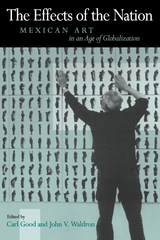 Effects Of The Nation: Mexican Art In Age Of Globalization
edited by Carl Good and John V. Waldron
Temple University Press, 2001 What is the effect of a "nation"? In this age of globalization, is it dead, dying, or only dormant? The essays in this groundbreaking volume use the arts in Mexico to move beyond the national and the global to look at the activity of a community continually re-creating itself within and beyond its own borders.
Mexico is a particularly apt focus, partly because of the vitality of its culture, partly because of its changing political identity, and partly because of the impact of borders and borderlessness on its national character. The ten essays collected here look at a wide range of aesthetic productions -- especially literature and the visual arts -- that give context to how art and society interact.
Steering a careful course between the nostalgia of nationalism and the insensitivity of globalism, these essays examine modernism and postmodernism in the Mexican setting. Individually, they explore the incorporation of historical icons, of vanguardism, and of international influence. From Diego Rivera to Elena Garro, from the Tlateloco massacre to the Chiapas rebellion, from mass-market fiction to the film Aliens, the contributors view the many sides of Mexican life as relevant to the creation of a constantly shifting national culture. Taken together, the essays look both backward and forward at the evolving effect of the Mexican nation.
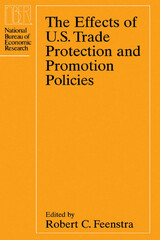 The Effects of U.S. Trade Protection and Promotion Policies
Edited by Robert C. Feenstra
University of Chicago Press, 1997 Economists disagree on whether recent U.S. trade policies are harmful or helpful, but they all agree that there is a new trend toward focusing on results-oriented policies in specific markets and with particular trading partners. These twelve essays by leading international economists explore crucial issues in U.S. trade policy today. Topics examined include the markets for automobile and automobile parts in the United States and Japan, the U.S. response to "unfair" trading practices such as dumping, and the effects of industry- and country-specific policies. Examples include high-technology and agricultural industries and off-shore assembly in U.S. border cities.
The volume concludes that some policies can act to both protect imports and promote exports, that the threat of protectionist policies can often have effects that are as pronounced as their implementation, and that regulatory policy has as great an impact on trade and investment patterns as does trade policy itself. It will be of crucial interest to international trade economists, policy specialists, and political scientists.
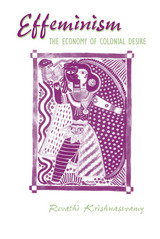 Effeminism: The Economy of Colonial Desire
Revathi Krishnaswamy
University of Michigan Press, 2011 Effeminism charts the flows of colonial desire in the works of British writers in India. Working on the assumption that desire is intensely political, historically constituted, and materially determined, the book shows how the inscriptions of masculinity in the fictions of Flora Annie Steel, Rudyard Kipling, and E. M. Forster are deeply implicated in the politics of colonial rule and anticolonial resistance. At the same time, the study refrains from representing colonialism as a coherent set of public events, policies, and practices whose social, political, and cultural meanings are self-evident. Instead, by tracing the resistant and unassailable modes of masculine desire in colonial fiction, the study insists on an explosive revolutionary potential that makes desire often intractable. And by restoring the political in the unconscious and the unconscious in the political, the book proposes to understand colonialism in terms of historical failure, ideological inadequacy, and political contention. This book will interest not only scholars of 19th- and 20th-century British literature and colonial and postcolonial literatures, but also those working in the areas of cultural studies, gender studies, and South Asian studies.“Krishnaswamy uses ‘effeminization’ to describe the complicated paths of colonial sexual desire, stereotypes of Indian male passivity, and how ‘colonizing men used womanhood to delegitimize, discredit and disempower colonized men.’ Reading texts by Rudyard Kipling (a ‘culturally hybrid male’), E. M. Forster (a homosexual), and F. A. Steel (a woman), the author shows how these tactics affect the representation not only of colonized men and women but also of the marginalized writers of the colonizing culture. In the process, she makes intriguing analogies between androgyny and biculturalism.”—Choice
 Effeminism: The Economy of Colonial Desire
Revathi Krishnaswamy
University of Michigan Press, 1999 Effeminism charts the flows of colonial desire in the works of British writers in India. Working on the assumption that desire is intensely political, historically constituted, and materially determined, the book shows how the inscriptions of masculinity in the fictions of Flora Annie Steel, Rudyard Kipling, and E. M. Forster are deeply implicated in the politics of colonial rule and anticolonial resistance. At the same time, the study refrains from representing colonialism as a coherent set of public events, policies, and practices whose social, political, and cultural meanings are self-evident. Instead, by tracing the resistant and unassailable modes of masculine desire in colonial fiction, the study insists on an explosive revolutionary potential that makes desire often intractable. And by restoring the political in the unconscious and the unconscious in the political, the book proposes to understand colonialism in terms of historical failure, ideological inadequacy, and political contention. This book will interest not only scholars of 19th- and 20th-century British literature and colonial and postcolonial literatures, but also those working in the areas of cultural studies, gender studies, and South Asian studies.“Krishnaswamy uses ‘effeminization’ to describe the complicated paths of colonial sexual desire, stereotypes of Indian male passivity, and how ‘colonizing men used womanhood to delegitimize, discredit and disempower colonized men.’ Reading texts by Rudyard Kipling (a ‘culturally hybrid male’), E. M. Forster (a homosexual), and F. A. Steel (a woman), the author shows how these tactics affect the representation not only of colonized men and women but also of the marginalized writers of the colonizing culture. In the process, she makes intriguing analogies between androgyny and biculturalism.”—Choice
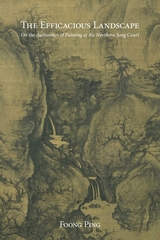 The Efficacious Landscape: On the Authorities of Painting at the Northern Song Court
Foong Ping
Harvard University Press, 2015 Ink landscape painting is a distinctive feature of the Northern Song, and painters of this era produced some of the most celebrated artworks in Chinese history. The Efficacious Landscape addresses how landmark works of this pivotal period first came to be identified as potent symbols of imperial authority and later became objects through which exiled scholars expressed disaffection and dissent. In fulfilling these diverse roles, landscape demonstrated its efficacy in communicating through embodiment and in transcending the limitations of the concrete.
Building on decades of monographic writings on Song painting, this carefully researched study presents a syncretic vision of how ink landscape evolved within the eleventh-century court community of artists, scholars, and aristocrats. Detailed visual analyses of surviving works and new insight about key landscapes by the court painter Guo Xi support the perspective put forward here and introduce original methodologies for interpreting painting as an integral element of political and cultural history. By focusing on the efforts of emperors, empresses, and eunuchs to cultivate ink landscape and its iconography, this investigation also tackles the social and class dichotomies that have long defined and frustrated existing scholarship on this period’s paintings, highlighting instead the interconnectedness of painting practice’s elite modalities.
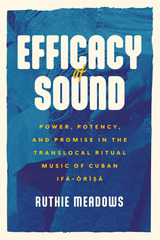 Efficacy of Sound: Power, Potency, and Promise in the Translocal Ritual Music of Cuban Ifá-Òrìsà
Ruthie Meadows
University of Chicago Press, 2023 The first book-length ethnographic study on music and Ifá divination in Cuba and Nigeria.
Hailing from Cuba, Nigeria, and various sites across Latin America and the Caribbean, Ifá missionary-practitioners are transforming the landscape of Ifá divination and deity (òrìṣà/oricha) worship through transatlantic travel and reconnection. In Cuba, where Ifá and Santería emerged as an interrelated, Yorùbá-inspired ritual complex, worshippers are driven to “African traditionalism” by its promise of efficacy: they find Yorùbá approaches more powerful, potent, and efficacious.
In the first book-length study on music and Ifá, Ruthie Meadows draws on extensive, multisited fieldwork in Cuba and Yorùbáland, Nigeria, to examine the controversial “Nigerian-style” ritual movement in Cuban Ifá divination. Meadows uses feminist and queer of color theory along with critical studies of Africanity to excavate the relation between utility and affect within translocal ritual music circulations. Meadows traces how translocal Ifá priestesses (ìyánífá), female batá drummers (bataleras), and priests (babaláwo) harness Yorùbá-centric approaches to ritual music and sound to heighten efficacy, achieve desired ritual outcomes, and reshape the conditions of their lives. Within a contentious religious landscape marked by the idiosyncrasies of revolutionary state policy, Nigerian-style Ifá-Òrìṣà is leveraged to transform femininity and masculinity, state religious policy, and transatlantic ritual authority on the island.
The Efficiency of the Coal Industry: An Application of Linear Programming
James M. Henderson
Harvard University Press Economists frequently desire to appraise the performance of a specific industry by comparing its actual operating results with a predetermined efficient norm. Utilizing the methods of linear programming, the present volume is aimed at the development of methods that allow the measurement of well defined efficient norms.
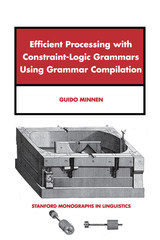 Efficient Processing with Constraint-Logic Grammars Using Grammar
Guido Minnen
CSLI, 2001 The ascendance of communication technologies such as the internet has accentuated the need to improve access, manipulation and translation of written language. One of the main goals of researchers in the field of computational linguistics is to create programs that put to use knowledge of human language in pursuit of technology that can overcome the many obstacles in the interaction between human and computer. In this endeavor, finding automated techniques to parse the complexities of human grammar is a premier problem tackled by human-interface researchers. The intricacy of human grammar poses problems not only of accuracy, but also of efficiency.
This book investigates programs for automatic analysis and production of written human language. These specialized programs use knowledge about the structure and meaning of human language in the form of grammars. Various techniques are proposed which focus on solutions for practical problems in processing of constraint-logic grammars. The solutions are all based on the automatic adaptation or compilation of a grammar rather than a modification of the processing algorithm used. As such they allow the grammar writer to abstract over details of grammar processing and in many cases enable more efficient processing.
 An Efficient Womanhood: Women and the Making of the Universal Negro Improvement Association
Natanya Duncan
University of Illinois Press, 2023 Black women and a far-reaching strategy for activism and action
Founded in 1914 by Amy Ashwood and Marcus Garvey, the Universal Negro Improvement Association and African Communities League (commonly called the UNIA) grew into one of the largest social justice organizations of the twentieth century. Natanya Duncan’s collective biography explores women’s role in building the UNIA and how Ashwood’s strategy of efficient womanhood equipped them to confront political and social issues--even when it meant defying gender norms. Efficient womanhood took a three-tiered approach that asked UNIA women to seek equitable partners, take on roles as mentors, and connect resources and people to their communities and Black people at large. Strong believers in the necessity of their presence and voices, UNIA women developed leadership skills within and beyond the organization and used these skills in service to their communities.
Enlightening and in-depth, An Efficient Womanhood tells the story of the women who shaped a framework for leadership and engagement that remains a blueprint for activists today.
Effluent America: Cities, Industry, Energy, and the Environment
Martin V. Melosi
University of Pittsburgh Press, 2001 Garbage, wastewater, hazardous waste: these are the lenses through which Melosi views nineteenth- and twentieth-century America. In broad overviews and specific case studies, Melosi treats the relationship between industrial expansion and urban growth from an ecological perspective.
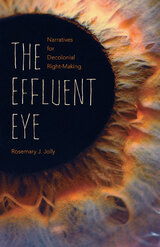 The Effluent Eye: Narratives for Decolonial Right-Making
Rosemary J. Jolly
University of Minnesota Press, 2024 Why human rights don’t work In The Effluent Eye, Rosemary J. Jolly argues for the decolonization of human rights, attributing their failure not simply to state and institutional malfeasance but to the very concept of human rights as anthropocentric—and, therefore, fatally shortsighted. In an engaging mix of literary and cultural criticism, Indigenous and Black critique, and substantive forays into the medical humanities, Jolly proposes right-making in the demise of human rights. Using what she calls an “effluent eye,” Jolly draws on “Fifth Wave” structural public health to confront the concept of human rights—one of the most powerful and widely entrenched liberal ideas. She builds on Indigenous sovereignty work from authors such as Robin Wall Kimmerer, Leanne Betasamosake Simpson, and Mark Rifkin as well as the littoral development in Black studies from Christine Sharpe, Saidiya Hartman, and Tiffany Lethabo King to engage decolonial thinking on a range of urgent topics such as pandemic history and grief; gender-based violence and sexual assault; and the connections between colonial capitalism and substance abuse, the Anthropocene, and climate change. Combining witnessed experience with an array of decolonial texts, Jolly argues for an effluent form of reading that begins with the understanding that the granting of “rights” to individuals is meaningless in a world compromised by pollution, poverty, and successive pandemics. Retail e-book files for this title are screen-reader friendly.
Effort at Speech: New and Selected Poems
William Meredith
Northwestern University Press, 1997 Winner, 1997 National Book Award for Poetry
A contemporary of Berryman, Bishop, and Lowell, William Meredith shared neither the bohemian excesses of the Beats nor the exhibitionist excesses of the "confessional" poets. Rather, he was known as a poet whose unadorned, formal verse marked him as a singular voice. Effort at Speech, the definitive collection of Meredith's life work, contains poems chosen by the author from throughout his career, as well as several new works and an essay by Michael Collier placing Meredith in his times.
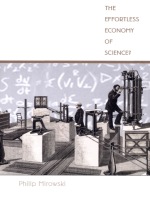 The Effortless Economy of Science?
Philip Mirowski
Duke University Press, 2004 A leading scholar of the history and philosophy of economic thought, Philip Mirowski argues that there has been a top-to-bottom transformation in how scientific research is organized and funded in Western countries over the past two decades and that these changes necessitate a reexamination of the ways that science and economics interact. Mirowski insists on the need to bring together the insights of economics, science studies, and the philosophy of science in order to understand how and why particular research programs get stabilized through interdisciplinary appropriation, controlled attributions of error, and funding restrictions. Mirowski contends that neoclassical economists have persistently presumed and advanced an “effortless economy of science,” a misleading model of a self-sufficient and conceptually self-referential social structure that transcends market operations in pursuit of absolute truth. In the stunning essays collected here, he presents a radical critique of the ways that neoclassical economics is used to support, explain, and legitimate the current social practices underlying the funding and selection of “successful” science projects. He questions a host of theories, including the portraits of science put forth by Karl Popper, Michael Polanyi, and Thomas Kuhn. Among the many topics he examines are the social stabilization of quantitative measurement, the repressed history of econometrics, and the social construction of the laws of supply and demand and their putative opposite, the gift economy. In The Effortless Economy of Science? Mirowski moves beyond grand abstractions about science, truth, and democracy in order to begin to talk about the way science is lived and practiced today.
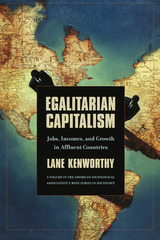 Egalitarian Capitalism: Jobs, Incomes, and Growth in Affluent Countries
Lane Kenworthy
Russell Sage Foundation, 2004 Declining participation in labor unions, the movement toward a service-based economy, and increased globalization have cast doubt on the extent to which welfare states can continue to stem inequality in market economies over the long-term. Does the new economy render existing models of social assistance obsolete? Do traditional welfare states hamper economic and employment growth, thereby worsening the plight of the poor? Lane Kenworthy offers a rigorous empirical analysis of these questions in Egalitarian Capitalism. The book examines sixteen industrialized countries in North America, Western Europe, and Scandinavia—each with different approaches to assisting the poor—to see how successful each has been in developing its economy and curbing inequality over the past twenty years. Kenworthy finds that inequality grew in almost all of these countries, from the most progressive to the least. Using simple but powerful statistical tests, he assesses the theory that inequality is necessary to improve economic growth and reduce poverty. He finds no necessary trade-off between equality and economic growth but discovers some evidence that high minimum wages dampen employment growth in private sector services. Kenworthy suggests that without greater private sector employment, public supports may be unable to adequately sustain living standards for the poor. An equitable growth strategy necessitates a balance of policy options: Creating jobs is aided by loose employment regulation, low payroll taxes, and, in some cases, lower real wages for workers at the bottom of the income spectrum. However, high employment is also facilitated by a system that "makes work pay" with earnings subsidies, workplace flexibilities, financial support for those who are between jobs or unable to work, and universal health and child care coverage. Kenworthy suggests that these strategies, though generally presented as mutually exclusive, could be effectively combined to create a robust, fair economy. Egalitarian Capitalism addresses fundamental questions of national policy with rigorous scholarship and a clarity that makes it accessible to any reader interested in the alleged trade-off between social equity and market efficiency. The book analyzes the viability of traditional welfare regimes and offers sustainable options that can promote egalitarian societies without hampering economic progress. A Volume in the American Sociological Association's Rose Series in Sociology
 Egg & Nest
Rosamond Purcell, Linnea S. Hall, and René Corado
Harvard University Press, 2008 The beauty of the robin’s egg is not lost on the child who discovers the nest, nor on the collector of nature’s marvels. Such instances of wonder find fitting expression in the photographs of Rosamond Purcell, whose work captures the intricacy of nests and the aesthetic perfection of bird eggs. Mining the ornithological treasures of the Western Foundation of Vertebrate Zoology, Purcell produces pictures as lovely and various as the artifacts she photographs. The dusky blue egg of an emu becomes a planet. A woodpecker’s nest bears an uncanny resemblance to a wooden shoe. A resourceful rock dove weaves together scrap metal and spent fireworks. A dreamscape of dancing monkeys emerges from the calligraphic markings of a murre egg.
Alongside Purcell’s photographs, Linnea Hall and René Corado offer an engaging history of egg collecting, the provenance of the specimens in the photographs, and the biology, conservation, and ecology of the birds that produced them. They highlight the scientific value that eggs and nest hold for understanding and conserving birds in the wild, as well as the aesthetic charge they carry for us.
How has evolution shaped the egg or directed the design of the nest? How do the photographs convey such infinitesimal and yet momentous happenstance? The objects in Egg & Nest are specimens of natural history, and in Purcell’s renderings, they are also the most natural art.
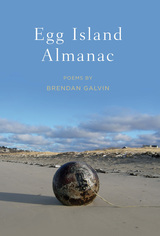 Egg Island Almanac
Brendan Galvin
Southern Illinois University Press, 2017 An endangered right whale attempting to nurse her new calf in the December ocean, foxgloves blooming in different places from year to year, or the rescue of imperiled Kemp’s ridley sea turtles—the bounty and cruelty of nature infuses this latest collection of poems from Brendan Galvin, which takes as its maxim finding the extraordinary in the ordinary all around us.
The poems chronicle the waxing and waning of the seasons from one winter to the next in the area around Egg Island, the dunes near a small seacoast town on the outermost reaches of Cape Cod, Massachusetts. Galvin’s training as a naturalist and environmental writer is evident as his practiced eye roves the waves, marshes, and forests, finding meaning and beauty in the smallest detail— bird-watching, rebuilding a woodpile, or the flight of bobwhite quail. Other poems recall the poet’s affectionate memories of his deceased wife and the life they shared together, acknowledging grief without veering into the maudlin. Always present beneath the surface is the question of where humans fit into this wild, ever-changing landscape.
In meditations that recall the poetry and prose of Mary Oliver or W. S. Merwin, Galvin sets off on a vivid journey sure to increase readers’ appreciation for the natural world. Perhaps his most compelling message is that readers need not jet off to Everest or Kilimanjaro to experience mystery and beauty on Earth—there’s wonder aplenty in our own backyards.
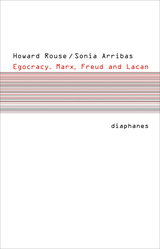 Egocracy: Marx, Freud and Lacan
Sonia Arribas and Howard Rouse
Diaphanes, 2011 This book tries to bring together the work of Marx, Freud and Lacan. It does this not by enumerating what might stereotypically be considered to be the central theses of these authors and then proceeding to combine them – a method that is inevitably doomed to failure – but instead by confronting each one of their oeuvres with what might best be described as its extimate core. The work of Marx is confronted with a problematic that implicitly, and at times even explicitly, runs throughout it: that of the splitting, dividing and doubling (or, perhaps better, knotting) of the (proletarian) subject. The work of Freud is confronted – following on from this analysis of Marx – with the hidden social and historical determination of its own most revolutionary insight, that »the nucleus of the ego is unconscious«; and this social and historical determination itself in turn allows for a reinscription of the three fundamental categories of Lacanian psychoanalysis: the symbolic, the imaginary and the real.
 Egoism Without Permission: The Moral Psychology of Ayn Rand's Ethics
Tara Smith
University of Pittsburgh Press, 2024 Ayn Rand controversially defended rational egoism, the idea that people should regard their own happiness as their highest goal. Given that numerous scholars in philosophy and psychology alike are examining the nature of human flourishing and an ethics of well-being, the time is ripe for a close examination of Rand’s theory. Egoism Without Permission illuminates Rand’s thinking about how to practice egoism by exploring some of its crucial psychological dimensions. Tara Smith examines the dynamics among four partially subconscious factors in an individual’s well-being: a person’s foundational motivation for being concerned with morality; their attitude toward their desires; their independence; and their self-esteem. A clearer grasp of each, Smith argues, sheds light on the others, and a better understanding of the set, in turn, enriches our understanding of self-interest and its sensible pursuit. Smith then traces the implications for a broader understanding of what a person’s self-interest genuinely is, and, correspondingly, of what its pursuit through rational egoism involves. By highlighting these previously underexplored features of Rand’s conceptions of self-interest and egoism, Smith betters our understanding of how vital these psychological levers are to a person’s genuine flourishing.
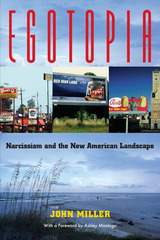 Egotopia: Narcissism and the New American Landscape
John Miller
University of Alabama Press, 1999 Egotopia explains why individual political and economic interests have eclipsed aesthetic considerations in the rampant billboards, malls, and urban sprawl of the New American Landscape Egotopia begins where other critiques of the American landscape end: identifying the physical ugliness that defines and homogenizes America's cities, suburbs, and countryside. Believing that prevailing assessments of the American landscape are inadequate and injudicious, John Miller calls into question the conventional wisdom of environmentalists, urban planners,and architects alike. In this precedent-shattering examination of what he sees as the ugliness that is the American consumer society, Miller contends that our aesthetic condition can be fully understood only by explorers of the metaphoric environment. Metaphorically, the ugliness of America's great suburban sprawl is the physical manifestation of our increasing narcissism- our egotopia. The ubiquity of psychotherapy as a medium promoting self-indulgence has deified private man as it has demonized public man. The New American Landscape, Miller argues, is no longer the physical manifestation of public and communal values. Instead it has become a projection of private fantasies and narcissistic self-indulgence. Individual interests and private passions can no longer tolerate, nor even recognize, aesthetic concerns in such a landscape dedicated to uncompromising notions of utility.
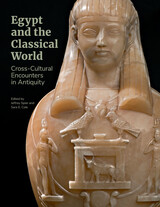 Egypt and the Classical World: Cross-Cultural Encounters in Antiquity
Jeffrey Spier
J. Paul Getty Trust, The, 2022 Presenting dynamic research, this publication explores two millennia of cultural interactions between Egypt, Greece, and Rome.
From Mycenaean weaponry found among the cargo of a Bronze Age shipwreck off the Turkish coast to the Egyptian-inspired domestic interiors of a luxury villa built in Greece during the Roman Empire, Egypt and the Classical World documents two millennia of cultural and artistic interconnectedness in the ancient Mediterranean. This volume gathers pioneering research from the Getty scholars' symposium that helped shape the major international loan exhibition Beyond the Nile: Egypt and the Classical World (J. Paul Getty Museum, 2018).
Generously illustrated essays consider a range of artistic and other material evidence, including archaeological finds, artworks, papyri, and inscriptions, to shed light on cultural interactions between Egypt, Greece, and Rome from the Bronze Age to the Late Period and Ptolemaic dynasty to the Roman Empire. The military's role as a conduit of knowledge and ideas in the Bronze Age Aegean, and an in-depth study of hieroglyphic Egyptian inscriptions found on Roman obelisks offer but two examples of scholarly lacunae addressed by this publication. Specialists across the fields of art history, archaeology, Classics, Egyptology, and philology will benefit from the volume's investigations into syncretic processes that enlivened and informed nearly twenty-five hundred years of dynamic cultural exchange.
The free online edition of this open-access publication is available at www.getty.edu/publications/egypt-classical-world/ and includes zoomable, high-resolution photography. Also available are free PDF, EPUB, and Kindle/MOBI downloads of the book.
Egypt beyond Representation: Materials and Materiality of Aegyptiaca Romana
Sander Müskens
Leiden University Press, 2017 Egypt beyond Representation develops and applies a new approach to study Aegyptiaca Romana from a bottom-up, Roman perspective. Current approaches to these objects are often still plagued by top-down projections of modern definitions and understandings of Egypt and Egyptian material culture onto the Roman world. This book instead argues that these artifacts should be studied in their own right, without reducing them to fixed Egyptian meanings. This study shows that, while “Egyptianness” may have been among Roman associations, these objects were able to do much more than merely representing notions of Egypt.
Egypt in Search of Political Community: An Analysis of the Intellectual and Political Evolution of Egypt, 1804-1952
Nadav Safran
Harvard University Press A book about Egypt's search for a secure place in the modern world, including many problems common to her sister Arab and Muslim countries, and, by extension, to all newly developed countries. Mr. Safran combines the approach of the "Islamist," immersed in the culture he examines, with that of the modern social scientist. Sympathetic to Egypt, he is objective in his belief that Egypt's troubles are the inescapable result of transforming one of the oldest civilizations into an integral part of the modern world.
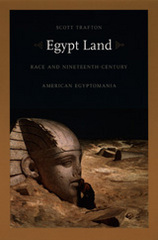 Egypt Land: Race and Nineteenth-Century American Egyptomania
Scott Trafton
Duke University Press, 2004 Egypt Land is the first comprehensive analysis of the connections between constructions of race and representations of ancient Egypt in nineteenth-century America. Scott Trafton argues that the American mania for Egypt was directly related to anxieties over race and race-based slavery. He shows how the fascination with ancient Egypt among both black and white Americans was manifest in a range of often contradictory ways. Both groups likened the power of the United States to that of the ancient Egyptian empire, yet both also identified with ancient Egypt’s victims. As the land which represented the origins of races and nations, the power and folly of empires, despots holding people in bondage, and the exodus of the saved from the land of slavery, ancient Egypt was a uniquely useful trope for representing America’s own conflicts and anxious aspirations. Drawing on literary and cultural studies, art and architectural history, political history, religious history, and the histories of archaeology and ethnology, Trafton illuminates anxieties related to race in different manifestations of nineteenth-century American Egyptomania, including the development of American Egyptology, the rise of racialized science, the narrative and literary tradition of the imperialist adventure tale, the cultural politics of the architectural Egyptian Revival, and the dynamics of African American Ethiopianism. He demonstrates how debates over what the United States was and what it could become returned again and again to ancient Egypt. From visions of Cleopatra to the tales of Edgar Allan Poe, from the works of Pauline Hopkins to the construction of the Washington Monument, from the measuring of slaves’ skulls to the singing of slave spirituals—claims about and representations of ancient Egypt served as linchpins for discussions about nineteenth-century American racial and national identity.
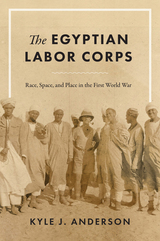 The Egyptian Labor Corps: Race, Space, and Place in the First World War
Kyle J. Anderson
University of Texas Press, 2021 During World War I, the British Empire enlisted half a million young men, predominantly from the countryside of Egypt, in the Egyptian Labor Corps (ELC) and put them to work handling military logistics in Europe and the Middle East. British authorities reneged on their promise not to draw Egyptians into the war, and, as Kyle Anderson shows, the ELC was seen by many in Egypt as a form of slavery. The Egyptian Labor Corps tells the forgotten story of these young men, culminating in the essential part they came to play in the 1919 Egyptian Revolution. Combining sources from archives in four countries, Anderson explores Britain’s role in Egypt during this period and how the ELC came to be, as well as the experiences and hardships these men endured. As he examines the ways they coped—through music, theater, drugs, religion, strikes, and mutiny—he illustrates how Egyptian nationalists, seeing their countrymen in a state akin to slavery, began to grasp that they had been racialized as “people of color.” Documenting the history of the ELC and its work during the First World War, The Egyptian Labor Corps also provides a fascinating reinterpretation of the 1919 revolution through the lens of critical race theory.
Egyptian Mummies
Carol Andrews
Harvard University Press, 1984 THIS EDITION HAS BEEN REPLACED BY A NEWER EDITION..
Thirty centuries ago most of the mummified bodies now lying linen-wrapped in the British Museum were alive in ancient Egypt. Why did the Egyptians try to preserve their dead for eternity? How did they achieve it? Carol Andrews answers these questions in a fully illustrated survey of the techniques of mummification, the religious beliefs which lay behind the practice, the ornate coffins and elaborate tombs which housed the bodies and the grave goods which accompanied them. She explains how animals also came to be embalmed and relates the curious role assumed by Egyptian mummies in European culture and mythology.
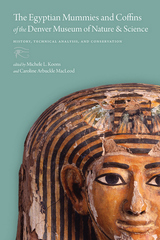 The Egyptian Mummies and Coffins of the Denver Museum of Nature & Science: History, Technical Analysis, and Conservation
Michele L. Koons
University Press of Colorado, 2020 In the 1970s and 1980s, the Denver Museum of Nature & Science acquired two ancient Egyptian mummies and three coffins. The mummies are the remains of two women who lived in an unknown locale in ancient Egypt. They both died in their thirties and have now been subjected to a number of unpublished scientific and unscientific analyses over the years. In 2016, as DMNS prepared to update its Egyptian Hall, staff scientists decided to reexamine the mummies and coffins using innovative, inexpensive, and accessible techniques.
This interdisciplinary volume provides a history of the mummies’ discovery and relocation to Colorado. It guides the reader through various analytical techniques, detailing past research and introducing new data and best practices for future conservation efforts. The new analysis includes more accurate radiocarbon dating, fully comprehensive data from updated CT scans, examples of Egyptian blue and yellow pigments on the coffins uncovered by non-invasive x-ray fluorescence, unprecedented analysis of the coffin wood, updated translations and stylistic analysis of the text and imagery on the coffins, gas chromatography of the paints and resins, linen analysis, and much more.
The Egyptian Mummies and Coffins of the Denver Museum of Nature & Science provides replicable findings and consistent terminology for institutions performing holistic studies on extant museum collections of a range of material types. It will add substantially to what we know about the effective conservation of Egyptian mummies and coffins.
Contributors: Christopher H. Baisan, Hans Barnard, Bonnie Clark, Pearce Paul Creasman, Farrah Cundiff, Jessica M. Fletcher, Kari L. Hayes, Kathryn Howley, Stephen Humphries, Keith Miller, Vanessa Muros, Robyn Price, David Rubinstein, Judith Southward, Jason Weinman
Egyptian Mummies: Revised Edition
Carol Andrews
Harvard University Press Why did the Egyptians try to preserve their dead for eternity? How did they succeed? Carol Andrews answers these questions in a fully illustrated survey of the techniques of mummification, the religious beliefs that lay behind the practice, the ornate coffins and elaborate tombs that housed the bodies, and the grave goods that accompanied them. She explains how animals also came to be embalmed and relates the curious role assumed by Egyptian mummies in European culture and mythology. This book has long proved fascinating reading; it is now available in an updated format.
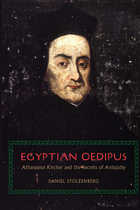 Egyptian Oedipus: Athanasius Kircher and the Secrets of Antiquity
Daniel Stolzenberg
University of Chicago Press, 2013 A contemporary of Descartes and Newton, Athanasius Kircher, S. J. (1601/2–80), was one of Europe’s most inventive and versatile scholars in the baroque era. He published more than thirty works in fields as diverse as astronomy, magnetism, cryptology, numerology, geology, and music. But Kircher is most famous—or infamous—for his quixotic attempt to decipher the Egyptian hieroglyphs and reconstruct the ancient traditions they encoded. In 1655, after more than two decades of toil, Kircher published his solution to the hieroglyphs, Oedipus Aegyptiacus, a work that has been called “one of the most learned monstrosities of all times.” Here Daniel Stolzenberg presents a new interpretation of Kircher’s hieroglyphic studies, placing them in the context of seventeenth-century scholarship on paganism and Oriental languages. Situating Kircher in the social world of baroque Rome, with its scholars, artists, patrons, and censors, Stolzenberg shows how Kircher’s study of ancient paganism depended on the circulation of texts, artifacts, and people between Christian and Islamic civilizations. Along with other participants in the rise of Oriental studies, Kircher aimed to revolutionize the study of the past by mastering Near Eastern languages and recovering ancient manuscripts hidden away in the legendary libraries of Cairo and Damascus. The spectacular flaws of his scholarship have fostered an image of Kircher as an eccentric anachronism, a throwback to the Renaissance hermetic tradition. Stolzenberg argues against this view, showing how Kircher embodied essential tensions of a pivotal phase in European intellectual history, when pre-Enlightenment scholars pioneered modern empirical methods of studying the past while still working within traditional frameworks, such as biblical history and beliefs about magic and esoteric wisdom.
Egyptian Painting
T. G. H. James
Harvard University Press, 1986 From the earliest times the Egyptians used bold, bright colours to decorate their buildings, sculptures, papyri, coffins and funerary chests. The large tomb-paintings in the British Museum are the most brilliant examples of their artistry but their love of colour shows also in the small vignettes of painted papyri.
This book surveys the whole range of Egyptian painting, illustrated chiefly by the wealth of material in the British Museum. T. G. H. James examines the material used by the ancient painters and explains the conventions and methods which governed some great artists, whose work should be valued in its own right as well as for its incomparable record of Egyptian life 3,000 years ago.
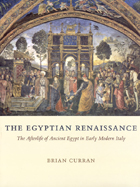 The Egyptian Renaissance: The Afterlife of Ancient Egypt in Early Modern Italy
Brian Curran
University of Chicago Press, 2007 Fascination with ancient Egypt is a recurring theme in Western culture, and here Brian Curran uncovers its deep roots in the Italian Renaissance, which embraced not only classical art and literature but also a variety of other cultures that modern readers don’t tend to associate with early modern Italy. Patrons, artists, and spectators of the period were particularly drawn, Curran shows, to Egyptian antiquity and its artifacts, many of which found their way to Italy in Roman times and exerted an influence every bit as powerful as that of their more familiar Greek and Roman counterparts.
Curran vividly recreates this first wave of European Egyptomania with insightful interpretations of the period’s artistic and literary works. In doing so, he paints a colorful picture of a time in which early moderns made the first efforts to decipher Egyptian hieroglyphs, and popes and princes erected pyramids and other Egyptianate marvels to commemorate their own authority. Demonstrating that the emergence of ancient Egypt as a distinct category of historical knowledge was one of Renaissance humanism’s great accomplishments, Curran’s peerless study will be required reading for Renaissance scholars and anyone interested in the treasures and legacy of ancient Egypt.
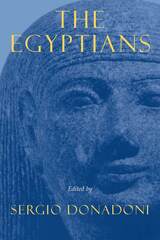 The Egyptians
Edited by Sergio Donadoni
University of Chicago Press, 1997 The Egyptians is a vibrant, accessible introduction to the people who lived along the Nile for almost thirty-five centuries. In this collection of essays, eleven internationally renowned Egyptologists present studies of ancient Egyptians arranged by social type—slaves, craftsmen, priests, bureaucrats, the pharaoh, peasants, and women, among others. These individual essays are filled with a wealth of historical detail that both informs and fascinates: we learn, for example, that Egyptian peasants could not afford burial (their corpses were abandoned on the desert fringe), and that it was the bureaucrats who made the Egyptian system tick (the pyramids could not have been built without them).
Read consecutively, the portraits merge to create a larger picture of Egyptian culture, state, and society. The framework of the Egyptian state, in particular, is touched upon in each essay, describing the meticulous administration and well-organized hierarchical system that fostered centuries of stability and prosperity.
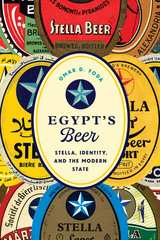 Egypt's Beer: Stella, Identity, and the Modern State
By Omar D. Foda
University of Texas Press, 2019 Although alcohol is generally forbidden in Muslim countries, beer has been an important part of Egyptian identity for much of the last century. Egypt’s Stella beer (which only coincidentally shares a name with the Belgian beer Stella Artois) became a particularly meaningful symbol of the changes that occurred in Egypt after British Occupation. Weaving cultural studies with business history, Egypt’s Beer traces Egyptian history from 1880 to 2003 through the study of social, economic, and technological changes that surrounded the production and consumption of Stella beer in Egypt, providing an unparalleled case study of economic success during an era of seismic transformation. Delving into archival troves—including the papers of his grandfather, who for twenty years was CEO of the company that produced Stella—Omar D. Foda explains how Stella Beer achieved a powerful presence in all popular forms of art and media, including Arabic novels, songs, films, and journalism. As the company’s success was built on a mix of innovation, efficient use of local resources, executive excellence, and shifting cultural dynamics, this is the story of the rise of a distinctly Egyptian “modernity” seen through the lens of a distinctly Egyptian brand.
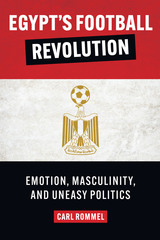 Egypt’s Football Revolution: Emotion, Masculinity, and Uneasy Politics
By Carl Rommel
University of Texas Press, 2021 Both a symbol of the Mubarak government’s power and a component in its construction of national identity, football served as fertile ground for Egyptians to confront the regime’s overthrow during the 2011 revolution. With the help of the state, appreciation for football in Egypt peaked in the late 2000s. Yet after Mubarak fell, fans questioned their previous support, calling for a reformed football for a new, postrevolutionary nation. In Egypt’s Football Revolution, Carl Rommel examines the politics of football as a space for ordinary Egyptians and state forces to negotiate a masculine Egyptian chauvinism. Basing his discussion on several years of fieldwork with fans, players, journalists, and coaches, he investigates the increasing attention paid to football during the Mubarak era; its demise with the 2011 uprisings and 2012 Port Said massacre, which left seventy-two fans dead; and its recent rehabilitation. Cairo’s highly organized and dedicated Ultras fans became a key revolutionary force through their antiregime activism, challenging earlier styles of fandom and making visible entrenched ties between sport and politics. As the appeal of football burst, alternative conceptions of masculinity, emotion, and politics came to the fore to demand or prevent revolution and reform.
Eigenstructure Control Algorithms: Applications to aircraft/rotorcraft handling qualities design
S. Srinathkumar
The Institution of Engineering and Technology, 2011 Eigenstructure control involves modification of both the eigenvalues and eigenvectors of a system using feedback. Based on this key concept, algorithms are derived for the design of control systems using controller structures such as state feedback, output feedback, observer-based dynamic feedback, implicit and explicit modelfollowing, etc. The simple-to-use algorithms are well suited to evolve practical engineering solutions.
Eight 1/2 Federico Fellini
Affron, Charles
Rutgers University Press, 1987 8 1/2 is among the greatest films of one of the masters of Italian cinema, Federico Fellini. This is the first English translation of the dialogue and the first complete continuity script of 8 1/2. This richly comic work, long recognized as the most important expression of the director's views about himself and his art, communicates to its viewers an understanding of the processes of filmmaking itself. 8 1/2 is the story of a director's efforts to make a film; it depicts the conditions of creativity, the struggle waged between the individual and the world, a struggle that finally makes some sense out of life and art.
 Eight Dramas of Calderón
Pedro Calderón de la Barca
University of Illinois Press, 1919 Throughout the world, people believe that much of what they do is accidental, ordinary, and inconsequential, while other acts can bring on divine retribution or earn eternal grace. In Man and the Sacred, Caillois demonstrates how humanity's ambiguous attitude toward the sacred influences behavior and culture.
Drawing on a diverse array of ethnographic contexts, including the sexual rituals of the Ba-Thong of South Africa and evidence drawn from aboriginal Australian, Eskimo, and traditional Chinese social systems, Caillois analyzes the role of the forbidden in the social cohesion of the group. He examines the character of the sacred in the light of specific instances of taboos and transgressions, exploring wide differences in attitudes toward diet and sex and extreme behaviors associated with the sacred, such as rapture and paroxysm. He also discusses the festival--an exuberant explosion following a period of strict repression--and compares its functions with those of modern war.
A classic study of one of the most fundamental aspects of human social and spiritual life, Man and the Sacred--presented here in Meyer Barash's superb English translation--is a companion volume to Caillois's Man, Play and Games.
 Eight Mile High
Jim Ray Daniels
Michigan State University Press, 2014 In these linked stories, the constants are the places—from Eight Mile High, the local high school, to Eight Miles High, the local bar; from The Clock, a restaurant that never closes, to Stan’s, a store that sells misfit clothes. Daniels’s characters wander Detroit, a world of concrete, where even a small strip of greenery becomes a hideout for mystery and mayhem. Even when they leave town—to Scout camp, or Washington, DC, or the mythical Up North, they take with them their hardscrabble working-class sensibilities and their determination to do what they must do to get by. With a survival instinct that includes a healthy dose of humor, Daniels’s characters navigate work and love, change and loss, the best they can. These characters don’t have the luxury of feeling sorry for themselves, even when they stumble. They dust themselves off and head back into the ring with another rope-a-dope wisecrack. These stories seem to suggest that we are always coming of age, becoming, trying to figure out what it means to be an adult in this world, attempting to figure out a way to forgive ourselves for not measuring up to our own expectations of what it means to lead a successful, happy life.
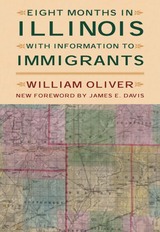 Eight Months in Illinois: With Information to Immigrants
William Oliver. Foreword by James E. Davis
Southern Illinois University Press, 2002 The Illinois frontier offered abundant opportunity, noted English traveler William Oliver after his journey to America in 1841–42, but life there was hard. Accordingly, Oliver advised the wealthy and comfortable to remain in England and counseled the unprosperous to seek their fortunes in America. Written for the poor who would migrate and published in 1843, his Eight Months in Illinois: With Information to Immigrants sought only to provide pertinent, valid, and practical information about what people might encounter in the frontier state. What Oliver actually accomplished, however, was much more: he imparted invaluable insights into and analyses of American life during an era of sweeping social, economic, and political change. In his new foreword to this edition, James E. Davis stresses Oliver’s sincere desire to help British immigrants succeed in America. Oliver, Davis notes, “devoted dozens of pages of advice on numerous matters: various routes to Illinois and their advantages and disadvantages, processes of settling, qualities of western houses, costs of obtaining a new farm.” Oliver discussed other practical matters, such as the importance of having sons. He also assured his intended readership that “in the West, distinction of classes is little known and seldom recognized.” As a document covering the middle west in the 1840s, Eight Months in Illinois: With Information to Immigrants has few equals. Its portrayal of farming and trade in relatively primitive times is historically accurate. It paints a plain picture, laying out the essential facts and presenting the typical incidents that enable us to trace the course of a settler’s simple, diligent, laborious day-to-day life. According to Davis, Oliver depicted “accurate and balanced slices of life in Illinois and America, including nasty insects, crude conditions, and the necessity of work.” And he did so without a trace of anti-American bias. Eight Months in Illinois with Information to Immigrants was reprinted with emendations in 1924 by Walter Hill.
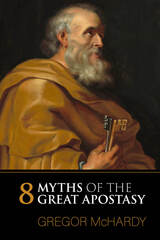 Eight Myths of the Great Apostasy
Gregor McHardy
Signature Books, 2022 Latter-day Saints believe that, following the resurrection of Jesus Christ and the death of the original apostles, a Great Apostasy occurred that took God’s authorized servants from the earth and with them, direct revelation from God. This forced people to fend for themselves spiritually, which only resulted in lost truths, false doctrines, and a state of confusion that could only be remedied by a restoration. This, Mormons believe, was initiated by Joseph Smith, God’s chosen mouthpiece for this new era. But many church members’ understanding of this apostasy is tinged with tainted suppositions and misunderstandings. Statements such as “the priesthood was taken from the earth” and “the gospel was shattered into many pieces” are not only inaccurate but are curtly dismissive of fellow Christians. Gregor McHardy examines the fate of the apostles, the actual dissipation of authority following their deaths, the gradual onset of changed doctrines, and similar topics.
McHardy’s careful, astute examination leads to a realization that Jesus’s prediction that “the gates of hell shall not prevail” against the organization Peter led was accurate. With that understanding, today’s Latter-day Saints can craft more positive, engaging statements about the nature and meaning of their Restoration.
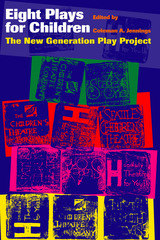 Eight Plays for Children: The New Generation Play Project
Edited by Coleman A. Jennings
University of Texas Press, 1999 The New Generation Play Project was a daring experiment in American children's theatre. Begun in 1989 by a consortium that included the Seattle Children's Theatre, The Children's Theatre Company of Minneapolis, Stage One: The Louisville Children's Theatre, and the Honolulu Theatre for Youth, the NGPP raised half a million dollars to commission major American dramatists to create new works for young people and to produce these plays over a several-year period. This book provides the full text of the plays produced through the NGPP: - Constance Congdon, Beauty and the Beast
- Velina Hasu Houston, Hula Heart
- Tina Howe, East of the Sun and West of the Moon
- Len Jenkin, The Invisible Man
- Mark Medoff, Kringle's Window
- Eric Overmyer, Duke Kahanamoku vs. The Surfnappers
- Michael Weller, Dogbrain
- Y York, The Witch of Blackbird Pond
In his introduction, Coleman Jennings describes the work of the NGPP, some of the controversies surrounding its selection of playwrights who do not ordinarily write for young audiences, as well as the playwrights' reactions to the project, and the critical reception of the plays. Suzan Zeder, one of the nation's leading playwrights for family audiences, supplies the foreword.
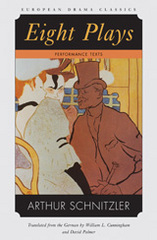 Eight Plays: Performance Texts
Arthur Schnitzler
Northwestern University Press, 2007 The plays of Arthur Schnitzler have in recent years come to be recognized as masterpieces of modernism. This collection presents the most accurate translations available of Schnitzler's works, passing up opportunities to paraphrase and instead flushing out vivid detail and psychological insight by combining a sensitive interpretation of the playwright's sometimes ironic, sometimes farcical, temperament with a faithful re-creation of dialogue.
The volume includes Schnitzler's popular Roundelay (La Ronde) and Anatol, as well as rarely translated works like Professor Bernhardi and Hour of Realizing. There are also additional scenes and an alternate ending to Anatol that are seldom found in translation or even in German versions of the play. With conscientious attention to the rhythms of speech and respect for the completeness of the works, these translations offer new possibilities for bringing Schnitzler's works to the contemporary stage and new insights for anyone interested in drama, literature, or history.
Eight Prison Camps: A Dutch Family in Japanese Java
Dieuwke Wendelaar Bonga
Ohio University Press, 1996 Eldest daughter of eight children, the author grew up in Surakarta, Java, in what is now Indonesia. In the months following the bombing of Pearl Harbor, however, Dutch nationals were rounded up by Japanese soldiers and put in internment camps. Her father and brother were sent to separate men’s camps, leaving the author, her mother, and the five younger children in the women’s camp. In this and later seven other prison camps in central Java, their lives gradually deteriorated from early days of fear and crowding to near starvation, forced labor, beatings, and seeing others disappear or die. On the family’s return to Holland after the war, they found a nation recovering from German occupation and largely ignorant of the horror of the Far East experience.
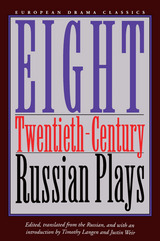 Eight Twentieth-Century Russian Plays
Timothy Langen and Justin Weir
Northwestern University Press, 2000 Russia produced more notable dramas in the twentieth century than at any other time in its history, yet many of the plays from this period have been only sporadically available in English, and others have never been translated before. For each of these eight works, Timothy Langen and Justin Weir provide an insightful introduction to the literary, cultural, and political contexts in which the plays first appeared, considering the influence that various literary movements had on the development of Russian drama and exploring the effect of the increasingly politicized climate of the new Soviet state.
Included in this volume:
Sacred Blood, by Zinaida Gippius; The Unknown Woman, by Alexander Blok; Vladimir Mayakovsky, by Vladimir Mayakosky; The Case of the Entry Room, by Victor Ardov; Squaring the Circle, by Valentin Kataev; Elizaveta Bam, by Daniil Kharms; Grain, by Vladimir Kirshon; and The Guests, by Leonid Zorin.
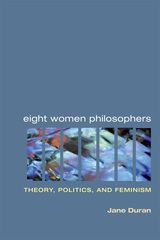 Eight Women Philosophers: Theory, Politics, and Feminism
Jane Duran
University of Illinois Press, 2005 Spanning over nine hundred years, Eight Women Philosophers is the first singly-authored work to trace the themes of standard philosophical theorizing and feminist thought across women philosophers in the Western tradition. Jane Duran has crafted a comprehensive overview of eight women philosophers--Hildegard of Bingen, Anne Conway, Mary Astell, Mary Wollstonecraft, Harriet Taylor Mill, Edith Stein, Simone Weil, and Simone de Beauvoir--that underscores the profound and continuing significance of these thinkers for contemporary scholars.
Duran devotes one chapter to each philosopher and provides a sustained critical analysis of her work, utilizing aspects of Continental theory, poststructuralist theory, and literary theory. She situates each philosopher within her respective era and in relation to her intellectual contemporaries, and specifically addresses the contributions each has made to major areas such as metaphysics/epistemology, theory of value, and feminist theory. She affirms the viability and importance of recovering these women's overlooked work and provides a powerful answer to the question of why the rubric "women philosophers" remains so valuable.
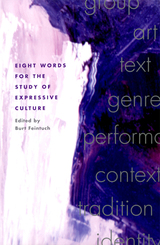 Eight Words for the Study of Expressive Culture
Edited by Burt Feintuch
University of Illinois Press, 2003 Group. Art. Text. Genre. Performance. Context. Tradition. Identity.
No matter where we are--in academic institutions, in cultural agencies, at home, or in a casual conversation--these are words we use when we talk about creative expression in its cultural contexts. Eight Words for the Study of Expressive Culture is a thoughtful, interdisciplinary examination of the keywords that are integral to the formulation of ideas about the diversity of human creativity, presented as a set of essays by leading folklorists.
Many of us use these eight words every day. We think with them. We teach with them. Much of contemporary scholarship rests on their meanings and implications. They form a significant part of a set of conversations extending through centuries of thought about creativity, meaning, beauty, local knowledge, values, and community. Their natural habitats range across scholarly disciplines from anthropology and folklore to literary and cultural studies and provide the framework for other fields of practice and performance as well.
Eight Words for the Study of Expressive Culture is a much-needed study of keywords that are frequently used but not easily explained. Anchored by Burt Feintuch’s cogent introduction, the book features essays by Dorothy Noyes, Gerald L. Pocius, Jeff Todd Titon, Trudier Harris, Deborah A. Kapchan, Mary Hufford, Henry Glassie, and Roger D. Abrahams.
Eighteenth-Century Contexts: Historical Inquiries in Honor of Philip Harth
Howard D. Weinbrot
University of Wisconsin Press, 2001 Eighteenth-Century Contexts offers a lively array of essays that consider literary, intellectual, political, theological, and cultural aspects of the years 1650–1800, in the British Isles and Europe. At the center of the book is Jonathan Swift; several essays delve into his poetry, his similarities to Bernard Mandeville, his response to Anthony Collins’s Discourse of Free-Thinking, and the relationship between his Gulliver’s Travels and Thomas More’s Utopia. Other essays discuss Alexander Pope, eighteenth-century music and poetry, William Congreve, James Boswell, Samuel Richardson, and women’s novels of the eighteenth century.
Eighteenth-Century Environmental Humanities
Jeremy Chow
Bucknell University Press, 2023 This groundbreaking new volume unites eighteenth-century studies and the environmental humanities, showcasing how these fields can vibrantly benefit one another. In eleven chapters that engage a variety of eighteenth-century texts, contributors explore timely themes and topics such as climate change, new materialisms, the blue humanities, indigeneity and decoloniality, and green utopianism. Additionally, each chapter reflects on pedagogical concerns, asking: How do we teach eighteenth-century environmental humanities? With particular attention to the voices of early-career scholars who bring cutting-edge perspectives, these essays highlight vital and innovative trends that can enrich both disciplines, making them essential for classroom use.
 Eighteenth-Century Literary History: An MLQ Reader
Marshall Brown, ed.
Duke University Press, 1999 Viewed as a crucible of modernity, the eighteenth century has become a special focus of Modern Language Quarterly, a journal that has led the revival of literary history as a subject for empirical study and theoretical reflection. The essays in this volume, which cover a broad cross-section of eighteenth-century literary history, represent the best studies of this period recently published in MLQ. While examining different parts of the century, as well as different aspects and countries, contributors explore the intersection of literary studies with history, philosophy, psychology, and the visual arts. They discuss a creative range of topics, including feminism, nationalism, domestic ideology, the classical novel–drama–lyric poetry triad, and both aesthetic and philosophical writings. This span of subjects and approaches extends the focus of Eighteenth-Century Literary History beyond its period to project a spirit of inquiry onto literary history in general. Contributors. Nancy Armstrong, Marshall Brown, Sanford Budick, Catherine Gallagher, Thomas M. Kavanagh, Jon Klancher, Jill Kowalik, Jonathan Brody Kramnick, Christie McDonald, Jerome McGann, Ruth Perry, Michael B. Prince, Leonard Tennenhouse
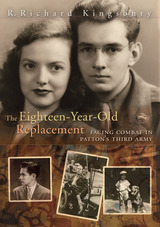 The Eighteen-Year-Old Replacement: Facing Combat in Patton's Third Army
R. Richard Kingsbury
University of Missouri Press, 2008 When the United States entered the Second World War, eighteen-year-old enlistees were routinely assigned temporary duties and not sent into battle until they turned nineteen. But as the fighting dragged on, America was eventually forced to draft younger men into combat to replace wounded troops—and following the Battle of the Bulge, more than 300,000 eighteen-year-olds were sent as replacements to the army’s decimated divisions. In The Eighteen-Year-Old Replacement, Richard Kingsbury brings an often-overlooked perspective to the annals of World War II. Torn from an ordinary teenager’s life in the Midwest, young Dick was drafted six weeks after D-Day and rushed with other eighteen-year-olds to the Siegfried Line to bolster Patton’s 94th Infantry Division. His reminiscence provides a moving, diarylike account of what he endured both physically and emotionally—and tells how he went from boyhood to manhood almost overnight. In prose that is both succinct and evocative, Kingsbury recounts his experiences as a rifleman during the final bloody battles in Germany, giving readers a real feel for what combat was like for a raw recruit. He recalls his first night in a foxhole on the front line and the “unbelievable luxury” of sleeping in a barn’s hayloft. He relives freezing cold at the Bulge, which permanently damaged his legs, and the pounding of enemy artillery during Patton’s breakthrough of the German West Wall, which affected his hearing for life. More poignantly, Kingsbury shares his anxieties over killing—as well as the distinct possibility of being killed as Wehrmacht tanks mercilessly blasted individual foxholes at Bannholz Woods. He vividly recalls Patton’s attack on Ludwigshafen, on the west bank of the Rhine, where he took a German bullet in his chest—and where three of the six newly arrived eighteen-year-olds were killed. Interspersed with the accounts of battle are letters between Dick and Mary Jo, his sweetheart back home, capturing the blossoming of romance that transcended both distance and bloodshed. His book casts a new light on war—and courtship—in an era when boys were rushed from the home front to the front lines. By showing how crucial the contribution of these young men was to the war effort, this book gives the eighteen-year-old replacements the recognition they have long deserved.
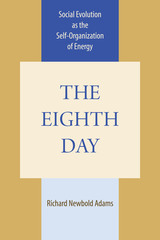 The Eighth Day: Social Evolution as the Self-Organization of Energy
By Richard Newbold Adams
University of Texas Press, 1988 Can human social evolution be described in terms common to other sciences, most specifically, as an energy process? The Eighth Day reflects a conviction that the human trajectory, for all its uniqueness and indeterminism, will never be satisfactorily understood until it is framed in dynamics that are common to all of nature. The problem in doing this, however, lies in ourselves. The major social theories have failed to treat human social evolution as a component of broader natural processes. The Eighth Day argues that the energy process provides a basis for explaining, comparing, and measuring complex social evolution. Using traditional ecological energy flow studies as background, society is conceived as a self-organization of energy. This perspective enables Adams to analyze society in term of the natural selection of self-organizing energy forms and the trigger processes basic to it. Domestication, civilization, socioeconomic development, and the regulation of contemporary industrial nation-states serve to illustrate the approach. A principal aim is to explore the limitation that energy process imposes on human social evolution as well as to clarify the alternatives that it allows. Richly informed by contemporary anthropological historicism, sociobiology, and Marxism, The Eighth Day avoids simple reductionism and denies facile ideological categorization. Adams builds on work in nonequilibrium thermodynamics and theoretical biology and brings three decades of his own work to an analysis of human society that demands an extreme materialism in which human thought and action find a central place.
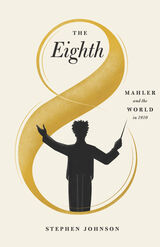 The Eighth: Mahler and the World in 1910
Stephen Johnson
University of Chicago Press, 2020 September 12, 1910: The world premiere of Gustav Mahler’s Eighth Symphony and the artistic breakthrough for which the composer had yearned all his life. Munich’s new Musik Festhalle was filled to capacity on two successive evenings for the performances, which were received with rapturous applause. Representatives of many European royal houses were in attendance, along with an array of stars from the musical and literary world, including Thomas Mann and the young Arnold Schoenberg. Also present were Alma Mahler, the composer’s wife, and Alma’s longtime lover, the architect Walter Gropius. Knowledge of their relationship would precipitate an emotional crisis in Mahler that, compounded with his heart condition and the loss of his young daughter Maria, would lead to his premature death the next year.
In The Eighth, Stephen Johnson provides a masterful account of the symphony’s far-reaching consequences and its effect on composers, conductors, and writers of the time. The Eighth looks behind the scenes at the demanding one-week rehearsal period leading up to the premiere—something unheard of at the time—and provides fascinating insight into Mahler’s compositional habits, his busy life as a conductor, his philosophical and literary interests, and his personal and professional relationships. Johnson expertly contextualizes Mahler’s work among the prevailing attitudes and political climate of his age, considering the art, science, technology, and mass entertainment that informed the world in 1910. The Eighth is an absorbing history of a musical masterpiece and the troubled man who created it.
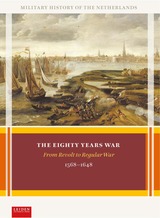 The Eighty Years War: From Revolt to Regular War, 1568-1648
Petra Groen
Leiden University Press, 2025 The Eighty Years War offers an insight into the military factors at play in the creation of the Dutch Republic. In 1648 the Spanish empire agreed to a peace treaty that ended decades of fighting and resulted in the division of the Low Countries and the birth of the Republic. From the outset, the conflict between the Dutch insurgents and their Spanish sovereign lord captured the imagination. As a result of eighty years of warfare, the provincial States and the Calvinists gained the upper hand in the north and the Spanish rulers and the Catholic church in the south. Against all expectations, Philip II and his successors failed to win a conclusive victory over their rebellious Dutch subjects; in the end Spain was compelled to admit military defeat at the negotiating table in Münster and recognise the breakaway Dutch provinces as a sovereign state. The birth of the new state was to no small degree determined by the balance of military power on land and at sea, and this book, illustrated in colour throughout, brings together all aspects of our country’s military history for the first time. Filling a gap in current scholarship, The Eighty Years War investigates the relationship between maritime and land-based developments in the fields of weapons technology, tactics and organisation in the period from 1568 to 1648.
Einstein
Peter Smith
Haus Publishing, 2005 Albert Einstein re-wrote the textbooks of science in 1905: physics since has been little more than a series of footnotes to the theories of a 26-year-old patent-office clerk. Einstein's science and emotional life come together in this vivid portrait of a rebellious and contradictory figure, a pacifist whose legendary equation E=mc2 opened scientists' eyes to the terrible power within every atom.
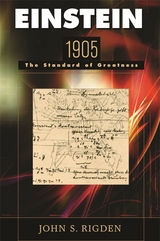 Einstein 1905: The Standard of Greatness
John S. Rigden
Harvard University Press, 2005 For Albert Einstein, 1905 was a remarkable year. It was also a miraculous year for the history and future of science. In six short months, from March through September of that year, Einstein published five papers that would transform our understanding of nature. This unparalleled period is the subject of John Rigden's book, which deftly explains what distinguishes 1905 from all other years in the annals of science, and elevates Einstein above all other scientists of the twentieth century.
Rigden chronicles the momentous theories that Einstein put forth beginning in March 1905: his particle theory of light, rejected for decades but now a staple of physics; his overlooked dissertation on molecular dimensions; his theory of Brownian motion; his theory of special relativity; and the work in which his famous equation, E = mc2, first appeared. Through his lucid exposition of these ideas, the context in which they were presented, and the impact they had--and still have--on society, Rigden makes the circumstances of Einstein's greatness thoroughly and captivatingly clear. To help readers understand how these ideas continued to develop, he briefly describes Einstein's post-1905 contributions, including the general theory of relativity.
One hundred years after Einstein's prodigious accomplishment, this book invites us to learn about ideas that have influenced our lives in almost inconceivable ways, and to appreciate their author's status as the standard of greatness in twentieth-century science.
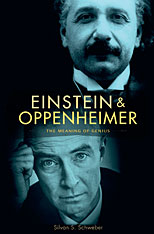 Einstein and Oppenheimer: The Meaning of Genius
Silvan S. Schweber
Harvard University Press, 2008 Albert Einstein and J. Robert Oppenheimer, two iconic scientists of the twentieth century, belonged to different generations, with the boundary marked by the advent of quantum mechanics. By exploring how these men differed—in their worldview, in their work, and in their day—this book provides powerful insights into the lives of two critical figures and into the scientific culture of their times. In Einstein’s and Oppenheimer’s philosophical and ethical positions, their views of nuclear weapons, their ethnic and cultural commitments, their opinions on the unification of physics, even the role of Buddhist detachment in their thinking, the book traces the broader issues that have shaped science and the world.
Einstein is invariably seen as a lone and singular genius, while Oppenheimer is generally viewed in a particular scientific, political, and historical context. Silvan Schweber considers the circumstances behind this perception, in Einstein’s coherent and consistent self-image, and its relation to his singular vision of the world, and in Oppenheimer’s contrasting lack of certainty and related non-belief in a unitary, ultimate theory. Of greater importance, perhaps, is the role that timing and chance seem to have played in the two scientists’ contrasting characters and accomplishments—with Einstein’s having the advantage of maturing at a propitious time for theoretical physics, when the Newtonian framework was showing weaknesses.
Bringing to light little-examined aspects of these lives, Schweber expands our understanding of two great figures of twentieth-century physics—but also our sense of what such greatness means, in personal, scientific, and cultural terms.
 Einstein and the Quantum Revolutions
Alain Aspect
University of Chicago Press, 2024 A Nobel laureate offers a brief lesson on physics’ biggest mystery, accessibly explaining the two quantum revolutions that changed our understanding of reality.
At the start of the twentieth century, the first quantum revolution upset our vision of the world. New physics offered surprising realities, such as wave-particle duality, and led to major inventions: the transistor, the laser, and today’s computers. Less known is the second quantum revolution, arguably initiated in 1935 during a debate between giants Albert Einstein and Niels Bohr. This revolution is still unfolding. Its revolutionaries—including the author of this short accessible book, Nobel Prize–winning physicist Alain Aspect—explore the notion of entangled particles, able to interact at seemingly impossible distances. Aspect’s research has helped to show how entanglement may both upend existing technologies, like cryptography, and usher in entirely new ones, like quantum computing. Explaining this physics of the future, this work tells a story of how philosophical debates can shape new realities.
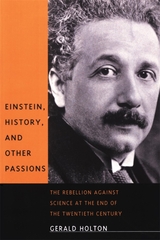 Einstein, History, and Other Passions: The Rebellion against Science at the End of the Twentieth Century
Gerald Holton
Harvard University Press “[The] book makes a wonderfully cohesive whole. It is rich in ideas, elegantly expressed. I highly recommend it to any serious student of science and culture.”—Lucy Horwitz, Boston Book Review
“An important and lasting contribution to a more profound understanding of the place of science in our culture.”—Hans C. von Baeyer, Boston Sunday Globe
“[Holton’s] themes are central to an understanding of the nature of science, and Holton does an excellent job of identifying and explaining key features of the scientific enterprise, both in the historical sense and in modern science…I know of no better informed scientist who has studied the nature of science for half a century.”—Ron Good, Science and Education
Through his rich exploration of Einstein’s thought, Gerald Holton shows how the best science depends on great intuitive leaps of imagination, and how science is indeed the creative expression of the traditions of Western civilization.
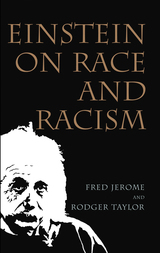 Einstein on Race and Racism: Einstein on Race and Racism, First Paperback Edition
Jerome, Fred
Rutgers University Press, 2005 Honorable Mention in the 2005 Gustavus Myers Outstanding Book Awards
Nearly fifty years after his death, Albert Einstein remains one of America's foremost cultural icons. A thicket of materials, ranging from scholarly to popular, have been written, compiled, produced, and published about his life and his teachings. Among the ocean of Einsteinia-scientific monographs, biographies, anthologies, bibliographies, calendars, postcards, posters, and Hollywood films-however, there is a peculiar void when it comes to the connection that the brilliant scientist had with the African American community. Nowhere is there any mention of his close relationship with Paul Robeson, despite Einstein's close friendship with him, or W.E.B. Du Bois, despite Einstein's support for him.
This unique volume is the first to bring together a wealth of writings by the scientist on the topic of race. Although his activism in this area is less well known than his efforts on behalf of international peace and scientific cooperation, Einstein spoke out vigorously against racism both in the United States and around the world. Fred Jerome and Rodger Taylor suggest that one explanation for this historical amnesia is that Einstein's biographers avoided "controversial" topics, such as his friendships with African Americans and his political activities, including his involvement as co-chair of an antilynching campaign, fearing that mention of these details may tarnish the feel-good impression his image lends topics of science, history, and America.
Combining the scientist's letters, speeches, and articles with engaging narrative and historical discussions that place his public statements in the context of his life and times, this important collection not only brings attention to Einstein's antiracist public activities, but also provides insight into the complexities of antiracist culture in America. The volume also features a selection of candid interviews with African Americans who knew Einstein as children.
For a man whose words and reflections have influenced so many, it is long overdue that Einstein's thoughts on this vital topic are made easily accessible to the general public.
 Einstein, Polanyi, and the Laws of Nature
Lydia Jaeger
Templeton Press, 2010
What is the relationship between religious belief and the study of nature, between theology and science? This is the fundamental preoccupation of the three different studies in Einstein, Polanyi, and the Laws of Nature.
By exploring the highly original yet little-known thought of Michael Polanyi, Jaeger highlights the inherent personal investment in any quest for knowledge, including the scientific enterprise, thus raising the question of the objectivity of human knowledge. Considered to be the most incredible mind of the twentieth century, Albert Einstein saw scientific research as the fruit of the “cosmic religion.” His response to the question of the relationship between faith and science also receives the close analysis it deserves. Finally, Jaeger is interested in science’s propensity to use the concept of laws of nature, an idea also found in the Bible. She paves the way for interdisciplinary dialogue by examining the similarities and differences.
The synthesis of these three complementary studies brings out the collaboration between belief and knowledge, thus establishing a bridge between two noble human activities: faith and scientific research. It will interest all serious followers of the ongoing science and religion dialogue.
Einstein Simplified: Cartoons on Science
Harris, Sidney
Rutgers University Press, 2004 Sidney Harris is America's foremost science cartoonist. He has been praised by luminaries such as Linus Pauling and Isaac Asimov, as well as countless others throughout the world, for his ability to find humor in what is traditionally regarded as a somewhat dry subject.
Harris does for science what Scott Adams (the creator of Dilbert) does for business: his unique perspective illustrates the scientific and technological environments in such a funny way that everyone can enjoy it.
Now this best-selling book has been updated and revised with new cartoons. It's the perfect gift for a whole new generation of fans. But even if you're only mildly interested in science and technology--or just think that what goes on in those disciplines can be wacky at times--then this book is guaranteed to make you laugh out loud!
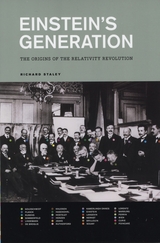 Einstein's Generation: The Origins of the Relativity Revolution
Richard Staley
University of Chicago Press, 2009 Why do we celebrate Einstein’s era above all other epochs in the history of physics? Much of the history of physics at the beginning of the twentieth century has been written with a sharp focus on a few key figures and a handful of notable events. Einstein’s Generation offers a distinctive new approach to the origins of modern physics by exploring both the material culture that stimulated relativity and the reaction of Einstein’s colleagues to his pioneering work. Richard Staley weaves together the diverse strands of experimental and theoretical physics, commercial instrument making, and the sociology of physics around 1900 to present the collective efforts of a group whose work helped set the stage for Einstein’s revolutionary theories and the transition from classical to modern physics that followed. Collecting papers, talks, catalogues, conferences, and correspondence, Staley juxtaposes scientists’ views of relativity at the time to modern accounts of its history. Einstein’s Generation tells the story of a group of individuals which produced some of the most significant advances of the twentieth century; and challenges our celebration of Einstein’s era above all others.
 Einstein’s Greatest Blunder?: The Cosmological Constant and Other Fudge Factors in the Physics of the Universe
Donald Goldsmith
Harvard University Press, 1995 The Big Bang: A Big Bust? The cosmos seems to be in crisis, and you don’t have to be a rocket scientist to see it. How, for instance, can the universe be full of stars far older than itself? How could space have once expanded faster than the speed of light? How can most of the matter in the universe be “missing”? And what kind of truly weird matter could possibly account for ninety percent of the universe’s total mass?
This brief and witty book, by the award-winning science writer Donald Goldsmith, takes on these and other key questions about the origin and evolution of the cosmos. By clearly laying out what we currently know about the universe as a whole, Goldsmith lets us see firsthand, and judge for ourselves, whether modern cosmology is in a state of crisis. Einstein’s Greatest Blunder? puts the biggest subject of all—the story of the universe as scientists understand it—within the grasp of English-speaking earthlings.
When Albert Einstein confronted a cosmological contradiction, in 1917, his solution was to introduce a new term, the “cosmological constant.” For a time, this mathematical invention solved discrepancies between his model and the best observations available, but years later Einstein called it the “greatest blunder” of his career. And yet the cosmological constant is still alive today—it is one of the “fudge factors” employed by cosmologists to make their calculations fit the observational data. Theoretical cosmologists, shows Goldsmith, continually reshape their models in an honest (if sometimes futile) effort to explain apparent chaos as cosmic harmony—whether their specific concern is the age and expansion rate of the cosmos, hot versus cold “dark matter,” the inflationary theory of the big bang, the explanation of large-scale structure, or the density and future of the universe.
Engagingly written and richly illustrated with photographs taken by the Hubble Space Telescope, Einstein’s Greatest Blunder? is a feast for the eye and mind.
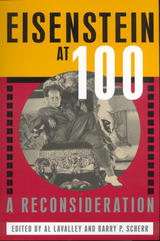 Eisenstein at 100
Edited by Al LaValley and P. Scherr
Rutgers University Press, 2001 Like many other figures once closely associated with the Soviet state, the great Russian filmmaker Sergei Eisenstein has become the subject of renewed interest. A decade after the fall of the Soviet Union, and with fresh material on his life and art now available, a more complex picture of Eisenstein is emerging. This collection-featuring the work of major film theorists and Russian scholars-offers the first post-Soviet reconsideration of Eisenstein's contribution to world cinema.
The contributors address themes previously avoided by Soviet critics, such as sexuality, religion, gender, and politics, in The Battleship Potemkin, October, Alexander Nevsky, and Ivan the Terrible. These films and others are also reassessed in light of a more thorough knowledge of Eisenstein’s life and of the complicated historical, cultural, and political contexts in which he worked. Of particular concern here is Eisenstein’s struggle with Soviet censorship, which resulted in a tenuous balance between the pressures of the state and his goals as an artist. Essays explore the manner in which Eisenstein’s later theoretical writings reveal continuity with the more well known earlier work, issues of historical revisionism, and the relationship between autobiography and the films. Eisenstein’s undeniable influence on his contemporaries and subsequent generations, as well as his reception by the film community and the public, are illuminated.
Rather than fostering the popular image of Eisenstein as the “inventor” of film montage, the director of Potemkin, and the enthusiastic early supporter of the Bolsheviks, Eisenstein at 100 presents a much richer and more profound picture of Eisenstein the man, the director, and the film theorist.
Eisenstein, Cinema, and History
James Goodwin
University of Illinois Press, 1993 Among early directors, Sergei Eisentein
stands alone as the maker of a fully historical cinema. James Goodwin treats
issues of revolutionary history and historical representation as central to
an understanding of Eisentein's work, which explores two movements within Soviet
history and consciousness: the Bolshevik Revolution and the Stalinist state.
Goodwin articulates intersections
between Eisentein's ideas and aspects of the thought of Walter Benjamin, Georg
Lukács, Ernst Bloch, and Bertolt Brecht. He also shows how the formal
properties and filmic techniques of each work reveal perspectives on history
. Individual chapters focus on Strike, Battleship Potemkin, October, Old
and New, projects of the 1930s, Alexander Nevsky, and Ivan the
Terrible.
Ejidos and Regions of Refuge in Northwestern Mexico
Edited by N. Ross Crumrine and Phil C. Weigand
University of Arizona Press, 1987 The ten essays in this volume present case studies of different cultural groups in northwestern Mexico, analyzed through the concepts of enclaves and regions of refugee initially proposed by Edward Spicer and Gonzalo Aguirre Beltran.
Ejo: Poems, Rwanda, 1991–1994
Derick Burleson
University of Wisconsin Press, 2000 In 1994 the worst episode of genocide since the Holocaust of the Second World War ravaged the Central African country of Rwanda. Derick Burleson lived there and taught at the National University during the two years leading up to the genocide. The poems in this collection explore the cataclysm in a variety of forms and voices through the culture, myths, and customs he absorbed during this time. Ejo, meaning "yesterday and tomorrow" in Kinyarwandan, celebrates in language both lyrical and austere the lives of the friends Burleson made in Rwanda, those who survived to tell their own stories, and those whose voices were silenced.
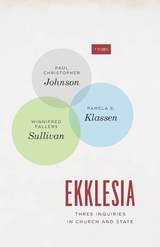 Ekklesia: Three Inquiries in Church and State
Paul Christopher Johnson, Pamela E. Klassen, and Winnifred Fallers Sullivan
University of Chicago Press, 2018 Ekklesia: Three Inquiries in Church and State offers a New World rejoinder to the largely Europe-centered academic discourse on church and state. In contrast to what is often assumed, in the Americas the relationship between church and state has not been one of freedom or separation but one of unstable and adaptable collusion. Ekklesia sees in the settler states of North and South America alternative patterns of conjoined religious and political power, patterns resulting from the undertow of other gods, other peoples, and other claims to sovereignty. These local challenges have led to a continuously contested attempt to realize a church-minded state, a state-minded church, and the systems that develop in their concert. The shifting borders of their separation and the episodic conjoining of church and state took new forms in both theory and practice.
The first of a closely linked trio of essays is by Paul Johnson, and offers a new interpretation of the Brazilian community gathered at Canudos and its massacre in 1896–97, carried out as a joint churchstate mission and spectacle. In the second essay, Pamela Klassen argues that the colonial churchstate relationship of Canada came into being through local and national practices that emerged as Indigenous nations responded to and resisted becoming “possessions” of colonial British America. Finally, Winnifred Sullivan’s essay begins with reflection on the increased effort within the United States to ban Bibles and scriptural references from death penalty courtrooms and jury rooms; she follows with a consideration of the political theological pressure thereby placed on the jury that decides between life and death. Through these three inquiries, Ekklesia takes up the familiar topos of “church and state” in order to render it strange.
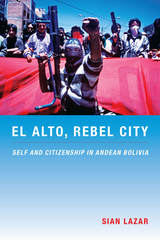 El Alto, Rebel City: Self and Citizenship in Andean Bolivia
Sian Lazar
Duke University Press, 2007 Combining anthropological methods and theories with political philosophy, Sian Lazar analyzes everyday practices and experiences of citizenship in a satellite city to the Bolivian capital of La Paz: El Alto, where more than three-quarters of the population identify as indigenous Aymara. For several years, El Alto has been at the heart of resistance to neoliberal market reforms, such as the export of natural resources and the privatization of public water systems. In October 2003, protests centered in El Alto forced the Bolivian president to resign; in December 2005, the country’s first indigenous president, Evo Morales, was elected. The growth of a strong social justice movement in Bolivia has caught the imagination of scholars and political activists worldwide. El Alto remains crucial to this ongoing process. In El Alto, Rebel City Lazar examines the values, practices, and conflicts behind the astonishing political power exercised by El Alto citizens in the twenty-first century. Drawing on ethnographic fieldwork conducted between 1997 and 2004, Lazar contends that in El Alto, citizenship is a set of practices defined by one’s participation in a range of associations, many of them collectivist in nature. Her argument challenges Western liberal notions of the citizen by suggesting that citizenship is not only individual and national but in many ways communitarian and distinctly local, constituted through different kinds of affiliations. Since in El Alto these affiliations most often emerge through people’s place of residence and their occupational ties, Lazar offers in-depth analyses of neighborhood associations and trade unions. In so doing, she describes how the city’s various collectivities mediate between the state and the individual. Collective organization in El Alto and the concept of citizenship underlying it are worthy of attention; they are the basis of the city’s formidable power to mobilize popular protest.
 El Conde don Pero Vélez y don Sancho el Deseado: Comedia en Tres Actos
Richard Olmsted
University of Minnesota Press, 1944
El Conde don Pero Vélez y don Sancho el Deseado translated by Richard Hubbell Olmsted was first published in 1944. Minnesota Archive Editions uses digital technology to make long-unavailable books once again accessible, and are published unaltered from the original University of Minnesota Press editions.This scholarly and critical edition of Vélez de Guevara’s comedy was first scheduled for publication as volume ten of the famous Spanish series of plays called “Teatro Antiguo,” edited by the Spanish scholar, Ramón Menédez Pidal. But during the Spanish Civil War the plates disappeared from the publishing house in Madrid. However, part of a set of page proofs had been forwarded to Dr. Olmsted for checking and it is from these page proofs, in part, that the type for this volume has been set. The remainder of the text has been taken from a careful transcription which Dr. Olmsted had made from the original manuscript in Madrid.Luis Vélez de Guevara, who died in 1644, was one of the most prolific authors of the Golden Age of Spanish drama, and El Conde don Pero Vélez y don Sancho el Deseado has most of the characteristics typical of its period – it shows the customs and standards of the time, abounds in puns and humor, and unfolds a central love plot. The play is centered around the familiar theme of the jealous zeal of a king to protect the honor of his sister. The story comes from the popular lore of the nation’s history and balladry, being one of the best examples of the drama derived directly from the romancero.An edition of El Conde don Pero Vélez y don Sancho el Deseado was printed in the 17th century, and one copy (apparently only one surviving) is in the possession of the University of California. Dr. Olmsted, in Chapter V, indicates many of the errors in that rare volume, and thus makes the present publication the only reliable edition in existence.
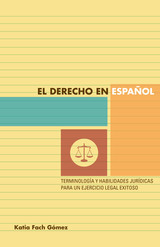 El derecho en español: terminología y habilidades jurídicas para un ejercicio legal exitoso
By Katia Fach Gómez
University of Texas Press, 2014 El español es el segundo idioma más hablado en el mundo. Un número creciente de personas en los Estados Unidos y en otros países son conocedores de este idioma y además lo utilizan profesionalmente en el ámbito jurídico. No obstante, a muchos de ellos les gustaría mejorar su comprensión idiomática y jurídica del mismo. En la actualidad existen pocos recursos didácticos y profesionales a los que recurrir. El derecho en español: Terminología y habilidades jurídicas para un ejercicio legal exitoso es el único libro actualmente en el mercado que ofrece al mismo tiempo instrucción avanzada en español jurídico e información selecta sobre los marcos legales contemporáneos en los que este idioma se utiliza. Este libro monolingüe en español puede ser utilizado en el aula y también como herramienta de auto-aprendizaje por parte de universitarios y profesionales que posean un nivel intermedio de conocimiento del idioma. El libro contiene diez lecciones, cada una de ellas dedicada a un área clave del derecho: constitucional, contratos, actividades bancarias, penal, familia, inmigración, derechos humanos, litigios internacionales y arbitraje. Todas estas lecciones presentan un vocabulario escogido sobre el tema jurídico abordado en ellas, y después ofrecen una serie de ejercicios basados en documentos jurídicos reales procedentes de diversos países de habla hispana. El último capítulo es una guía para facilitar la comprensión de varias películas que contienen interesantes cuestiones legales y que pueden ser utilizadas para el análisis contextual de los temas abordados en las lecciones precedentes. A través de todos estos materiales de capacitación, los lectores aprenderán a utilizar el vocabulario español jurídico en su contexto operativo adecuado, y podrán entender las diferencias lingüísticas y conceptuales entre los distintos países de América Latina y España. Al mismo tiempo se familiarizarán con las disposiciones y los documentos más utilizados en la práctica jurídica en español. Finalmente, también podrán mejorar sus habilidades de escucha y de redacción jurídica.
El Dorado
Peter Campion
University of Chicago Press, 2013 In El Dorado, Peter Campion explores what it feels like to live in America right now, at the beginning of the twenty-first century. Splicing cell-phone chatter with translations of ancient poems, jump-cutting from traditional to invented forms, and turning his high-res lens on everything from box stores to trout streams to airport lounges, Campion renders both personal and collective experience with capacious and subtle skill.
 El Dorado In West Africa: The Gold Mining Frontier, African Labor, and Colonial Capitalism
Raymond E. Dumett
Ohio University Press, 1998 The second half of the nineteenth century witnessed some of the greatest gold mining migrations in history when dreams of bonanza lured thousands of prospectors and diggers to the far corners of the earth—including the Gold Coast of West Africa. El Dorado in West Africa explores the first modern gold rush of Ghana in all of its dimensions—land, labor, capital, traditional African mining, technology, transport, management, the clash of cultures, and colonial rule. The rich tapestry of events is crisscrossed by unexpected ironies and paradoxes. Professor Dumett tells the story of the expatriate-led gold boom of 1875-1900 against the background of colonial capitalism. Through the use of oral data, he also brings to light the expansion of a parallel “African gold mining frontier,” which outpaced the expatriate mining sector. African women, kings and chiefs, and the ordinary Akan farmer/miners, as well as European engineers and speculators, are the focal points of this study. It probes in depth the productive and developmental features and the turbulent and shattering effects of mining capitalism on African societies.
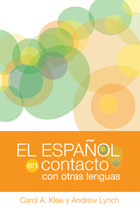 El español en contacto con otras lenguas
Carol A. Klee and Andrew Lynch
Georgetown University Press, 2009 El español en contacto con otras lenguas is the first comprehensive historical, social, and linguistic overview of Spanish in contact with other languages in all of its major contexts—in Spain, the United States, and Latin America. In this significant contribution to the field of Hispanic linguistics, Carol A. Klee and Andrew Lynch explore the historical and social factors that have shaped contact varieties of the Spanish language, synthesizing the principle arguments and theories about language contact, and examining linguistic changes in Spanish phonology, morphology and syntax, and pragmatics. Individual chapters analyze particular contact situations: in Spain, contact with Basque, Catalan, Valencian, and Galician; in Mexico, Central, and South America, contact with Nahuatl, Maya, Quechua, Aimara, and Guarani; in the Southern Cone, contact with other principle European languages such as Portuguese, Italian, English, German, and Danish; in the United States, contact with English. A separate chapter explores issues of creolization in the Philippines and the Americas and highlights the historical influence of African languages on Spanish, primarily in the Caribbean and Equatorial Guinea. Written in Spanish, this detailed synthesis of wide-ranging research will be a valuable resource for scholars of Hispanic linguistics, language contact, and sociolinguistics.
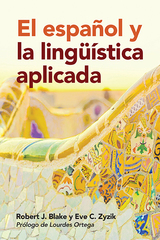 El español y la lingüística aplicada
Robert J. Blake and Eve C. Zyzik. Foreword by Lourdes Ortega
Georgetown University Press Informed by the latest research in the fields of second language acquisition and applied linguistics, El español y la lingüística aplicada responds to the central questions that lie at the heart of learning Spanish as a second or foreign language. What does it mean to know a language? Can technology help second language learners? How does studying abroad promote language acquisition? Framing chapters in terms of these and other critical areas of inquiry, Robert J. Blake and Eve C. Zyzik examine the linguistic challenges and pitfalls involved in Spanish-language learning and delve into practical implications for students and teachers. Written entirely in Spanish, some chapters focus on specific areas of Spanish grammar that tend to pose difficulty for learners, while others explore broad pedagogical themes related to the concept of proficiency, the nature of input, and the impact of learning context. Each chapter ends with a series of guided questions for reflection and further research. Designed to address the pre-service training needs of Spanish language professionals, El español y la lingüística aplicada will also be of interest to anyone wishing to develop linguistic expertise in this important world language.
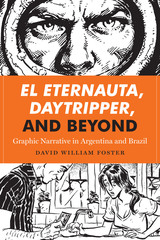 El Eternauta, Daytripper, and Beyond: Graphic Narrative in Argentina and Brazil
By David William Foster
University of Texas Press, 2016 El Eternauta, Daytripper, and Beyond examines the graphic narrative tradition in the two South American countries that have produced the medium’s most significant and copious output. Argentine graphic narrative emerged in the 1980s, awakened by Héctor Oesterheld’s groundbreaking 1950s serial El Eternauta. After Oesterheld was “disappeared” under the military dictatorship, El Eternauta became one of the most important cultural texts of turbulent mid-twentieth-century Argentina. Today its story, set in motion by an extraterrestrial invasion of Buenos Aires, is read as a parable foretelling the “invasion” of Argentine society by a murderous tyranny. Because of El Eternauta, graphic narrative became a major platform for the country’s cultural redemocratization. In contrast, Brazil, which returned to democracy in 1985 after decades of dictatorship, produced considerably less analysis of the period of repression in its graphic narratives. In Brazil, serious graphic narratives such as Fábio Moon and Gabriel Bá’s Daytripper, which explores issues of modernity, globalization, and cross-cultural identity, developed only in recent decades, reflecting Brazilian society’s current and ongoing challenges. Besides discussing El Eternauta and Daytripper, David William Foster utilizes case studies of influential works—such as Alberto Breccia and Juan Sasturain’s Perramus series, Angélica Freitas and Odyr Bernardi’s Guadalupe, and others—to compare the role of graphic narratives in the cultures of both countries, highlighting the importance of Argentina and Brazil as anchors of the production of world-class graphic narrative.
 El Fin del Mundo: A Clovis Site in Sonora, Mexico
Vance T. Holliday, Guadalupe Sánchez, and Ismael Sánchez-Morales
University of Arizona Press, 2024 In a remote desert corner of Sonora, Mexico, the site of El Fin del Mundo offers the first recorded evidence of Paleoindian interactions with gomphotheres, an extinct species related to elephants. The Clovis occupation of North America is the oldest generally accepted and well-documented archaeological assemblage on the continent. This site in Sonora, Mexico, is the northernmost dated late Pleistocene gomphothere and the youngest in North America. It is the first documented intact buried Clovis site outside of the United States, the first in situ Paleoindian site in northwestern Mexico, and the first documented evidence of Clovis gomphothere hunting in North America. The site also includes an associated upland Clovis campsite. This volume also describes a paleontological bone bed below the Clovis level, which includes a rare association of mastodon, mammoth, and gomphothere.
El Fin del Mundo presents and synthesizes the archaeological, geological, paleontological, and paleoenvironmental records of an important Clovis site.
Contributors
Joaquín Arroyo-Cabrales
Jordan Bright
James K. Feathers
Edmund P. Gaines
Thanairi Gamez
Gregory W. L. Hodgins
Vance T. Holliday
Susan M. Mentzer
Carmen Isela Ortega-Rosas
Manuel R. Palacios-Fest
Guadalupe Sánchez
Ismael Sánchez-Morales
Kayla B. Worthey
Kristen Wroth
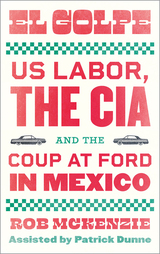 El Golpe: US Labor, the CIA, and the Coup at Ford in Mexico
Rob McKenzie
Pluto Press, 2022 'Early in my research, a friend with excellent knowledge of the United Auto Workers internal operations told me, "Don't give up. They are hiding something"…'
It's 1990, and US labor is being outsourced to Mexico. Rumors of a violent confrontation at the Mexican Ford Assembly plant on January 8 reach the United Auto Workers (UAW) union in the US: nine employees had been shot by a group of drunken thugs and gangsters, in an act of political repression which changed the course of Mexican and US workers' rights forever.
Rob McKenzie was working at the Ford Twin Cities Assembly plant in Minnesota when he heard of the attack. He didn't believe the official story, and began a years-long investigation to uncover the truth. His findings took him further than he expected - all the way to the doors of the CIA.
Virtually unknown outside of Mexico, the full story of 'El Golpe', or 'The Coup', is a dark tale of political intrigue that still resonates today.
El Hadji Sy: Painting, Performance, Politics
Edited by Clémentine Deliss, Yvette Mutumba, and the Weltkulturen Museum
Diaphanes, 2015 El Hadji Sy: Painting, Performance, Politics offers the first art-historical survey on the multidimensional work of Senegalese artist, curator, and cultural activist El Hadji Sy. Spanning thirty years of his practice as a painter, performance artist, and founder of numerous artists’ collectives and workshops in Dakar (Laboratoire AGIT’ART, Tenq, and Village des Arts), it provides unprecedented insight into the conceptual and aesthetic framework of a major living artist and curator from West Africa.
With newly commissioned essays and interviews by Hans Belting, Clémentine Deliss, Mamadou Diouf, Julia Grosse, Yvette Mutumba, Philippe Pirotte, and Manon Schwich, the book is presented in a bilingual English-German edition and also contains unique archival material, including manifestos, documents, and over four hundred illustrations.
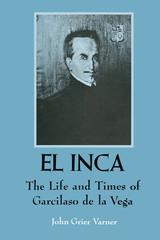 El Inca: The Life and Times of Garcilaso de la Vega
By John Grier Varner
University of Texas Press, 1968 Garcilaso de la Vega, the great chronicler of the Incas and the conquistadors, was born in Cuzco in 1539. At the age of twenty, he sailed to Spain to acquire an education, and he remained there until his death at Córdoba in 1616. As the natural son of a noble conquistador and an Indian woman of royal blood, he took immense pride in both his Spanish and Inca heritage, and, living as he did during a bewildering but stimulating epoch, he personally witnessed the last gasp of the dying Inca empire, the fratricidal conflicts that accompanied the Conquest, and the literary growth as well as the political decline of the Spain of Philip II and Philip III. Garcilaso left for posterity one of the earliest accounts of the ancient Incas, a reliable though admittedly biased chronicle of Spanish conquests in Andean America and a glowing story of Hernando de Soto’s exploration of North America. Though he never lost pride in his Spanish heritage, continued rebuffs in caste-conscious Spain strengthened his pride in his Indian heritage and his sympathy for his mother’s people. Thus his histories, while ennobling Spaniards, also ennobled the Incas, and eventually were to have some influence in the struggle of South Americans for political independence from Spain. In both blood and character El Inca Garcilaso was a true mestizo. He is generally considered to have been the first native-born American to attain the honor of publication. This was the life, and these were the times, that Varner has evoked so richly in his narrative. It rings and glitters with the sounds and colors of festivals, pageantry, and battle; it listens to the murmur of prayers, the defeated mutter of the Incas, the scratch of the scholar’s quill; it pictures both highlights and shadows. For the reader already acquainted with Garcilaso’s chronicles, this book will be a welcome complement; for those who are meeting El Inca here for the first time, it will be a rewarding and satisfying introduction.
 El Jardín Silencioso: Una guía para los padres para criar a un niño sordo
ogden
Gallaudet University Press, 2017 Durante más de treinta años, The Silent Garden les ha ofrecido a los padres de niños sordos todo el apoyo y la información imparcial que necesitan para que sus hijos desarrollen su pleno potencial. Esta nueva edición en español, que contiene los cinco primeros capítulos de la tercera edición actualizada en inglés, aporta ayuda a los padres para afrontar aquellos retos tan únicos y complejos a los que se enfrentan. De un modo accessible, práctico y, sobre todo, imparcial, El Jardín Silencioso pone al día a los padres rápida y minuciosamente sobre los muchos y contradictorios puntos de vista que existen acerca del bienestar de los niños sordos. Los autores Paul W. Ogden y David H. Smith, ambos sordos, presentan ejemplos y estudios que les servirán de guía a los padres en un ámbito que a la mayoría les es desconocido. El Jardín Silencioso expone temas como el de las estrategias que los padres pueden adoptar para abordar la situación, el de cómo crear un ambiente familiar sano, el de cómo fomentar la independencia y el de cómo tener en cuenta el punto de vista de los hermanos del niño sordo. Cada tema viene acompañado de historias auténticas que enriquecen la discusión. Siempre en tono alentador, El Jardín Silencioso les otorga recursos a los padres para que se conviertan en los mejores defensores de sus hijos. A lo largo del libro, los autores destacan que cada opción se adhiere a una situación personal diferente y ponen hincapié en que todos los niños sordos tienen la capacidad de llevar una vida enriquecedora, productiva y estimulante.
La narradora Paty Corcoran es originaria de la Ciudad de México y ha trabajado como traductora, intérprete y locutora durante casi diez años. Vive en el sur de California con su esposo y sus tres hijos, donde también trabaja como guía turística bilingüe. Paty se graduó con honores de la Universidad Autónoma Metropolitana de la Ciudad de México con una licenciatura en Ciencias de la Comunicación.
For over 30 years, The Silent Garden has offered parents of deaf children the support and unbiased information needed to fully realize their children’s potential. This new Spanish edition, which contains the first five chapters of the completely updated 3rd English edition, will help parents navigate the complex and unique challenges they face. Accessible, practical, and, above all, open-minded, El Jardín Silencioso educates parents quickly and thoroughly about the many conflicting points of view on what is best for their deaf children. Authors Paul W. Ogden and David H. Smith, who are both deaf, present examples and research that guide parents through often unfamiliar territory. El Jardín Silencioso covers the topics of communication, coping mechanisms for parents, creating healthy family environments, fostering independence, and understanding the perspectives of siblings. Always encouraging, El Jardín Silencioso empowers parents to be the best advocates for their deaf children.
Audiobook narrator Paty Corcoran is a native of Mexico City and has worked as a translator, interpreter, and voice-talent for almost ten years. She lives in Southern California with her husband and three children, where she also works as a bilingual tour guide. Paty graduated with honors from Metropolitan Autonomous University in Mexico City with a degree in Communication Sciences.
 El Jardín Silencioso: Una guía para los padres para criar a un niño sordo
Paul W. Ogden
Gallaudet University Press, 2017 Durante más de treinta años, The Silent Garden les ha ofrecido a los padres de niños sordos todo el apoyo y la información imparcial que necesitan para que sus hijos desarrollen su pleno potencial. Esta nueva edición en español, que contiene los cinco primeros capítulos de la tercera edición actualizada en inglés, aporta ayuda a los padres para afrontar aquellos retos tan únicos y complejos a los que se enfrentan. De un modo accessible, práctico y, sobre todo, imparcial, El Jardín Silencioso pone al día a los padres rápida y minuciosamente sobre los muchos y contradictorios puntos de vista que existen acerca del bienestar de los niños sordos. Los autores Paul W. Ogden y David H. Smith, ambos sordos, presentan ejemplos y estudios que les servirán de guía a los padres en un ámbito que a la mayoría les es desconocido. El Jardín Silencioso expone temas como el de las estrategias que los padres pueden adoptar para abordar la situación, el de cómo crear un ambiente familiar sano, el de cómo fomentar la independencia y el de cómo tener en cuenta el punto de vista de los hermanos del niño sordo. Cada tema viene acompañado de historias auténticas que enriquecen la discusión. Siempre en tono alentador, El Jardín Silencioso les otorga recursos a los padres para que se conviertan en los mejores defensores de sus hijos. A lo largo del libro, los autores destacan que cada opción se adhiere a una situación personal diferente y ponen hincapié en que todos los niños sordos tienen la capacidad de llevar una vida enriquecedora, productiva y estimulante.
La narradora Paty Corcoran es originaria de la Ciudad de México y ha trabajado como traductora, intérprete y locutora durante casi diez años. Vive en el sur de California con su esposo y sus tres hijos, donde también trabaja como guía turística bilingüe. Paty se graduó con honores de la Universidad Autónoma Metropolitana de la Ciudad de México con una licenciatura en Ciencias de la Comunicación.
For over 30 years, The Silent Garden has offered parents of deaf children the support and unbiased information needed to fully realize their children’s potential. This new Spanish edition, which contains the first five chapters of the completely updated 3rd English edition, will help parents navigate the complex and unique challenges they face. Accessible, practical, and, above all, open-minded, El Jardín Silencioso educates parents quickly and thoroughly about the many conflicting points of view on what is best for their deaf children. Authors Paul W. Ogden and David H. Smith, who are both deaf, present examples and research that guide parents through often unfamiliar territory. El Jardín Silencioso covers the topics of communication, coping mechanisms for parents, creating healthy family environments, fostering independence, and understanding the perspectives of siblings. Always encouraging, El Jardín Silencioso empowers parents to be the best advocates for their deaf children.
Audiobook narrator Paty Corcoran is a native of Mexico City and has worked as a translator, interpreter, and voice-talent for almost ten years. She lives in Southern California with her husband and three children, where she also works as a bilingual tour guide. Paty graduated with honors from Metropolitan Autonomous University in Mexico City with a degree in Communication Sciences.
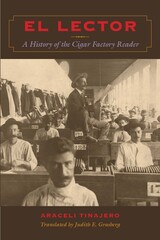 El Lector: A History of the Cigar Factory Reader
By Araceli Tinajero
University of Texas Press, 2009 The practice of reading aloud has a long history, and the tradition still survives in Cuba as a hard-won right deeply embedded in cigar factory workers' culture. In El Lector, Araceli Tinajero deftly traces the evolution of the reader from nineteenth-century Cuba to the present and its eventual dissemination to Tampa, Key West, Puerto Rico, and Mexico. In interviews with present-day and retired readers, she records testimonies that otherwise would have been lost forever, creating a valuable archive for future historians. Through a close examination of journals, newspapers, and personal interviews, Tinajero relates how the reading was organized, how the readers and readings were selected, and how the process affected the relationship between workers and factory owners. Because of the reader, cigar factory workers were far more cultured and in touch with the political currents of the day than other workers. But it was not only the reading material, which provided political and literary information that yielded self-education, that influenced the workers; the act of being read to increased the discipline and timing of the artisan's job.
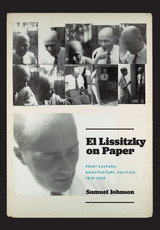 El Lissitzky on Paper: Print Culture, Architecture, Politics, 1919–1933
Samuel Johnson
University of Chicago Press, 2024 An examination of the importance of paper in the work of Soviet artist, designer, and architect El Lissitzky.
Russian artist El Lissitzky’s work spans painting, photography, theatrical and exhibition design, architecture, graphic design, typography, and literature. He was active in the Jewish cultural renaissance, formed an artists’ collective with Kazimir Malevich, was a key figure in the dissemination of early Soviet art in Western Europe, and designed propaganda for the Stalin regime. With such a varied history and body of work, scholars have often struggled to identify the core principles that tied his diverse oeuvre together.
In El Lissitzky on Paper, Samuel Johnson argues that Lissitzky’s commitment to creating works on paper is a constant that unites his endeavors. Paper played a key role in the utopian projects that informed Lissitzky’s work, and the artist held a commitment to print as the premier medium of immediate public exchange. Johnson analyzes and contextualizes this idea against the USSR’s strict management of this essential resource and the growth of new media communications, including the telephone, telegraph, and film.
With this book, Johnson presents a significant contribution to scholarship on this major artist, revealing new connections between Lissitzky’s work in architecture and visual art and bringing to light sources from largely unstudied Russian archives.
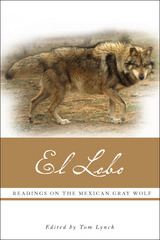 El Lobo: Readings on the Mexican Gray Wolf
Tom Lynch
University of Utah Press, 2005 In many ways the opponents of wolves seem so much like the wolves themselves that it is wildly ironic: though their numbers are small, they seem to retain a core fierceness that cannot be ignored—nor would you want to, for fear is one of the most primal emotions of any place. It’s never going to go entirely away—not in a wild, healthy ecosystem.' —from 'The Feds' by Rick Bass
After roaming the desert Southwest for thousands of years, the Mexican gray wolf was, almost in the blink of an eye, driven to the brink of extinction. El Lobo collects writings that explore how this subspecies of wolf was brought so close to the edge of annihilation.
The first section, 'To the Brink,' includes essays that describe wolf biology, the campaign to exterminate wolves from the Southwest, and the wolf’s role in Native American cultures and in Mexican folklore. The second section, 'And Back,' illustrates a turnaround in attitudes and policy and includes Aldo Leopold’s famous essay 'Thinking Like a Mountain,' Rick Bass’s astute analysis of the political divide, and Sharman Apt Russell’s carefully woven plea in which she shares her experience with Pueblo Indian children meeting a wolf in their school auditorium. These essays, from both sides of the contested issue, resonate with passion, conviction, and the desire to save a world that is mightily at risk.
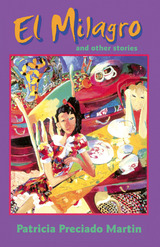 El Milagro and Other Stories
Patricia Preciado Martin
University of Arizona Press, 1996 Ticking clocks and tolling bells, scents of roses and warm tortillas: this is the barrio of years past as captured in the words of Patricia Preciado Martin. Cuentos, recuerdos, stories, memories—all are stirred into a simmering caldo by a writer whose love for her heritage shines through every page.
Reminiscent of Like Water for Chocolate, the book is a rich mix of the simplest ingredients—food, family, tradition. We see Silviana striding to her chicken coop, triggering the "feathered pandemonium" of chickens who smell death in the air. We meet Elena, standing before the mirror in her wedding dress, and Teodoro Sánchez, who sleeps under the sky and smells of “chaparral and mesquite pollen and the stream bottom and the bone dust of generations. There’s the monsignor sitting on the edge of a sofa, sipping Nescafé from a china cup, and here is Sister Francisca "with her warm, minty breath" warning us away from impure thoughts. Be on your best behavior, too, in Tía Petra’s Edwardian parlor—la Doña Petrita, descended from conquistadores, might just deliver a tap on your head with her silver-handled walking stick. Then, with Mamacita, spend a summer afternoon bent over your embroidery with trembling hand and sweaty upper lip, and all the while wondering what in the world it feels like to be kissed.
Intermingled with the author’s stories are collective memories of the barrio, tales halfway between heaven and earth that seem to connect barrio residents to each other and to their past. These cuentos are mystical and dreamy, peopled with ghosts and miracles and Aztec princesses dressed in feathers and gold. Come, sit down and have some salsa and a tortilla—fresh and homemade, it goes without saying; people who buy tortillas at the market "might as well move to Los Angeles, for they have already lost their souls." Then open the pages of this book. Help yourself to another feast of food and flowers, music and dancing, sunshine and moonlight—everything glorious and mundane, serious and humorous, earthly and spiritual, poignant and joyful, in la vida mexicoamericana.
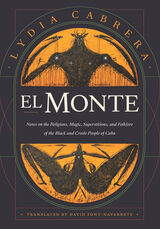 El Monte: Notes on the Religions, Magic, and Folklore of the Black and Creole People of Cuba
Lydia Cabrera
Duke University Press, 2023 First published in Cuba in 1954 and appearing here in English for the first time, Lydia Cabrera’s El Monte is a foundational and iconic study of Afro-Cuban religious and cultural traditions. Drawing on conversations with elderly Afro-Cuban priests who were one or two generations away from the transatlantic slave trade, Cabrera combines ethnography, history, folklore, literature, and botany to provide a panoramic account of the multifaceted influence of Afro-Atlantic cultures in Cuba. Cabrera details the natural and spiritual landscape of the Cuban monte (forest, wilderness) and discusses hundreds of herbs and the constellations of deities, sacred rites, and knowledge that envelop them. The result is a complex spiritual and medicinal architecture of Afro-Cuban cultures. This new edition of what is often referred to as “the Santería bible” includes a new foreword, introduction, and translator notes. As a seminal work in the study of the African diaspora that has profoundly impacted numerous fields, Cabrera’s magnum opus is essential for scholars, activists, and religious devotees of Afro-Cuban traditions alike.
El Monte's New Itineraries: Afrodiasporic Spirituality in the Contemporary Caribbean
Alberto Sosa-Cabanas
Rutgers University Press, 2025 El Monte's New Itineraries is the first book fully devoted to the study of Cuban author and ethnographer Lydia Cabrera’s El Monte (1954), one of the most influential books in Caribbean cultural history. Highly referenced, if understudied, El Monte is a comprehensive work that intertwines ethnobotany, popular orality, and Afro-Cuban traditions. Its pages have enjoyed a transnational influence, enriching domains such as ethnography, politics, theater, and even science fiction literature in the Caribbean, and the knowledge contained in it lies at the heart of Afro-diasporic spirituality and ethnomedicinal practices across Hispanic Caribbean cultures and beyond.
 The El Mozote Massacre: Anthropology and Human Rights
Leigh Binford
University of Arizona Press, 1996 The 1981 slaughter of more than a thousand civilians around El Mozote, El Salvador, by the country's U.S.-trained army was the largest massacre of the Salvadoran civil war. The story was covered—and soon forgotten—by the international news media. It was revived in 1993 only when the U.S. government was accused of covering up the incident.
Such reportage, argues anthropologist Leigh Binford, sustains the perception that the lives of Third World people are only newsworthy when some great tragedy strikes. He critiques the practices of journalists and human rights organizations for their dehumanizing studies of "subjects" and "victims." Binford suggests that such accounts objectify the people involved through statistical analyses and bureaucratic body counts while the news media sensationalize the motives and personalities of the perpetrators.
In relating the story of this tragic event, Binford restores a sense of history and social identity to the fallen people of this Salvadoran village. Drawing on interviews he conducted with El Mozote-area residents, he offers a rich ethnographic and personal account of their lives prior to the tragedy. He provides an overview of the history and culture of the area and tells how such a massacre could have happened, why it was covered up, and why it could happen again.
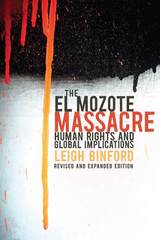 The El Mozote Massacre: Human Rights and Global Implications Revised and Expanded Edition
Leigh Binford
University of Arizona Press, 2016 In 1981, more than a thousand civilians around El Mozote, El Salvador, were slaughtered by the country’s U.S.-trained army. The story was covered—and soon forgotten—by the international news media. In the first edition of The El Mozote Massacre, anthropologist Leigh Binford successfully restores a social identity to the massacre victims through his dissection of Third World human rights reporting and a rich ethnographic and personal account of El Mozote–area residents prior to the massacre.
Almost two decades later, the consequences of the massacre continue to reverberate through the country’s legal and socioeconomic systems. The El Mozote Massacre, 2nd Edition brings together new evidence to address reconstruction, historical memory, and human rights issues resulting from what may be the largest massacre in modern Latin American history.
With a multitude of additions, including three new chapters, an extended chronology, discussion of the hearing and ruling of the Inter-American Court of Human Rights in 2012, and evidence gathered throughout half a dozen field trips made by the author, Binford presents a current perspective on the effects of this tragic moment in history. Thanks to geographically expanded fieldwork, Binford offers critical discussion of postwar social, economic, religious, and social justice in El Mozote, and adds important new regional, national, and global contexts.
The El Mozote Massacre, 2nd Edition maintains the crucial presence of the massacre in human rights discussions for El Salvador, Latin America, and the world.
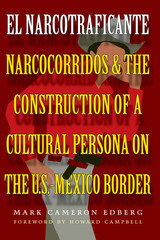 El Narcotraficante: Narcocorridos and the Construction of a Cultural Persona on the U.S.–Mexico Border
By Mark Cameron Edberg
University of Texas Press, 2004 Since the late 1970s, a new folk hero has risen to prominence in the U.S.-Mexico border region and beyond—the narcotrafficker. Celebrated in the narcocorrido, a current form of the traditional border song known as the corrido, narcotraffickers are often portrayed as larger-than-life "social bandits" who rise from poor or marginalized backgrounds to positions of power and wealth by operating outside the law and by living a life of excess, challenging authority (whether U.S. or Mexican), and flouting all risks, including death. This image, rooted in Mexican history, has been transformed and commodified by the music industry and by the drug trafficking industry itself into a potent and highly marketable product that has a broad appeal, particularly among those experiencing poverty and power disparities. At the same time, the transformation from folk hero to marketable product raises serious questions about characterizations of narcocorridos as "narratives of resistance." This multilayered ethnography takes a wide-ranging look at the persona of the narcotrafficker and how it has been shaped by Mexican border culture, socioeconomic and power disparities, and the transnational music industry. Mark Edberg begins by analyzing how the narcocorrido emerged from and relates to the traditional corrido and its folk hero. Then, drawing upon interviews and participant-observation with corrido listening audiences in the border zone, as well as musicians and industry producers of narcocorridos, he elucidates how the persona of the narcotrafficker has been created, commodified, and enacted, and why this character resonates so strongly with people who are excluded from traditional power structures. Finally, he takes a look at the concept of the cultural persona itself and its role as both cultural representation and model for practice.
El Niño, Catastrophism, and Culture Change in Ancient America
Daniel H. Sandweiss
Harvard University Press, 2008 El Niño is an extreme climate perturbation that periodically changes weather throughout the globe, often with dire consequences. First recognized in Peru, El Niño events are best known and documented there. This book summarizes research on the nature of El Niño events in the Americas and details specific historic and prehistoric patterns in Peru and elsewhere. By also looking at other catastrophic natural events in the ancient New World, the book illustrates how scientific archaeology can serve pure research as well as provide information for contemporary issues.
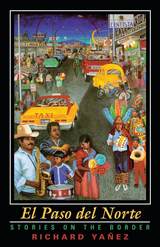 El Paso Del Norte: Stories On The Border
Richard Yañez
University of Nevada Press, 2003 The Chicano characters in Richard Yañez's debut story collection live in El Paso's Lower Valley but inhabit a number of borders—between two countries, two languages, and two cultures, between childhood and manhood, life and death. The teenaged narrator of "Desert Vista" copes with a new school and a first love while negotiating the boundaries between his family's tenuous middle-class status and the working-class community in which they have come to live. Tony Amoroza, the protagonist of "Amoroza Tires," wrestles with the grief from his wife's death until an unexpected legacy fills him with new faith. María del Valle, "La Loquita," the central character of "Lucero's Mkt.," crosses the border into madness while her neighbors watch, gossip, and try to offer—or refuse—aid. Yañez writes with perfect understanding of his borderland setting, a landscape where poverty and violence impinge on traditional Mexican-American values, where the signs of gang culture strive with the ageless rituals of the Church. His characters are vivid, unique, fully authentic, searching for purpose or identity, for hope or meaning, in lives that seem to deny them almost everything. Yañez's world is that of the Southwestern Chicanos, but the fears and yearnings of his characters are universal.
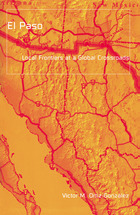 El Paso: Local Frontiers At A Global Crossroads
Victor M. Ortiz-Gonzalez
University of Minnesota Press, 2004 A grounded and instructive analysis of the ways globalization affects a border city Every marker of social difference can be easily interpreted in the fashionable language of “borderlands”—and if so, as Victor M. Ortiz-Gonzalez reveals, the practical reality of the border region is often grossly misrepresented and its people woefully served. He argues that amid the tantalizing abstractions generated by the sweeping reconfigurations of globalization, people in cities like El Paso and Ciudad Juárez, on the U.S.–Mexican border, are actually living the gritty realities of a new world order. With descriptions of grassroots initiatives to confront the challenges and opportunities that NAFTA represents for the city, El Paso challenges us to acknowledge and address the conceptual and sociopolitical tasks of a world in which abstract representations and non-local interests override concrete situations. Ortiz-Gonzalez also provides an in-depth analysis of groups such as La Mujer Obrera, Unite El Paso, and the Hispanic Chamber of Commerce and their attempts to give local residents and workers more autonomy and power.Balancing ethnographic detail with precise theoretical insights, El Paso offers a compelling case study and a stirring call to understand both the conceptual challenge and the social urgency of the effects of globalization in local settings.
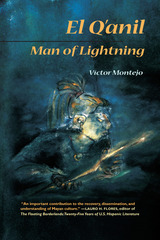 El Q'anil: Man of Lightning
Victor Montejo
University of Arizona Press, 2001 The legend of El Q'anil, the "Man of Lightning," stands alongside such classic Maya literary artifacts as Popol Vuh and Chilam Balam but has been preserved only through the oral tradition of the Jakaltek Maya. In this tale, the young man Xhuwan Q'anil brings lightning to his people in order to save them from destruction. He undertakes a journey of adventure, participates in a great war, and is subsequently immortalized. It is a story that all Jakaltek children learn, one that reinforces their identity by showing that their people have a hero who lives in each Jakaltek Maya today. Víctor Montejo, who was raised in Maya culture and knows its lore intimately, compiled several versions of the legend in Guatemala during the height of paramilitary operations in that country in the 1980s. His contemporary reconstruction lovingly preserves this legend and reflects concern for the survival of Maya culture in the face of oppression. Just as the Maya people of western Guatemala continue to pray for peace at the sanctuary of Q'anil, the legend of the Man of Lightning affirms a culture's enduring traditions. In this edition, the text is presented in English, Spanish, and Jakaltek Maya to secure its deserved place in world literature.
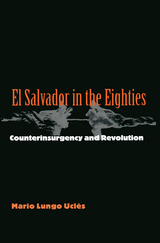 El Salvador In The 1980S
Mario Ucles
Temple University Press, 1996 Casa de las Amèricas Prize for the Spanish Edition, 1990
"...a clear, insightful, and authoritative analysis of major events in El Salvador during the past decade. I don't know of any work in English that rivals it. Its great strength is that it looks at these events--and explores the possibilities for the future--from a variety of Salvadoran perspectives, rather than from that of U.S. policy makers. It is an important contribution to scholarship, and at the same time quite accessible to students and activists."
--Hugh Lacey, Swarthmore College
Depicting a new stage of Salvadoran history that began in 1979, Mario Lungo Uclés offers an acute analysis of the transformation of El Salvador during the 1980's under the impact of revolution and counterinsurgency. This new and expanded English-language edition of his award-winning book traces the historical roots of the Salvadoran insurgency and demonstrates how the counterinsurgency efforts promoted by the United States failed to anticipate either the durability of the rebels or the rise of the Nationalist Republican Alliance as the country's first explicitly bourgeois political party.
Lungo Uclés explains the reasons behind the remarkable outcome of the war in a negotiated settlement and why El Salvador's future requires a major reformulation of the politics and institutions of both the left and the right. This is a work of importance not just for the politics of El Salvador but for other Third World societies in the age of post-Cold War globalization.
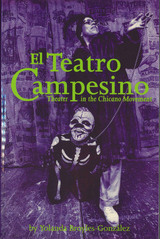 El Teatro Campesino: Theater in the Chicano Movement
By Yolanda Broyles-González
University of Texas Press, 1994 Born in 1965 as an organizing tool within César Chávez's United Farm Workers union, El Teatro Campesino became the premier Chicana/o performance ensemble to emerge out of the Chicano movement of the 1960s and 1970s. This study demythologizes and reinterprets the company's history from its origins in California's farm labor struggles to its successes in Europe and on Broadway until the disbanding of the original collective ensemble in 1980 with the subsequent adoption of mainstream production techniques. Yolanda Broyles-González corrects many misconceptions concerning the Teatro's creation and evolution. She draws from a rich storehouse of previously untapped material, such as interviews with numerous ensemble members, production notes, and unpublished diaries, to highlight the reality of the collective creation that characterized the Teatro's work. Writing within contemporary cultural studies theory, Broyles-González sheds light on class, gender, race, and cultural issues. Her work situates the Teatro within working-class Mexican performance history, the Chicano movement, gender relations, and recent attempts to mainstream.
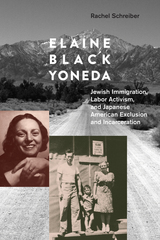 Elaine Black Yoneda: Jewish Immigration, Labor Activism, and Japanese American Exclusion and Incarceration
Rachel Schreiber
Temple University Press, 2022 During World War II, Elaine Black Yoneda, the daughter of Russian Jewish immigrants, spent eight months in a concentration camp—not in Europe, but in California. She did this voluntarily and in solidarity, insisting on accompanying her husband, Karl, and their son, Tommy, when they were incarcerated at the Manzanar Relocation Center. Surprisingly, while in the camp, Elaine and Karl publicly supported the United States’ decision to exclude Japanese Americans from the coast. Elaine Black Yoneda is the first critical biography of this pioneering feminist and activist. Rachel Schreiber deftly traces Yoneda’s life as she became invested in radical politics and interracial and interethnic activism. In her work for the International Labor Defense of the Communist Party, Yoneda rose to the rank of vice president. After their incarceration, Elaine and Karl became active in the campaigns to designate Manzanar a federally recognized memorial site, for redress and reparations to Japanese Americans, and in opposition to nuclear weapons. Schreiber illuminates the ways Yoneda’s work challenged dominant discourses and how she reconciled the contradictory political and social forces that shaped both her life and her family’s. Highlighting the dangers of anti-immigrant and anti-Asian xenophobia, Elaine Black Yoneda recounts an extraordinary life.
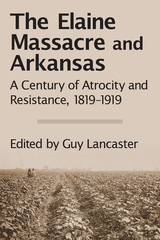 The Elaine Massacre and Arkansas: A Century of Atrocity and Resistance, 1819-1919
Guy Lancaster
Butler Center for Arkansas Studies, 2018 Although it occurred nearly a century ago, the Elaine Massacre of 1919 remains the subject of intense inquiry as historians try to answer a multitude of questions, such as why authorities in the Arkansas Delta used such overwhelming violence to put down a farmers’ union, exactly how many people were killed in the massacre, and how the event shaped the following century.
We cannot fully understand what happened at Elaine without examining the one hundred years leading up to the massacre. An analysis of the years from 1819, when Arkansas officially became an American territory, to 1919 provides the historical foundation for understanding one of the bloodiest manifestations of racial violence in U.S. history.
During the antebellum years, slaveholders grew paranoid about possible “insurrections,” and after the Civil War and Emancipation, these fears lingered and led to numerous atrocities long before Elaine. At the same time, African Americans—particularly fieldworkers—worked to organize themselves to resist oppression, setting the stage for the farmers’ union that was the target for mob and military wrath during the Elaine Massacre.
These essays provide the larger history necessary for understanding what happened at Elaine in 1919—and thus provide a window into the current state of Arkansas and the nation at large. Contributors include Richard Buckelew, Nancy Snell Griffith, Matthew Hild, Adrienne Jones, Kelly Houston Jones, Cherisse Jones-Branch, Brian K. Mitchell, William H. Pruden III, and Steven Teske.
 Elaine May
Elizabeth Alsop
University of Illinois Press, 2025 A master of subverting tropes with surgical precision, Elaine May forged a career in 1970s Hollywood with films like The Heartbreak Kid and Mikey and Nicky. Elizabeth Alsop explores the director’s non-conformist and uncompromising vision while looking at May’s films against trends in classic and post-classical Hollywood. Shaped by her background and success in the theater, May brought the biting humor of her improv comedy to her filmmaking. But unfriendly media and a system hostile to both her methods and sensibility consigned her to “director’s jail” after the failure of Ishtar. As Alsop moves through the filmmaker’s four movies, she tracks May’s inventive treatment of favorite themes like hapless male characters and the inanities of American culture. She also considers May’s work in relation to her multifaceted career as a writer and performer. A compelling reconsideration of an iconoclast and original, Elaine May reveals how a surprisingly radical auteur created her trademark cinema of discomfort.
Elamite and Achaemenid Settlement on the Deh Luran Plain: Towns and Villages of the Early Empires in Southwestern Iran
Edited by Henry T. Wright and James A. Neely
University of Michigan Press, 2010 The Deh Luran Plain, nestled in the foothills of the Zagros Mountains close to the modern border between Iraq and Iran, had a long and rich prehistory, beginning with the local development of villages dependent upon rainfall farming and herding in the 8th millennium BC. This volume continues the account of the plain from the later 3rd millennium BC to the middle of the 1st millennium BC. It contains detailed site maps and descriptions, aerial and satellite images of major sites, statistics and drawings of ceramics, and discussions of the historical sources.
 Elder Law in New Jersey: Finding Solutions for Legal Problems
Dueker, Alice K.
Rutgers University Press, 1999 In New Jersey, one in five residents is over the age of 65. The Garden State’s legal and healthcare systems are becoming increasingly complex, making it more difficult than ever for seniors to understand their rights and take advantage of available assistance and services.
Elder Law in New Jersey provides important, practical information to New Jersey residents, especially older adults who have become entangled in an incomprehensible web of healthcare and social security bureaucracies, younger adults who are caregivers to elderly parents, and middle-class citizens who fear the debilitating physical and financial effects of chronic illness. The legal problems most often encountered by seniors can involve frustrating losses of control over nearly all aspects of their lives. Attorney Alice Dueker, who specializes in elder law, explains complex legal issues in easily understood language. She looks at: · various ways to obtain and pay for healthcare, including nursing home care · how to create a will · how to address and avoid internal family disputes, including child custody, marriage, divorce, grandparent visitation rights, and elder abuse · employment issues such as age and disability discrimination, as well as pensions · problems of consumer fraud · housing issues for both tenants and homeowners
She provides contact information for agencies and programs that provide free or low cost services for seniors, and resources for locating attorneys.
Elder law is state specific, so New Jersey residents will find this book especially helpful and applicable to their own lives.
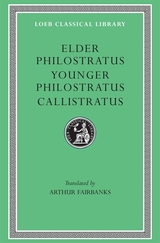 Elder Philostratus. Younger Philostratus. Callistratus
Philostratus the Elder. Philostratus the Younger. Callistratus
Harvard University Press Artful descriptions.
This volume presents kindred works important for evidence relating to late Greek art. They are attributed to two men each known as Philostratus and to a third man called Callistratus, otherwise unknown. To an elder Philostratus, the Lemnian, born ca. AD 190, junior kinsman of the Philostratus who wrote the Life of Apollonius of Tyana and Lives of the Sophists, is attributed the series of sixty-five Eikones or Imagines, descriptions (in two books) ostensibly of paintings in a gallery at Naples. A younger Philostratus, apparently his grandson, is credited with seventeen similar descriptions. The fourteen Ekphraseis attributed to Callistratus are descriptions of statues in stone or bronze, written probably in the fourth century AD. It is not known to what extent the descriptions are of real works of art, but they show how artists treated their subjects, and are written with some artistic knowledge. Yet rhetorical skill dominates: these pieces were written to display the writers’ powers of description.
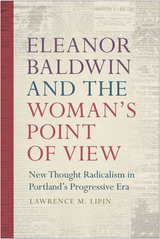 Eleanor Baldwin and the Woman's Point of View: New Thought Radicalism in Portland’s Progressive Era
Lawrence M. Lipin
Oregon State University Press, 2017 Eleanor Baldwin and the Woman’s Point of View is an intellectual biography of a long-forgotten radical female journalist in Portland, whose daily women’s columns provide a window into the breadth of intellectual radicalism in Progressive Era journalism. Baldwin was one of an early generation of female journalists who were hired to lure female readers to the daily newspaper’s department store advertisements. Instead of catering to the demands of consumerism, Baldwin quickly brought an anti-capitalist, antiracist agenda to her column, “The Woman’s Point of View." She eschewed household hints and instead focused on the immorality of capitalists and imperialists while emphasizing the need for women to become independent and productive citizens.
A century before the Occupy movement and the Women’s March, Baldwin spoke truth to power. Imbued with a New Thought spirituality that presumed progressive thought could directly affect material reality, she wrote to move history forward. And yet, the trajectory of history proved as hard to forecast then as now. While her personal story seems to embody a modern progressivism, blending abolition with labor reform and anti-banker activism—positions from which she never wavered—her path grew more complicated as times changed in the aftermath of World War I, when she would advocate on behalf of both the Bolsheviks and the Ku Klux Klan.
In this deeply researched and nuanced account of Eleanor Baldwin’s intellectual journey, historian Larry Lipin reveals how even the most dedicated radical can be overcome by unforeseen events. Eleanor Baldwin and the Woman’s Point of View restores a missing chapter in Portland’s Progressive Era history and rescues this passionate, intriguing, and quixotic character from undeserved obscurity.
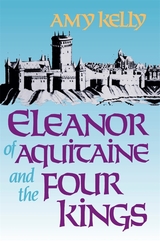 Eleanor of Aquitaine and the Four Kings
Amy Kelly
Harvard University Press, 1991 The story of that amazingly influential and still somewhat mysterious woman, Eleanor of Aquitaine, has the dramatic interest of a novel. She was at the very center of the rich culture and clashing politics of the twelfth century. Richest marriage prize of the Middle Ages, she was Queen of France as the wife of Louis VII, and went with him on the exciting and disastrous Second Crusade. Inspiration of troubadours and trouvères, she played a large part in rendering fashionable the Courts of Love and in establishing the whole courtly tradition of medieval times. Divorced from Louis, she married Henry Plantagenet, who became Henry II of England. Her resources and resourcefulness helped Henry win his throne, she was involved in the conflict over Thomas Becket, and, after Henry’s death, she handled the affairs of the Angevin empire with a sagacity that brought her the trust and confidence of popes and kings and emperors.
Having been first a Capet and then a Plantagenet, Queen Eleanor was the central figure in the bitter rivalry between those houses for the control of their continental domains—a rivalry that excited the whole period: after Henry’s death, her sons, Richard Coeur-de-Lion and John “Lackland” (of Magna Carta fame), fiercely pursued the feud up to and even beyond the end of the century. But the dynastic struggle of the period was accompanied by other stirrings: the intellectual revolt, the struggle between church and state, the secularization of literature and other arts, the rise of the distinctive urban culture of the great cities. Eleanor was concerned with all the movements, closely connected with all the personages; and she knew every city from London and Paris to Byzantium, Jerusalem, and Rome.
Amy Kelly’s story of the queen’s long life—the first modern biography—brings together more authentic information about her than has ever been assembled before and reveals in Eleanor a greatness of vision, an intelligence, and a political sagacity that have been missed by those who have dwelt on her caprice and frivolity. It also brings to life the whole period in whose every aspect Eleanor and her four kings were so intimately and influentially involved. Miss Kelly tells Eleanor’s absorbing story as it has long waited to be told—with verve and style and a sense of the quality of life in those times, and yet with a scrupulous care for the historic facts.
Eleanor of Aquitaine, as It Was Said: Truth and Tales about the Medieval Queen
Karen Sullivan
University of Chicago Press, 2023 A reparative reading of stories about medieval queen Eleanor of Aquitaine.
Much of what we know about Eleanor of Aquitaine, Queen of France and then Queen of England, we know from recorded rumor—gossip often qualified by the curious phrase “it was said,” or the love songs, ballads, and romances that gossip inspired. While we can mine these stories for evidence about the historical Eleanor, Karen Sullivan invites us to consider, instead, what even the most fantastical of these tales reveals about this queen and life as a twelfth-century noblewoman. She reads the Middle Ages, not to impose our current conceptual categories on its culture, but to expose the conceptual categories medieval women used to make sense of their lives. Along the way, Sullivan paints a fresh portrait of this singular medieval queen and the women who shared her world.
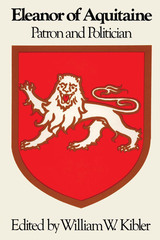 Eleanor of Aquitaine: Patron and Politician
Edited by William W. Kibler
University of Texas Press, 1976 Eleanor of Aquitaine was the wife of two kings, Louis VII of France and Henry II Plantagenet of England, and the mother of two others, Richard the Lionhearted and John Lackland. In her eventful, often stormy life, she not only influenced the course of events in the twelfth century but also encouraged remarkable advances in the literary and fine arts. In this book, experts in five disciplines—history, art history, music, French and English literature—evaluate the influence of Eleanor and her court on history and the arts. Elizabeth A. R. Brown views Eleanor as having played a significant role as parent and politician, but not as patron. Rebecca A. Baltzer takes a new look at the music of the period that was written by and for Eleanor, her court, and her family. Moshé Lazar reexamines her relationship to the courtly-love literature of the period. Eleanor S. Greenhill and Larry M. Ayres reassess her influence in the realm of art history. Rossell Hope Robbins traces the lines extending from the French courtly literature of Eleanor's period down into fourteenth-century Chaucerian England. The essays reflect divergent but generally complementary assessments of this remarkable woman's influence on her own era and on future times as well. This volume is the result of a symposium held at the University of Texas in 1973.
E-learning Methodologies: Fundamentals, technologies and applications
Mukta Goyal
The Institution of Engineering and Technology, 2021 E-learning has become an important part of our educational life with the development of e-learning systems and platforms and the need for online and remote learning. ICT and computational intelligence techniques are being used to design more intelligent and adaptive systems. However, the art of designing good real-time e-learning systems is difficult as different aspects of learning need to be considered including challenges such as learning rates, involvement, knowledge, qualifications, as well as networking and security issues. The earlier concepts of standalone integrated virtual e-learning systems have been greatly enhanced with emerging technologies such as cloud computing, mobile computing, big data, Internet of Things (IoT), AI and machine learning, and AR/VT technologies.
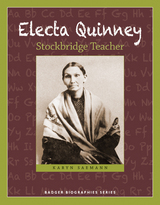 Electa Quinney: Stockbridge Teacher
Karyn Saemann
Wisconsin Historical Society Press, 2014 Electa Quinney loved to learn. Growing up in the early 1800s in New York, she went to some of the best boarding schools. There she learned how to read, write, and solve tough math problems—she even learned how to do needlework. Electa decided early on that she wanted to become a teacher so she could pass her knowledge on to others. But life wasn’t simple. Electa was a Stockbridge Indian, and her tribe was being pressured by the government and white settlers to move out of the state. So in 1828, Electa and others in her tribe moved to Wisconsin. Almost as soon as she arrived, Electa got to work again, teaching in a log building that also served as the local church. In that small school in the woods, Electa became Wisconsin’s very first public school teacher, educating the children of Stockbridge-Munsee Band of the Mohican Indians as well as the sons and daughters of nearby white settlers and missionaries. Electa’s life provides a detailed window onto pioneer Wisconsin and discusses the challenges and issues faced by American Indians in the nineteenth century. Through it all, Electa’s love of learning stands out, and her legacy as Wisconsin’s first public school teacher makes her an inspiration to students of today.
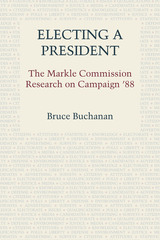 Electing a President: The Markle Commission Research on Campaign '88
By Bruce Buchanan, Lloyd N. Morrisett, and Robert M. O'Neil
University of Texas Press, 1991 The image of a prison with a revolving door helped George Bush win the presidency in 1988, but did negative advertising damage the electoral process itself? Why did campaign ’88 represent an all-time low in the minds of many voters? These are some of the questions that impel this thought-provoking analysis of the 1988 presidential election, sponsored by the John and Mary R. Markle Foundation.
Using extensive empirical studies of the candidates, the media, and the voters, Bruce Buchanan, executive director of the Markle Commission on the Media and the Electorate, traces the roots of popular dissatisfaction with the 1988 election. Buchanan argues that the campaign drifted too far from popular ideals of how democratic processes ought to work—that the substitution of negative advertising and quickie “sound bites” for reasoned debate on national problems and issues alienated much of the electorate, causing the lowest voter turnout in sixty-four years.
Negative campaigning, however, cannot bear the full blame for the 1988 election. While the Markle Commission offers specific recommendations for improvements in candidate and media performance, the great need, says Buchanan, is for voters to reclaim the electoral process, to insist that candidates and the media give enough information about positions and programs for voters to make informed choices. Voters need to be educated out of the idea that democratic elections and representative government can somehow occur without the participation of ordinary citizens.
At a time when the American democratic process is being used as a model by newly independent nations around the world, it is particularly appropriate to ask how well it works at home. Electing a President does just that.
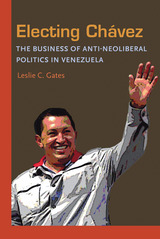 Electing Chavez: The Business of Anti-neoliberal Politics in Venezuela
Leslie C. Gates
University of Pittsburgh Press, 2010 Venezuela’s Hugo Chávez was the first anti-neoliberal presidential candidate to win in the region. Electing Chávez examines the circumstances that facilitated this pivotal election. By 1998, Venezuela had been rocked by two major scandals—the exchange rate incidents of the 1980s and the banking crisis of 1994—and had suffered rising social inequality. These events created a deep-seated distrust of establishment politicians. Chávez’s 1998 victory, however, was far from inevitable. Other presidential candidates also stood against corruption and promised a clean break from politics as usual. Moreover, business opposition to Chávez’s anti-neoliberal candidacy should have convinced voters that his victory would provoke a downward economic spiral.
In Electing Chávez, Leslie C. Gates examines how Chávez won over voters and even obtained the secret allegiance of a group of business “elite outliers,” with a reinterpretation of the relationship between business and the state during Venezuela’s era of two-party dominance (1959-1998). Through extensive research on corruption and the backgrounds of political leaders.
Gates tracks the rise of business-related corruption scandals and documents how business became identified with Venezuela’s political establishment. These trends undermined the public’s trust in business and converted business opposition into an asset for Chávez. This long history of business-tied politicians and the scandals they often provoked also framed the decisions of elite outliers. As Gates reveals, elite outliers supported Chávez despite his anti-neoliberal stance because they feared that the success of Chávez’s main rival would deny them access to Venezuela’s powerful oil state.
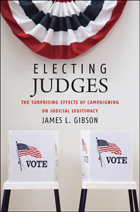 Electing Judges: The Surprising Effects of Campaigning on Judicial Legitimacy
James L. Gibson
University of Chicago Press, 2012 In Electing Judges, leading judicial politics scholar James L. Gibson responds tothe growing chorus of critics who fear that the politics of running for office undermine judicial independence and even the rule of law. While many people have opinions on the topic, few have supported them with actual empirical evidence. Gibson rectifies this situation, offering the most systematic and comprehensive study to date of the impact of campaigns on public perceptions of fairness, impartiality, and the legitimacy of elected state courts—and his findings are both counterintuitive and controversial. Gibson finds that ordinary Americans do not conclude from campaign promises that judges are incapable of making impartial decisions. Instead, he shows, they understand the process of deciding cases to be an exercise in policy making, rather than of simply applying laws to individual cases—and consequently think it’s important for candidates to reveal where they stand on important issues. Negative advertising also turns out to have a limited effect on perceptions of judicial legitimacy, though the same cannot be said for widely hated campaign contributions. Taking both the good and bad into consideration, Gibson argues persuasively that elections are ultimately beneficial in boosting the institutional legitimacy of courts, despite the slight negative effects of some campaign activities. Electing Judges will initiate a lively debate inside both the halls of justice and the academy.
The Election of 1827 in France
Sherman Kent
Harvard University Press, 1975 This book is the first full-dress electoral history of the French Restoration. It examines the institutional structure of Restoration elections as well as the play of political factors in the final years of the Bourbon monarchy. It tells why the French king Charles X and his prime minister Joseph de Villele decided to call the general election of 1827, and the reasons for the dramatic defeat they suffered; the means employed to elect a chamber of deputies that would sustain the reactionary leanings of the king; and the range of efforts by both left and extreme right oppositions to win the election. The study rests upon extensive research in the national and departmental archives of France and on a close reading of the press and pamphlet literature.
Elections and Political Order in Russia
Peter Lentini
Central European University Press, 1995 Russia held its first multiparty election in over 75 years in the hope that it would usher in a new democratic political order. However, the success of right-wing populist Vladimir Zhirinovsky's Liberal Democratic Party of Russia and other anti-reform forces shocked the world. This study analyzes the background, events and main players of the elections, and examines their significance for the Russian political system. Describing in detail the December 1993 voting, it provides historical, political, regional and sociocultural interpretations of the elections and their results. The work attempts to answer such questions as: what were the keys to Zhirinovsky's success?; who are the new players on Russia's political scene?; what role will the new institutions play in Russian politics; and who actually holds power in Russia?
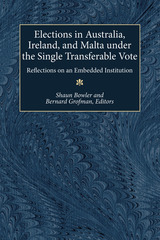 Elections in Australia, Ireland, and Malta under the Single Transferable Vote: Reflections on an Embedded Institution
Shaun Bowler and Bernard Grofman, Editors
University of Michigan Press, 2000 The Single Transferable Vote, or STV, is often seen in very positive terms by electoral reformers, yet relatively little is known about its actual workings beyond one or two specific settings. This book gathers leading experts on STV from around the world to discuss the examples they know best, and represents the first systematic cross-national study of STV. Furthermore, the contributors collectively build an understanding of electoral systems as institutions embedded within a wider social and political context, and begins to explain the gap between analytical models and the actual practice of elections in Australia, Ireland, and Malta. Rather than seeing electoral institutions in purely mechanical terms, the collection of essays in this volume shows that the effects of electoral system may be contingent rather than automatic. On the basis of solid empirical evidence, the volume argues that the same political system can, in fact, have quite different effects under different conditions.
Contributors to the volume are Shaun Bowler, David Farrell, Michael Gallagher, Bernard Grofman, Wolfgang Hirczy, Colin Hughes, J. Paul Johnston, Michael Laver, Malcom Mackerras, Michael Maley, Michael Marsh, Ian McAllister, and Ben Reilly.
Shaun Bowler is Professor of Political Science, University of California, Riverside. Bernard Grofman is Professor of Political Science, University of California, Irvine.
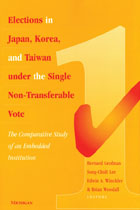 Elections in Japan, Korea, and Taiwan under the Single Non-Transferable Vote: The Comparative Study of an Embedded Institution
Bernard Grofman, Sung-Chull Lee, Edwin A. Winckler, and Brian Woodall, Editors
University of Michigan Press, 1999 In recent years there has been a marked resurgence of interest in the effects of electoral laws on important aspects of politics such as party competition. In this volume, a distinguished group of scholars looks at the impact of one set of electoral rules--the single non-transferable vote--on electoral competition in Japan, Korea and Taiwan. Under this plan citizens are allowed one vote even though there is more than one seat to be filled. In comparative studies of the adoption and rejection of the single nontransferable vote and the consequences of its use across different settings, the contributors explore the differences in the operation and effects of the application of the same rule in different countries. Arguing that any single feature of a political system is embedded in a political structure and cannot be understood in isolation, the authors demonstrate how the same rule can have different consequences depending on the context in which it operates. The contributors offer fresh insights into the comparative study of political institutions as well as into the operation of particular electoral rules.
In addition to the editors, the contributors include Kathleen Bawn, John Boland, Jean-Marie Bouissou, Gary Cox, John Fu-Sheng Hsieh, Arend Lijphart, Emerson Niou, Steven R. Reed, and Frances Rosenbluth, among others.
Bernard Grofman is Professor of Political Science, University of California at Irvine. Edwin A. Winckler is at the East Asian Institute, Columbia University. Brian Woodall is Assistant Professor in the School of International Affairs, Georgia Institute of Technology. Sung-Chull Lee is Assistant Professor of Political Science, University of California at Irvine.
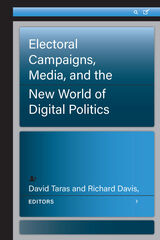 Electoral Campaigns, Media, and the New World of Digital Politics
David Taras and Richard Davis, Editors
University of Michigan Press, 2022 Today, political leaders and candidates for office must campaign in a multimedia world through traditional forums—newspapers, radio, and television—as well as new digital media, particularly social media. Electoral Campaigns, Media, and the New World of Digital Politics chronicles how Twitter, Facebook, Reddit, email, and memes are used successfully and unsuccessfully to influence elections. Each of these platforms have different affordances and reach various audiences in different ways. Campaigns often have to wage different campaigns on each of these mediums. In some instances, they are crucial in altering coverage in the mainstream media. In others, digital media remains underutilized and undeveloped. As has always been the case in politics, outcomes that depend on economic and social conditions often dictate people’s readiness for certain messages. However, the method and content of those messages has changed with great consequences for the health and future of democracy.
This book answers several questions: How do candidates/parties reach audiences that are preoccupied, inattentive, amorphous, and bombarded with so many other messages? How do they cope with the speed of media reporting in a continuous news cycle that demands instantaneous responses? How has media fragmentation altered the campaign styles and content of campaign communication, and general campaign discourse? Finally and most critically, what does this mean for how democracies function?
 Electoral Competition Institutional Ch
Beer
University of Notre Dame Press, 2003 Caroline Beer's new book explores the consequences of democratic politics in Mexico. Focusing on struggles at the subnational level, she assesses how increased electoral competition alters the long-term distribution of power across political institutions in ways that shift power away from established elites and into the hands of ordinary citizens.
Electoral Competition and Institutional Change in Mexico includes compelling case study comparisons of three states with very different experiences with electoral democracy: Guanajuato, Hidalgo, and San Luis PotosÃ. These cases are then situated within a broader quantitative analysis of all thirty-one Mexican states. Beer's research reverses the causal arrow of many standard studies by focusing on the causes of institutional change rather than the consequences of institutional design. Her analysis reveals that the process of increasing electoral competition has unleashed new forces that have slowly eroded the power of centralized, authoritarian elites in Mexico.
Utilizing a theoretical framework that draws on insights from classic democratic theory, new institutionalist literature, and current critiques of contemporary Latin American democracy, Beer's important work represents the first comparative study of state legislatures and governors in Mexico and offers compelling insight into the bottom-up dynamics of Mexico's transition to democracy.
CAROLINE C. BEER is assistant professor of political science at the University of Vermont.
----------
"Electoral Competition and Institutional Change in Mexico is an original and provocative exploration of significant trends in local decision making, notably the behavior of state legislatures in a changing, pluralistic environment. Based on outstanding, extensive field research, Beer provides an insightful window into the political behavior of local actors, which can easily be transferred to understanding future decision-making activities on the federal level, as well as equally apt insights into the transformation of two future, crucial groups of national leaders in this decade, governors and state legislators." --Roderic Ai Camp, Claremont McKenna College
"This is a first-rate piece of research that makes a genuine contribution by analyzing an important yet little studied aspect of the democratization process in Mexico." --Richard Snyder, University of Illinois at Urbana-Champaign
"Beer's book departs from standard studies of democratization by focusing on subnational politics, the uneven nature of democratic transition across subnational units, and the bottom-up dynamics of transition." --Perspectives on Political Science
"Beer's straightforward and accessible writing style, methodological rigor, and academic contribution are first class. Beer's book is a must for students of Mexican politics and of the democratization process in general. Essential." --Choice
The Electoral Consequences of Third Way Welfare State Reforms: Social Democracy’s Transformation and Its Political Costs
Christoph Arndt
Amsterdam University Press, 2013 In recent decades, Western nations have increasingly implemented encompassing welfare state reforms that try to establish equality through social programs and governmental intervention rather than direct redistribution of funds. In this book, Christoph Arndt examines the political ramifications of reforming deeply entrenched welfare states through a careful comparative analysis of four European countries that recalibrated their system of social protection under social democratic governments. Arndt discovers that the "third way" has produced a setback for social democrats and that the nature and scale of this setback is contingent on each country’s electoral system.
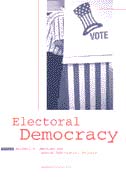 Electoral Democracy
Michael B. MacKuen and George Rabinowitz, Editors
University of Michigan Press, 2003 Electoral Democracy pushes the boundaries of our current understanding of democratic politics and government. Some of the most distinguished scholars in the discipline were asked to write about a topic of continuing interest to their ongoing research programs. The fruit of their efforts incorporates the best of contemporary work on public opinion and democracy. Taking different perspectives, the authors assess the nature of citizens' political beliefs and values and then consider the ways that those views connect with elite policy-making. The combined set of essays provides the reader a good view of current research, suggests novel theoretical advances, and in the end invites a renewed interest in the quality and durability of electoral democracy.
Michael B. MacKuen is Burton Craige Professor of Political Science at the University of North Carolina. George Rabinowitz is Burton Craige Professor of Political Science at the University of North Carolina.
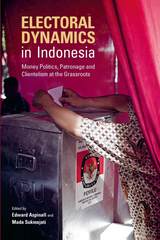 Electoral Dynamics in Indonesia: Money Politics, Patronage and Clientelism at the Grassroots
Edited by Edward Aspinall and Mada Sukmajati
National University of Singapore Press, 2016 How do politicians win elected office in Indonesia? To find out, research teams fanned out across the country prior to Indonesia’s 2014 legislative election to record campaign events, interview candidates and canvassers, and observe their interactions with voters. They found that at the grassroots political parties are less important than personal campaign teams and vote brokers who reach out to voters through a wide range of networks associated with religion, ethnicity, kinship, micro enterprises, sports clubs and voluntary groups of all sorts. Above all, candidates distribute patronage—cash, goods and other material benefits—to individual voters and to communities. Electoral Dynamics in Indonesia brings to light the scale and complexity of vote buying and the many uncertainties involved in this style of politics, providing an unusually intimate portrait of politics in a patronage-based system.
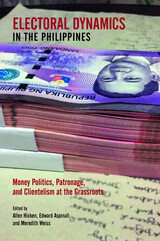 Electoral Dynamics in the Philippines: Money Politics, Patronage and Clientelism at the Grassroots
Edited by Allen Hicken, Edward Aspinall, and Meredith Weiss
National University of Singapore Press, 2019 The role of clientism, political machines, and money in grassroots electioneering in the Philippines has been much analyzed by those who study the subject, but never as extensively as Allen Hicken, Edward Aspinall, and Meredith Weiss do in Electoral Dynamics in the Philippines. Combining in-depth ethnographic fieldwork in localities across the Philippines during the 2016 elections with polling data and national comparative data, this study sheds light on the organization of elections and electioneering across the Philippines. How do candidates choose to appeal to voters, and how do they get out the vote? How do voters respond to different kinds of appeals? How important are patronage and clientism? What are the networks within which patronage is delivered? What do the political machines look like in elections influenced by social media? The book identifies commonalities and differences across the Philippines while speaking to current debates in political science about elections in developing democracies, the structure and organization of clientelism, and the role of money in elections.
Electoral Incentives in Congress
Jamie L. Carson and Joel Sievert
University of Michigan Press, 2018 David Mayhew’s 1974 thesis on the “electoral connection” and its impact on legislative behavior is the theoretical foundation for research on the modern U.S. Congress. Mayhew contends that once in office, legislators pursue the actions that put them in the best position for reelection. Carson and Sievert examine how electoral incentives shaped legislative behavior throughout the nineteenth century by looking at patterns of turnover in Congress; the renomination of candidates; the roles of parties in recruiting candidates and their broader effects on candidate competition; and, finally by examining legislators’ accountability. The results have wide-ranging implications for the evolution of Congress and the development of legislative institutions over time.
Electoral Reform and Democracy in Malaysia
Edited by Helen Ting M. H. and Donald L. Horowitz
National University of Singapore Press, 2023 Big political changes in Malaysia since 2018 have raised high expectations for electoral reform but much remains to be achieved. This impressive study takes stock of the state of democracy in Malaysia by offering readers a deep but readily understandable analysis of an array of electoral reform issues. Here is a resource that will interest the politically engaged as well as scholars of political process, a study that is both wide-ranging and focused, and a primer on electoral politics that will be of wide interest far beyond Malaysia.
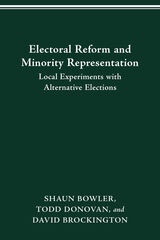 ELECTORAL REFORM AND MINORITY REPRESENTATION: LOCAL EXPERIMENTS WITH ALTERNATIVE ELECTIONS
SHAUN BOWLER
Ohio State University Press, 2003 Questions of minority representation have long plagued the U.S. voting systems. The standard election often leaves political, racial, or ethnic minorities with little chance of being represented. Race-conscious districting remains the primary policy tool used for providing representation of racial and ethnic minorities in the United States—and it continues to generate tremendous conflict. Can alternatives to race-conscious, single-member districts offer benefits that extend beyond simply providing descriptive representations of minorities? This study examines one such “semi-proportional” representation election system: Cumulative Voting (CV). For over a decade, scores of local U.S. governments have been elected by Cumulative Voting. This provides us with the ability to examine the effects of CV elections over time. Moreover, the use of CV in the United States allows us to compare politics in places that adopted CV to highly similar places that did not. Electoral Reform and Minority Representation shares evidence that CV elections can produce minority representation that matches levels generated with the drawing of race-conscious “majority-minority” districting. It also offers evidence that the quality of democratic processes in CV communities is in several ways higher that those under districts. Given America’s growing racial and ethnic diversity, and given successful legal challenges that limit the use of race-conscious districting Electoral Reform and Minority Representation suggests that Cumulative Voting may be a better way to achieve minority representation in U.S. politics.
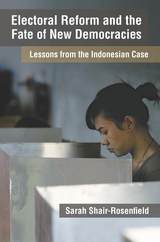 Electoral Reform and the Fate of New Democracies: Lessons from the Indonesian Case
Sarah Shair-Rosenfield
University of Michigan Press, 2019 When and why do democratic political actors change the electoral rules, particularly regarding who is included in a country’s political representation? The incidences of these major electoral reforms have been on the rise since 1980.
Electoral Reform and the Fate of New Democracies argues that elite inexperience may constrain self-interest and lead elites to undertake incremental approaches to reform, aiding the process of democratic consolidation. Using a multimethods approach, the book examines three consecutive periods of reform in Indonesia, the world’s largest Muslim majority country and third largest democracy, between 1999 and 2014. Each case study provides an in-depth process tracing of the negotiations leading to new reforms, including key actors in the legislature, domestic civil society, international experts, and government bureaucrats. A series of counterfactual analyses assess the impact the reforms had on actual election outcomes, versus the possible alternative outcomes of different reform options discussed during negotiations. With a comparative analysis of nine cases of iterated reform processes in other new democracies, the book confirms the lessons from the Indonesian case and highlights key lessons for scholars and electoral engineers.
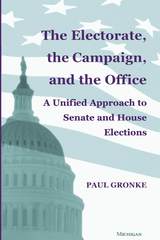 The Electorate, the Campaign, and the Office: A Unified Approach to Senate and House Elections
Paul Gronke
University of Michigan Press, 2001 Voters simultaneously choose among candidates running for different offices, with different terms, and occupying different places in the Constitutional order. Conventional wisdom holds that these overlapping institutional differences make comparative electoral research difficult, if not impossible. Paul Gronke's path-breaking study compares electoral contexts, campaigns, and voter decision-making in House and Senate elections. Gronke's book offers new insights into how differences--and similarities--across offices structure American elections.
Congressional elections research holds that Senate races are more competitive than House contests because states are more heterogeneous, or because candidates are more prominent and raise more money, or because voters have fundamentally different expectations. Because House and Senate contests are seldom compared, we have little empirical evidence to test the various hypotheses about how voters make choices for different offices. Gronke finds that the similarities between House and Senate elections are much greater than previously thought and that voters make their decisions in both races on the same bases.
Gronke first looks at differences in congressional districts and states, showing that context does not really help us understand why Senate elections feature better candidates, higher spending, and closer outcomes. Next, he turns to campaigns. Surprisingly, over a turbulent twenty-year period, House and Senate candidacies have retained the same competitive dynamics.
Gronke also considers voting behavior in House and Senate elections. Focusing on the 1988 and 1990 elections, he argues that voters do not distinguish between institutions, applying fundamentally the same decision rule, regardless of the office being contested. Gronke closes by considering the implications of his results for the way we relate settings, electoral dynamics, and institutional arrangements.
This book will appeal to those interested in Congress, political campaigning, and voting.
Paul Gronke is Associate Professor of Political Science at Reed College.
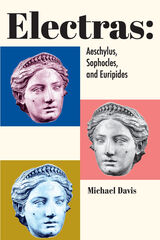 Electras: Aeschylus, Sophocles, and Euripides
Michael Davis
St. Augustine's Press, 2023 Michael Davis revisits questions of interpretation in Greek tragedy emerging in the thought of the late Seth Benardete. While this is not the book Benardete would have written, it wrestles with problems that bear his indelible mark. In the extant tragedies of Aeschylus, Sophocles, and Euripides, only one story is treated by all three––the tale of Electra. Davis endeavors to develop Benardete's understanding of the story's deeper meaning, as well as the connections that might be drawn between the three authors. He follows a thread that brings Aeschylus, Sophocles, and Euripides closer together according to a powerful and shared theme––namely, that the female is the deeper (even if less easily accessible and articulated) of the pair of fundamental principles constituting human beings.
Davis accomplishes much more than an exegetical bridge as he connects us with ancient memory and wisdom. "When we cannot resist the temptation to recoil morally from their terminology, we risk the tragedy of losing their profound thoughts about our humanity––their philosophical anthropology." Davis has remarkably made of a niche study a stunning source material for more universal questions. This is a book that is as timely as it is ageless.
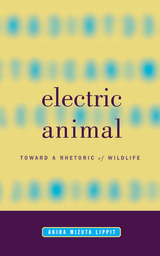 Electric Animal: Toward a Rhetoric of Wildlife
Akira Mizuta Lippit
University of Minnesota Press, 2000 A fascinating exploration of the symbolic place animals hold within our culture. Differentiation from animals helped to establish the notion of a human being, but the disappearance of animals now threatens that identity. This is the argument underlying Electric Animal, a probing exploration of the figure of the animal in modern culture. Akira Mizuta Lippit shows us the animal as a crucial figure in the definition of modernity—essential to developments in the natural sciences and technology, radical transformations in modern philosophy and literature, and the advent of psychoanalysis and the cinema. Moving beyond the dialectical framework that has traditionally bound animal and human being, Electric Animal raises a series of questions regarding the idea of animality in Western thought. Can animals communicate? Do they have consciousness? Are they aware of death? By tracing questions such as these through a wide range of texts by writers ranging from Friedrich Nietzsche to Jacques Derrida, Sigmund Freud to Vicki Hearne, Lewis Carroll to Franz Kafka, and Sergei Eisenstein to Gilles Deleuze, Lippit arrives at a remarkable thesis, revealing an extraordinary logical consensus in Western thought: animals do not have language and hence cannot die. The animal has, accordingly, haunted thought as a form of spectral and undead being. Lippit demonstrates how, in the late nineteenth century, this phantasmic concept of animal being reached the proportions of an epistemological crisis, engendering the disciplines and media of psychoanalysis, modern literature, and cinema, among others. Against the prohibitive logic of Western philosophy, these fields opened a space for rethinking animality. Technology, usually thought of in opposition to nature, came to serve as the repository for an unmournable animality-a kind of vast wildlife museum. A highly original work that charts new territory in current debates over language and mortality, subjectivity and technology, Electric Animal brings to light fundamental questions about the status of representation—of the animal and of ourselves—in the age of biomechanical reproduction.
 The Electric Car: Development and future of battery, hybrid and fuel-cell cars
Mike H. Westbrook
The Institution of Engineering and Technology, 2001 This book covers the development of electric cars from their early days to pure electric, fuel-cell and new hybrid models in production. It covers the latest technological issues faced by automotive engineers working on electric cars, including charging, infrastructure, safety and costs, as well as making predictions about future developments and vehicle numbers. Considerable work has gone into electric car and battery development in the last ten years, with the prospect of substantial improvements in range and performance in battery cars as well as in hybrids and those using fuel cells. The book comprehensively covers this important subject and will be of particular interest to engineers working on electric vehicle design, development and use, as well as managers interested in the key business factors vital for the successful transfer of electric cars into the mass market.
The Electric City: Energy and the Growth of the Chicago Area, 1880-1930
Harold L. Platt
University of Chicago Press, 1991 No symbol of progress in our century is more galvanizing than electricity—electric power and the technology it has spawned. The "invisible world" of electric energy that was emerging at the turn of the century is one we take for granted, but its influence on the growth and quality of city life was, and remains, profound. Using Chicago as a test case, Harold L. Platt investigates the emergence of an urban-based, energy-intensive society over the course of half a century in this first book-length history of energy use in the city.
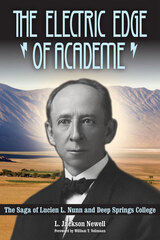 The Electric Edge of Academe: The Saga of Lucien L. Nunn and Deep Springs College
L. Jackson Newell
University of Utah Press, 2015 Here is a look at the life and legacy of an irrepressible innovator. Pushing against both social convention and technological boundaries, L.L. Nunn left enduring marks on economic and social history, labor development, and, educational reform. The Electric Edge of Academe is a bold portrayal of this progressive-era hydroelectric power magnate who, driven by a dynamic conscience, also became a force for social change and educational experimentation. In 1891, Nunn, working with Tesla and Westinghouse, pioneered the world’s first commercial production of high-tension alternating current (AC) for long-distance transmission—something Thomas Edison deemed dangerous and irresponsible. After creating the Telluride Power Company, Nunn constructed the state-of-the-art Olmsted Power Plant in Provo Canyon and the Ontario Power Works at Niagara Falls. To support this new technology, he developed an imaginative model of industrial training that became so compelling that he ultimately abandoned his entrepreneurial career to devote his wealth and talents to experimenting with a new model of liberal education. In 1917, Nunn founded Deep Springs College in eastern California. The school remains one of the most daring, progressive, and selective institutions of higher learning in America. Newell examines how Nunn’s radical educational ideas have survived internal and external challenges for nearly a century and explores their relevance today.
Electric Fuses
A. Wright
The Institution of Engineering and Technology, 2004 Wright and Newbery's classic guide to the world of electric fuses has been substantially revised and remains the comprehensive reference work on the subject.
Electric Fuses: Fundamentals and new applications
Nigel Nurse
The Institution of Engineering and Technology, 2022 Fuses are designed to operate when over-currents, large and small, occur within electrical equipment; they thus interrupt the flow of current, preventing damage. They are needed for various power electric systems, for stationary and automotive applications, as well as power grid components like PV systems and distribution lines. Different types of equipment and voltages require special fuses, and their behaviour must be understood to guarantee correct choice and safe operation.
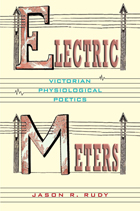 Electric Meters: Victorian Physiological Poetics
Jason Rudy
Ohio University Press, 2009 Victorian poetry shocks with the physicality of its formal effects, linking the rhythms of the human body to the natural pulsation of the universe. In Electric Meters: Victorian Physiological Poetics Jason R. Rudy connects formal poetic innovations to developments in the electrical and physiological sciences, arguing that the electrical sciences and bodily poetics cannot be separated, and that they came together with special force in the years between the 1830s, which witnessed the invention of the electric telegraph, and the 1870s, when James Clerk Maxwell’s electric field theory transformed the study of electrodynamics.
Combining formal poetic analysis with cultural history, Rudy traces the development of Victorian physiological poetics from the Romantic poetess tradition through to the works of Alfred Tennyson, the “Spasmodic” poets, Elizabeth Barrett Browning, Gerard Manley Hopkins, and Algernon Swinburne, among others. He demonstrates how poetic rhythm came increasingly to be understood throughout the nineteenth century as a physiological mechanism, as poets across class, sex, and national boundaries engaged intensely and in a variety of ways with the human body’s subtle response to rhythmic patterns. Whether that opportunity for transcendence was interpersonal or spiritual in nature, nineteenth–century poets looked to electricity as a model for overcoming boundaries, for communicating across the gaps between sound and sense, between emotion and thought, and—perhaps—between individuals in the modern world.
Electric Meters will appeal to those interested in poetry of any period and particularly those interested in nineteenth–century culture and history.
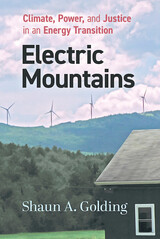 Electric Mountains: Climate, Power, and Justice in an Energy Transition
Shaun A. Golding
Rutgers University Press, 2021 Climate change has shifted from future menace to current event. As eco-conscious electricity consumers, we want to do our part in weening from fossil fuels, but what are we actually a part of?
Committed environmentalists in one of North America’s most progressive regions desperately wanted energy policies that address the climate crisis. For many of them, wind turbines on Northern New England’s iconic ridgelines symbolize the energy transition that they have long hoped to see. For others, however, ridgeline wind takes on a very different meaning. When weighing its costs and benefits locally and globally, some wind opponents now see the graceful structures as symbols of corrupted energy politics.
This book derives from several years of research to make sense of how wind turbines have so starkly split a community of environmentalists, as well as several communities. In doing so, it casts a critical light on the roadmap for energy transition that Northern New England’s ridgeline wind projects demarcate. It outlines how ridgeline wind conforms to antiquated social structures propping up corporate energy interests, to the detriment of the swift de-carbonizing and equitable transformation that climate predictions warrant. It suggests, therefore, that the energy transition of which most of us are a part, is probably not the transition we would have designed ourselves, if we had been asked.
 Electric Power in Brazil: Entrepreneurship in the Public Sector
Judith Tendler
Harvard University Press After World War II, and particularly in the early 1950s, Brazil’s major industrial region suffered a chronic electric power shortage resulting from the inadequate expansion of the Brazilian Traction, Light, and Power Company, the most important utility in the country. “The Light,” as it is called in Brazil, was reluctant to commit itself to continuing investment because of the impossibility of securing a satisfactory price for its product. The intractability of the rate problem, and the consequent insufficiency of supply, stemmed primarily from the foreign ownership of the company. The Light was the classic case of a foreign utility enjoying monopoly privileges to supply a public service. Proposed rate increases, construed as predatory by the public and the host government, met with strong popular resistance.
Throughout this period of stalemate, however, power production grew at a pace that was high by any standards. This impressive growth was to some extent the result of the government’s entry into the power sector as producer, coexisting with the foreign utility. State-controlled companies were gradually taking over the function of power generation while the Light began to recede into distribution, an activity more suited to its reluctance to make heavy financial commitments.
Judith Tendler, taking as her point of departure the different technological and administrative characteristics of power generation and distribution, illustrates how a modus vivendi was finally established which allowed the industry as a whole to expand in spite of strong antagonism between the private and public sectors. In this topical case study, the author sharpens our vision of the development scene by pointing up opportunities for progress that are embedded in seemingly trivial properties of technology.
Electric Railways: 1880-1990
Michael C. Duffy
The Institution of Engineering and Technology, 2003 Electric Railways 1880-1990 explores the history of the integration of both electric and diesel-electric railway systems and identifies the crucial role that diesel-electric traction played in the development of wireless electrification. The evolution of electrical technology and the modern railway produced innovations in engineering that were integral to the development of traction, power and signalling systems. This book presents a thorough survey of electric railway development from the earliest days pf the London Underground to modern electrified main line trains. The distinction between 'enforced electrification' and 'economic electrification' is also discussed and the pioneering role of J.J. Heilmann assessed.
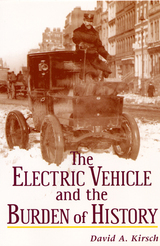 The Electric Vehicle and the Burden of History
Kirsch, David A
Rutgers University Press, 2000 In the late 1890s, at the dawn of the automobile era, steam, gasoline, and electric cars all competed to become the dominant automotive technology. By the early 1900s, the battle was over and internal combustion had won. Was the electric car ever a viable competitor? What characteristics of late nineteenth-century American society led to the choice of internal combustion over its steam and electric competitors? And might not other factors, under slightly differing initial conditions, have led to the adoption of one of the other motive powers as the technological standard for the American automobile?
David A. Kirsch examines the relationship of technology, society, and environment to choice, policy, and outcome in the history of American transportation. He takes the history of the Electric Vehicle Company as a starting point for a vision of an “alternative” automotive system in which gasoline and electric vehicles would have each been used to supply different kinds of transport services. Kirsch examines both the support—and lack thereof—for electric vehicles by the electric utility industry. Turning to the history of the electric truck, he explores the demise of the idea that different forms of transportation technology might coexist, each in its own distinct sphere of service.
A main argument throughout Kirsch’s book is that technological superiority cannot be determined devoid of social context. In the case of the automobile, technological superiority ultimately was located in the hearts and minds of engineers, consumers and drivers; it was not programmed inexorably into the chemical bonds of a gallon of refined petroleum. Finally, Kirsch connects the historic choice of internal combustion over electricity to current debates about the social and environmental impacts of the automobile, the introduction of new hybrid vehicles, and the continuing evolution of the American transportation system.
Electric Vehicle Charge Point Infrastructure: From planning to operation
David Trousdale
The Institution of Engineering and Technology, 2026 The use of electric vehicles (EVs) is a topic of great importance, given the continued drive towards net zero and the phase out of sale of new petrol/diesel vehicles. However, a key concern is the need to install enough charge point infrastructure to grow in tandem with increasing EV adoption. Lack of EV charge point infrastructure and range anxiety are often cited as barriers to EV uptake. Therefore, a closer look is needed to understand how to model and build suitable EV charge point infrastructure, and how this can contribute to the broader aim of decarbonising transport.
Electric Vehicle Technologies: Renewable energy for the road
John Samuel
The Institution of Engineering and Technology, 2025 Electric Vehicle Technologies: Renewable energy for the road traces electric vehicle technology from its beginnings through the current state-of-the-art and onwards to future possibilities. Bringing together insights from technical and commercial perspectives, this book is collated and written by two experts - one a pioneer in the field of EV whose career spans decades of design and development, the other a highly experienced technical specialist in EV drive system and megawatt rapid charge system design.
Electrical Craft Principles, Volume 1
John Whitfield
The Institution of Engineering and Technology, 2009 This is the first of a two-volume work covering the electrical principles syllabuses of all of the major examining bodies including the City & Guilds of London Institute's electrical craft courses. It is also suitable for a wide range of other courses, including the first three years of the BTEC electrical series. Great care has been taken to ensure that the text fully covers the content of the syllabuses concerned, both as published and as interpreted by the examiners in the past.
Electrical Craft Principles, Volume 2
John Whitfield
The Institution of Engineering and Technology, 2009 This is the second of a two-volume work covering the electrical principles syllabuses of all of the major examining bodies including the City & Guilds of London Institute's electrical craft courses. It is also suitable for a wide range of other courses, including the first three years of the BTEC electrical series. Great care has been taken to ensure that the text fully covers the content of the syllabuses concerned, both as published and as interpreted by the examiners in the past.
 Electrical Degradation and Breakdown in Polymers
L.A. Dissado
The Institution of Engineering and Technology, 1992 Breakdown is fascinating to the scientist and frustrating to the engineer! As well as advancing the scientific and engineering understanding of electrical degradation and breakdown in polymers, this book forms a comprehensive and international review of the state-of-the-art. Topics include: water and electrical treeing; charge transport; 'classical' and filamentary thermal, electromechanical, electronic and partial discharge breakdown models; the stochastic nature of breakdown and statistical characterisation techniques; and engineering considerations for breakdown testing and degradation assessment. The treatment presumes little prior knowledge but develops into an advanced understanding of new concepts such as the fractal-like nature of trees. Although the book is primarily aimed at scientists and engineers practising in the field, a broad introductory section has been included to cater for a wide audience including those new to the subject area. This comprises a description of the nature of the polymers, basic solid-state physics and an introduction to degradation and breakdown.
Electrical Design for Ocean Wave and Tidal Energy Systems
Raymond Alcorn
The Institution of Engineering and Technology, 2013 Renewable energy is expected to play a major part in future energy supplies, both to reduce the impact on the world climate and also to make up for any shortfall in conventional energy sources. Ocean energy has the potential to make a significant contribution to future renewable energy supplies as identified in recent reports from the Intergovernmental Panel for Climate Change and the International Energy Agency. Ocean energy is an emerging industry sector and there are a number of promising developments under way. Significant commercial deployments in the gigawatt range are envisaged over the next 10 to 20 years in Europe, USA, Asia and South America.
Electrical Installation Design Guide: Calculations for Electricians and Designers
The Institution of Engineering and Technology
The Institution of Engineering and Technology, 2019 Electrical Installation Design Guide: Calculations for Electricians and Designers provides step-by-step guidance on the design of electrical installations. The guide will be useful for apprentices and trainees carrying out the calculations necessary for a basic installation and has been fully updated to BS 7671:2018.
Electrical Installation Design Guide: Calculations for Electricians and Designers
The Institution of Engineering and Technology
The Institution of Engineering and Technology, 2022 Electrical Installation Design Guide: Calculations for Electricians and Designers provides step-by-step guidance on the design of electrical installations. The guide will be useful for apprentices and trainees carrying out the calculations necessary for a basic installation and has been fully updated to BS 7671:2018+A2:2022.
Electrical Operation of Electrostatic Precipitators
Ken Parker
The Institution of Engineering and Technology, 2003 The electrostatic precipitator remains one of the most cost-effective means of controlling the emission of particulates from most industrial processes, including pollution from power stations. The author reviews the basic theory and operation of precipitators, the characteristics of gas and particulates that impact on design and operation, and the design of high- and mains-frequency rectification equipment. Chapters also cover performance monitoring and enhancement, and fault detection.
Electrical Safety: A guide to the causes and prevention of electrical hazards
J. Maxwell Adams
The Institution of Engineering and Technology, 1994 This book explains the hazards associated with electricity in its many forms, including electromagnetic radiation. It describes methods of reducing risks to health and to the environment, giving rules and codes of practice to be followed. Guidelines are also given for the use of electrical equipment in specialised environments (such as locations subject to explosive gases and flammable dusts), the guarding of machine tools and the control of earth currents.
Electrical Shock Waves in Power Systems: Traveling Waves in Lumped and Distributed Circuit Elements
Reinhold Rudenberg
Harvard University Press This work examines the generation and propagation of shock waves in electric power systems. Such transients, resulting from short circuits, ground faults, and lightning strokes on lines, cables, and machines, have become the governing considerations in the design of high-voltage power systems and their components. The treatment is extended to distributed circuit elements. The distributed parameters and the time taken to propagate electromagnetic energy are given detailed examination. Typical examples have been selected so as to allow an insight into the fundamental physical behavior.
Electrical Steels for Rotating Machines
Philip Beckley
The Institution of Engineering and Technology, 2002 Electrical steels are used to form the ferromagnetic cores of motors, generators and transformers. This book provides an insight for the electrical design engineer into what properties may be expected from electrical steels and how these properties may best be exploited in machine design.
|
|

